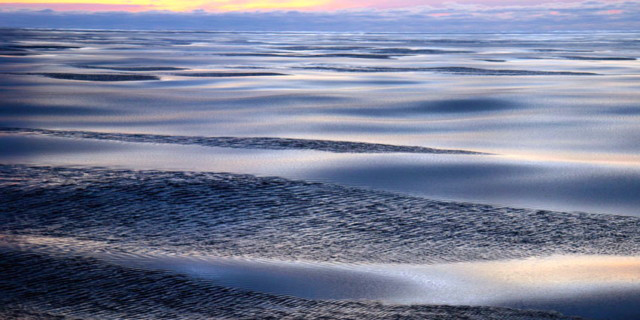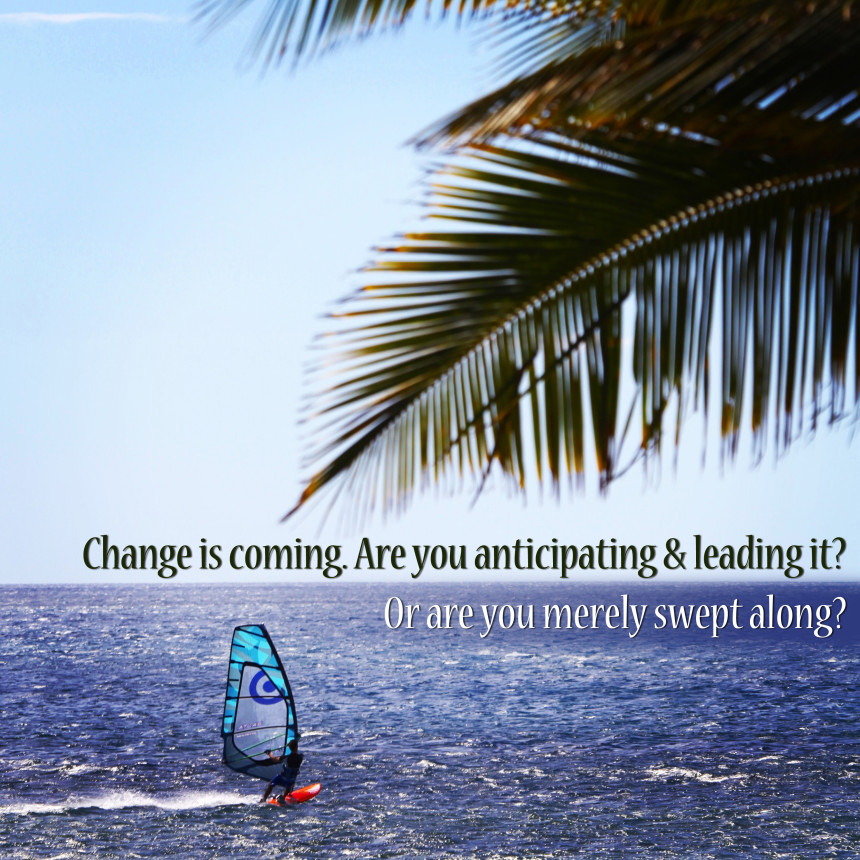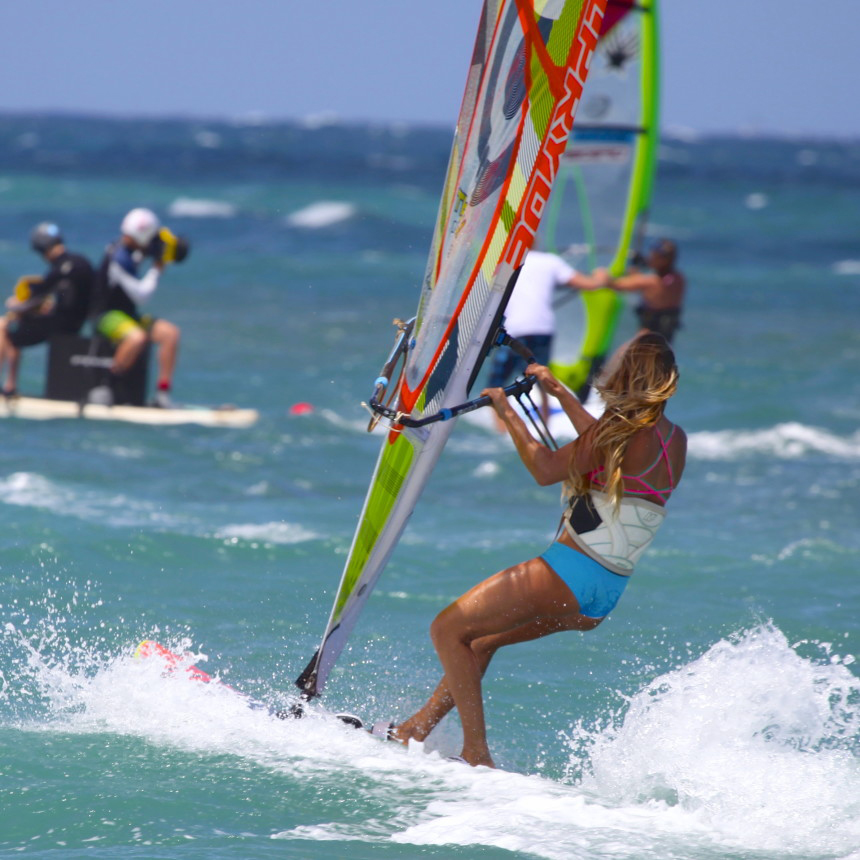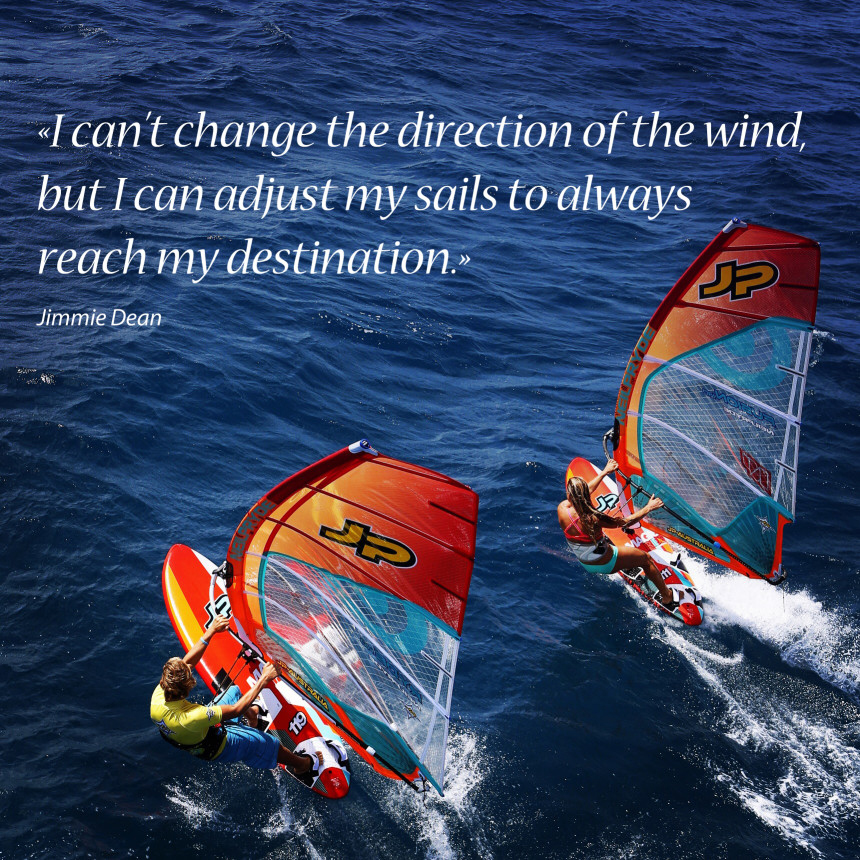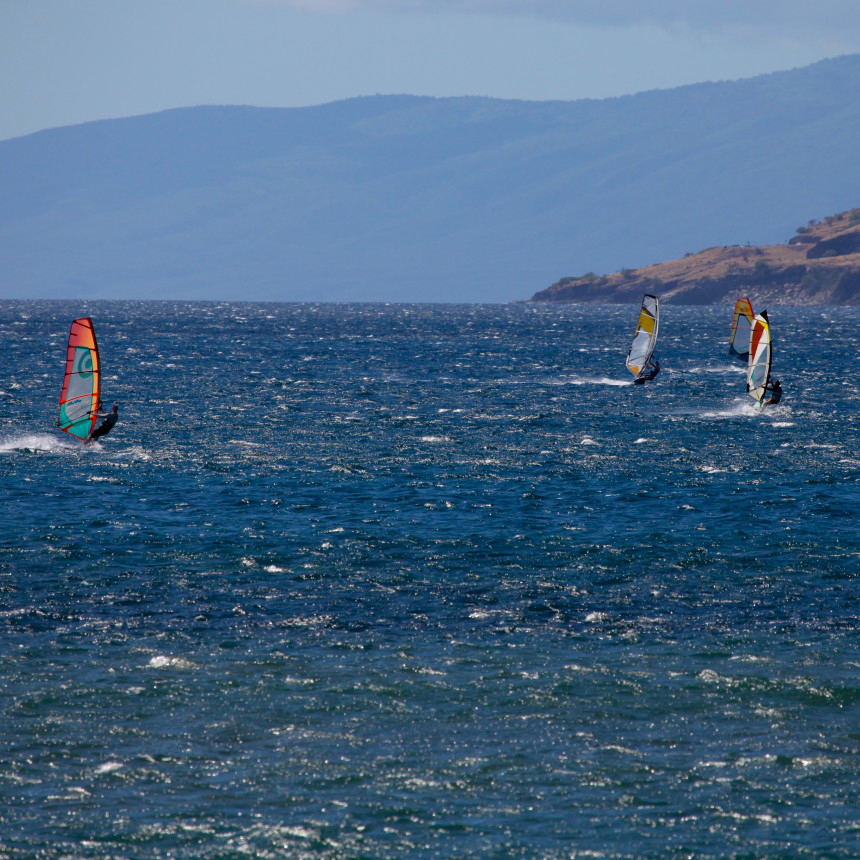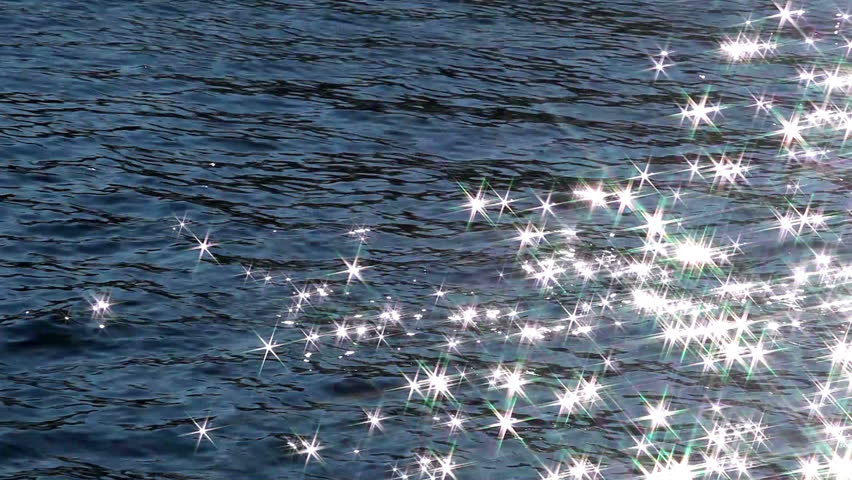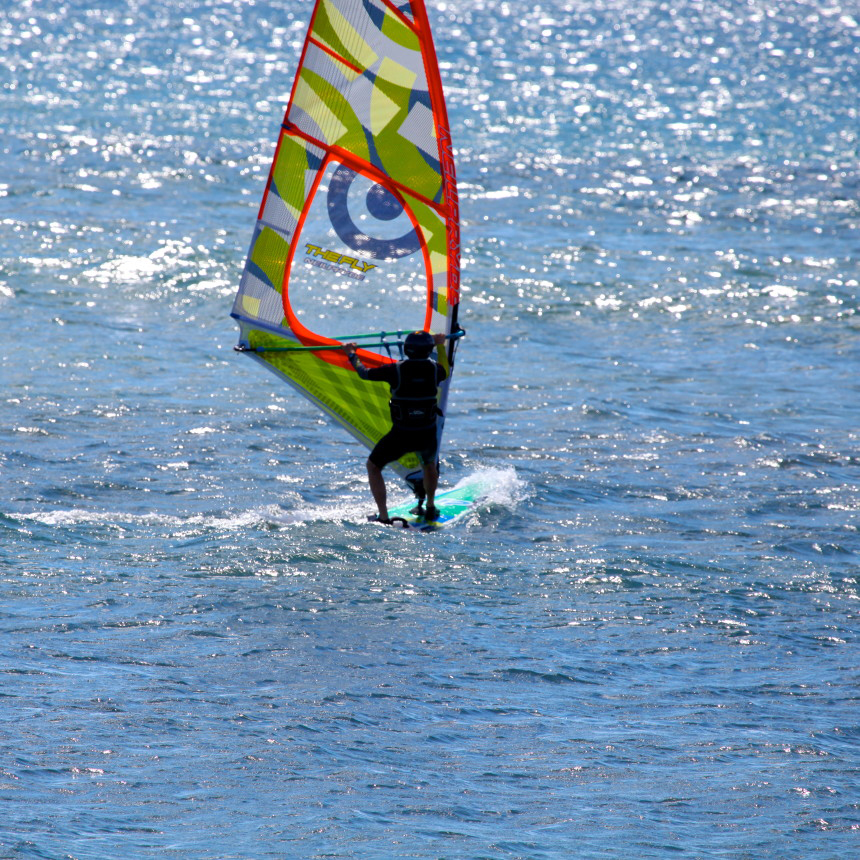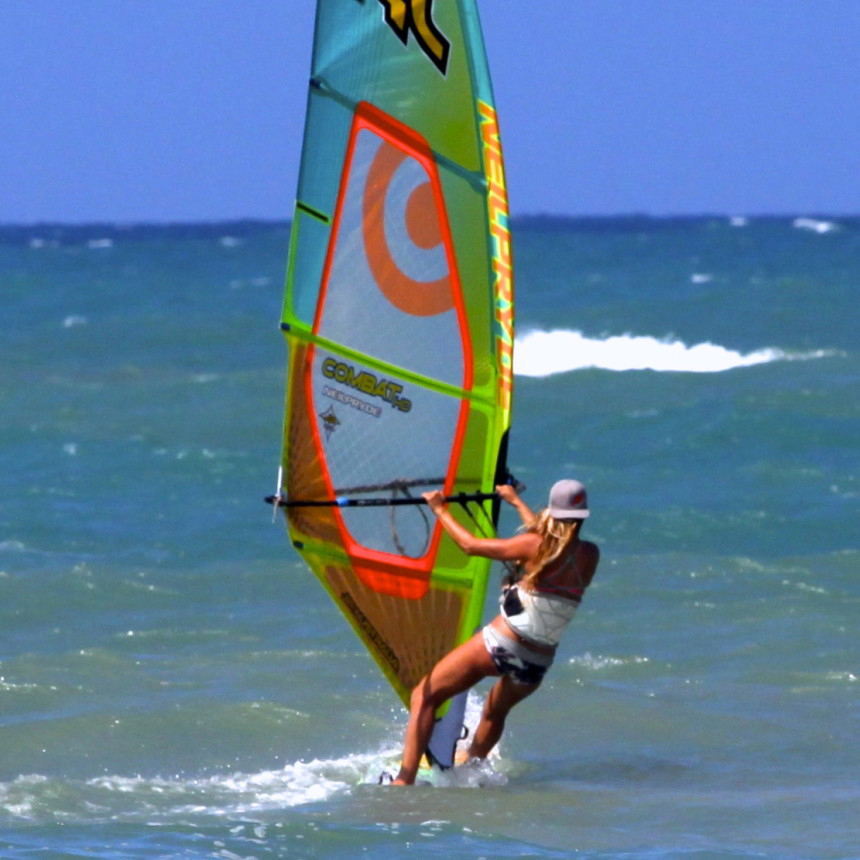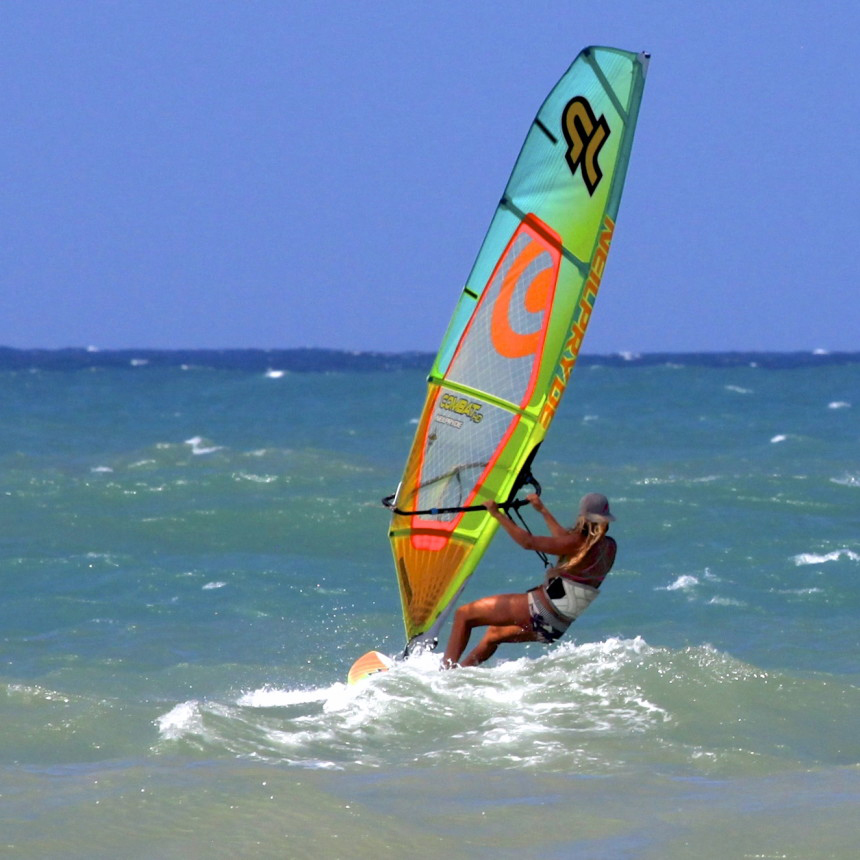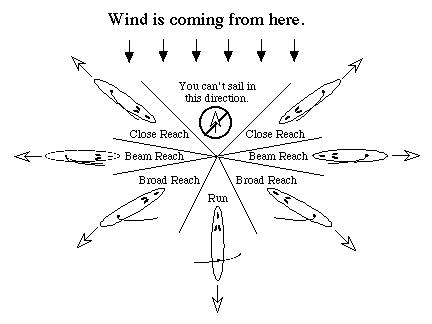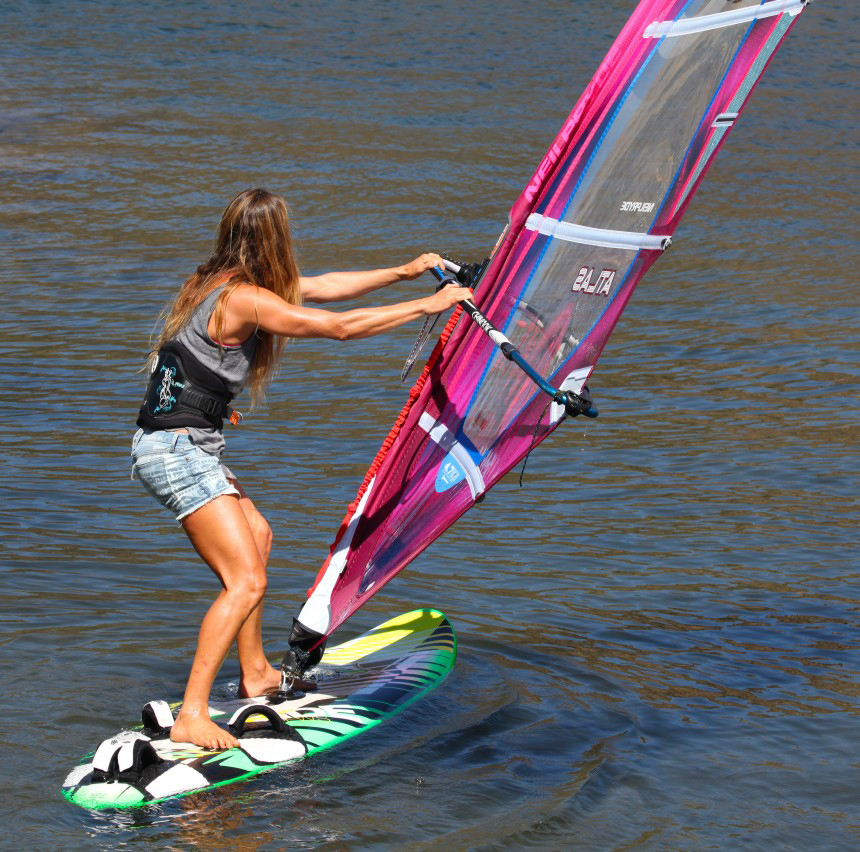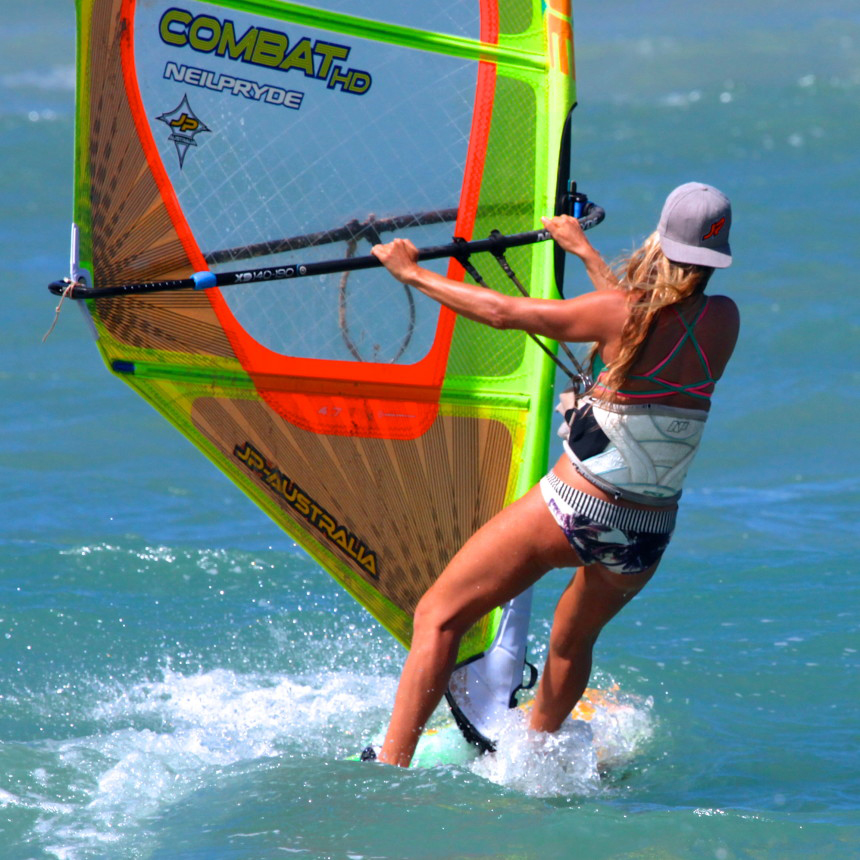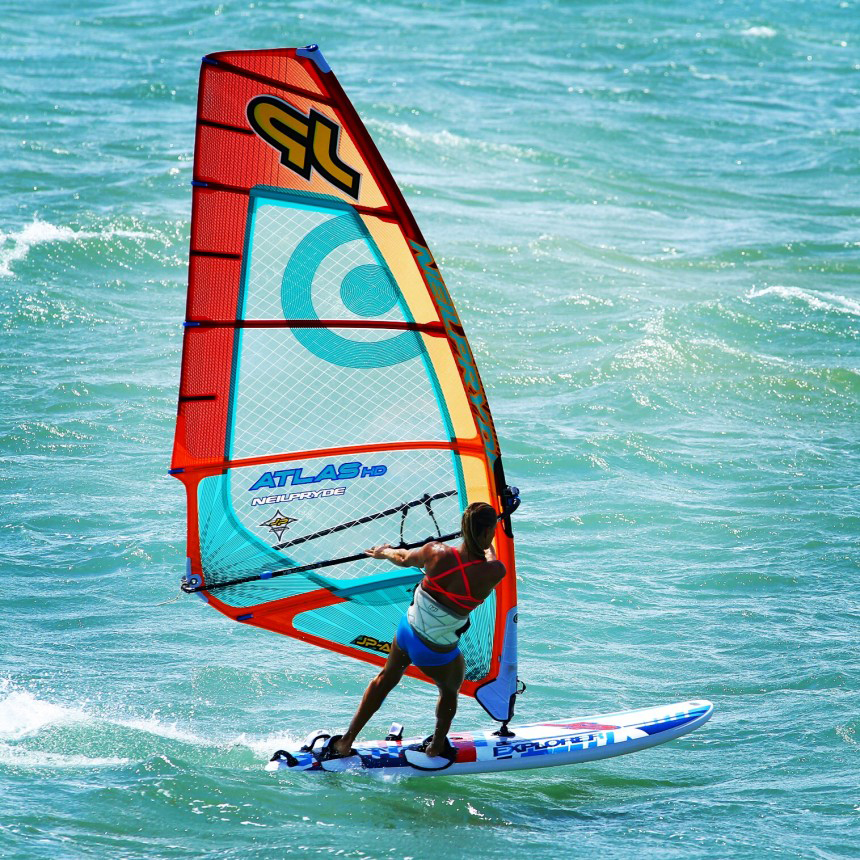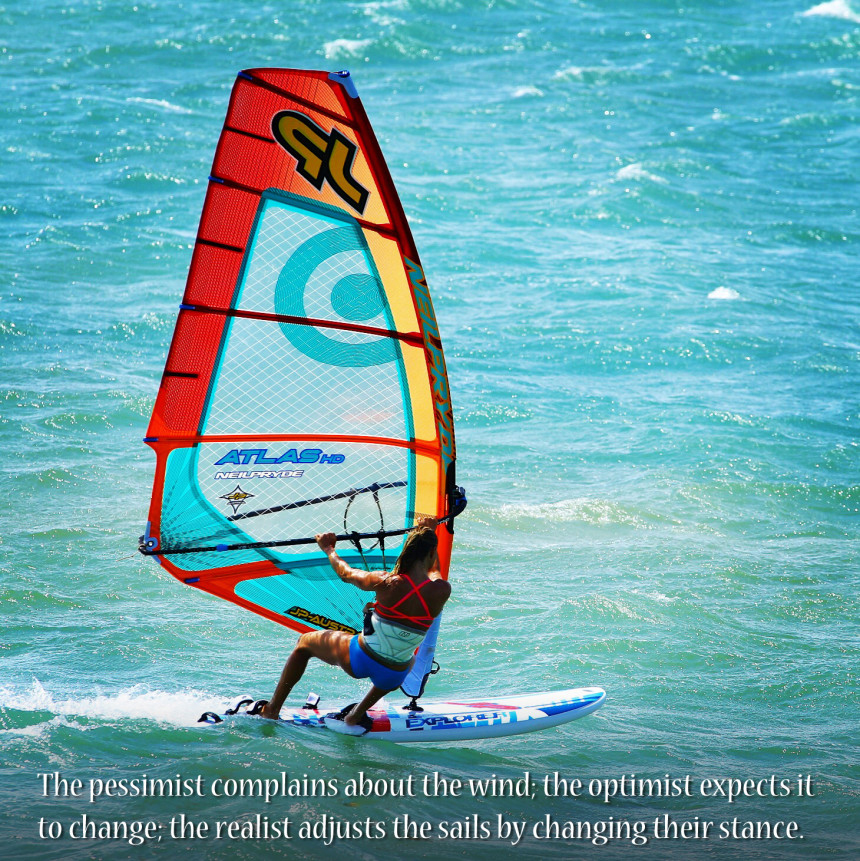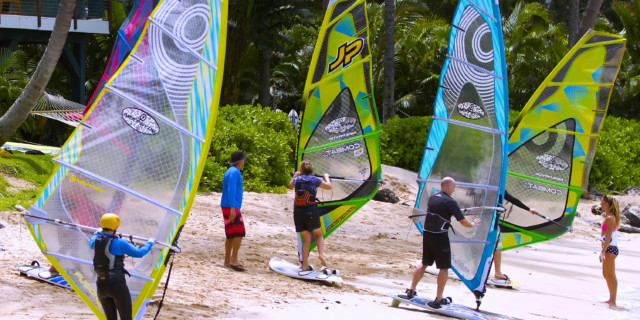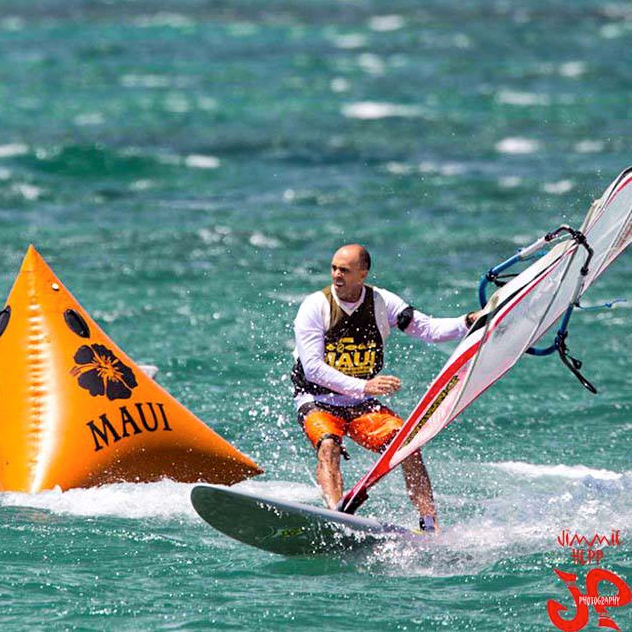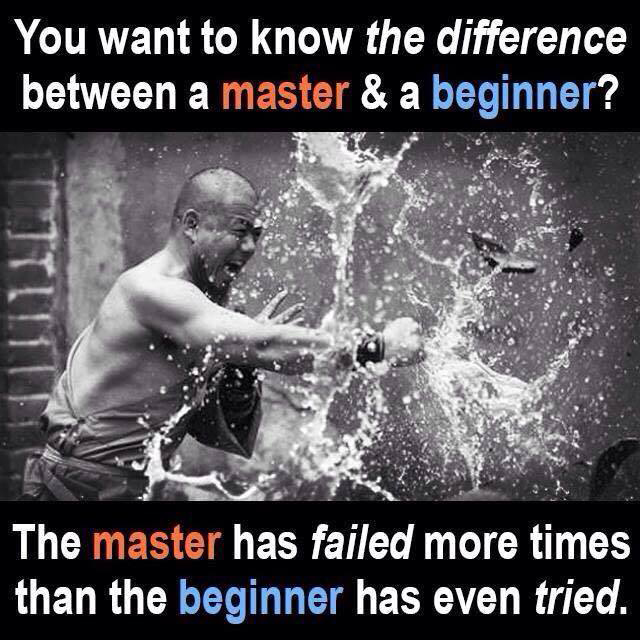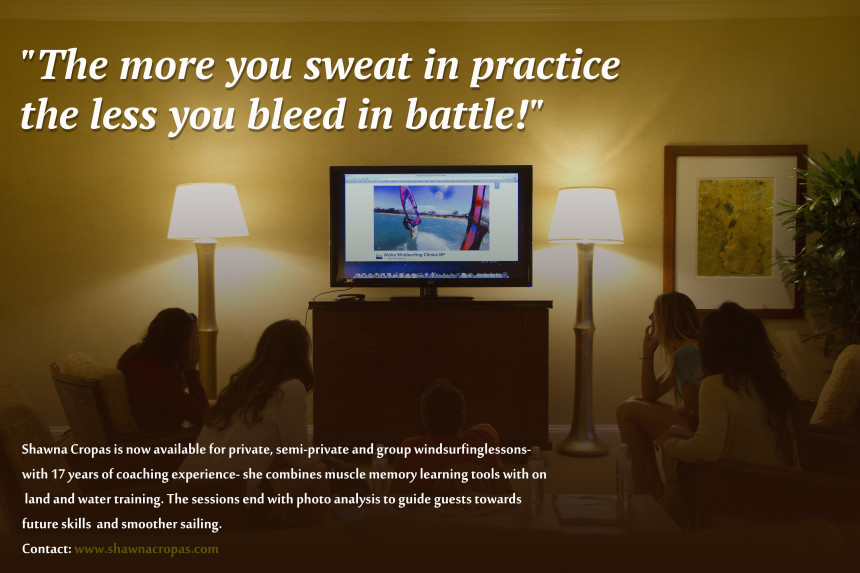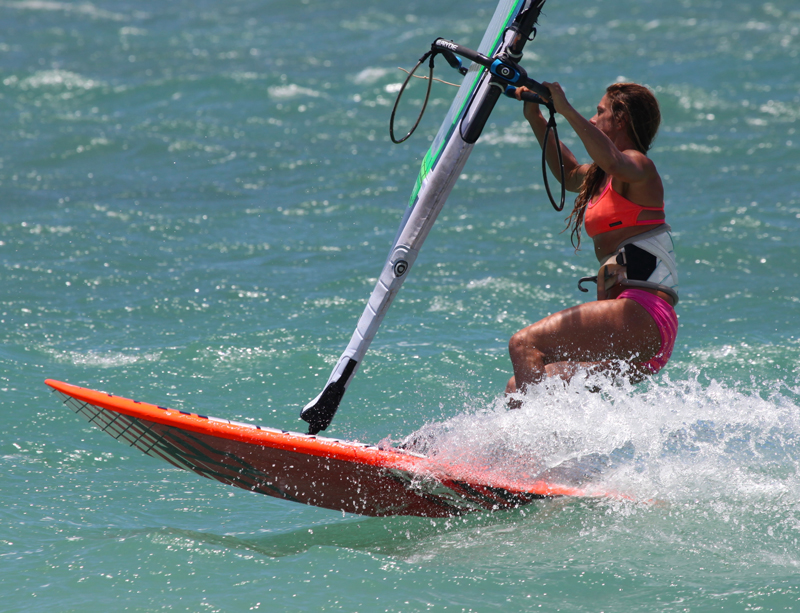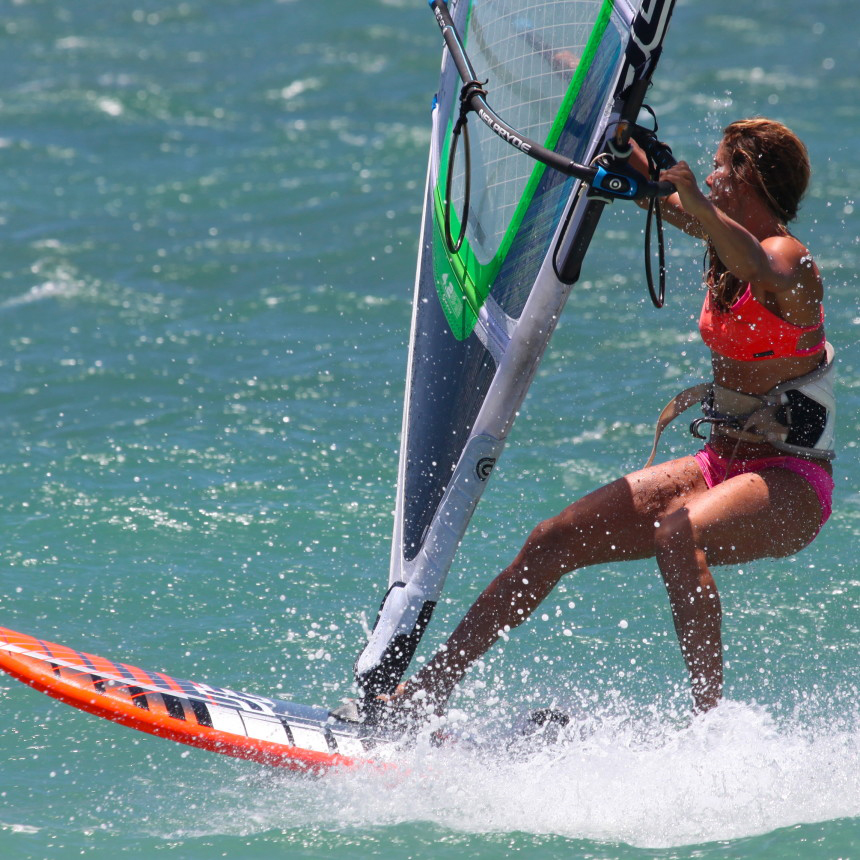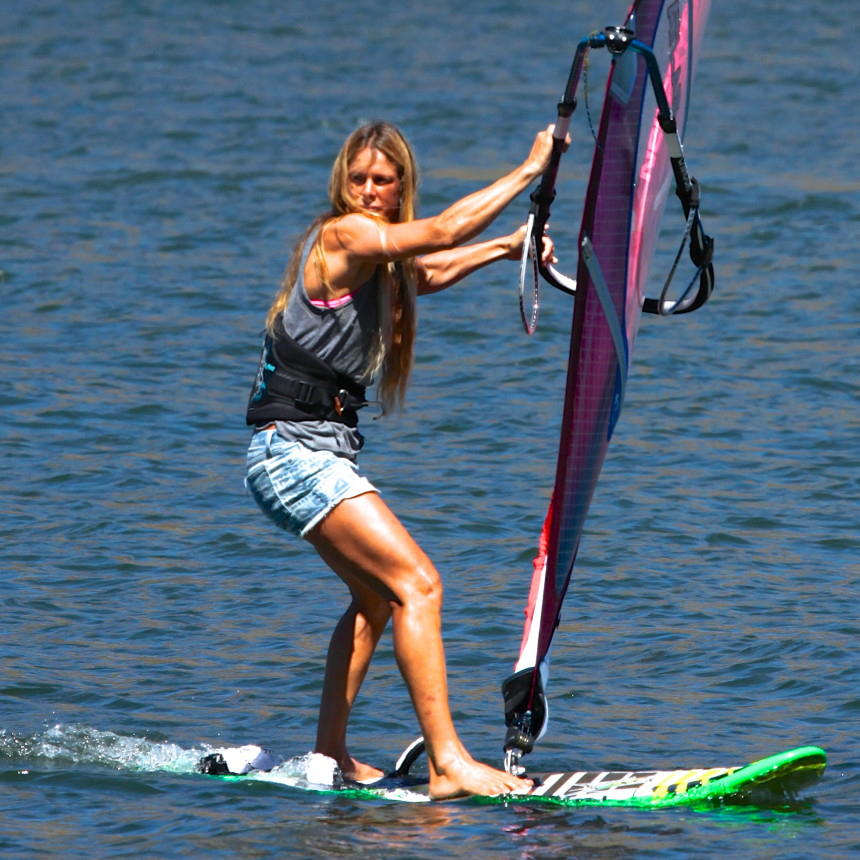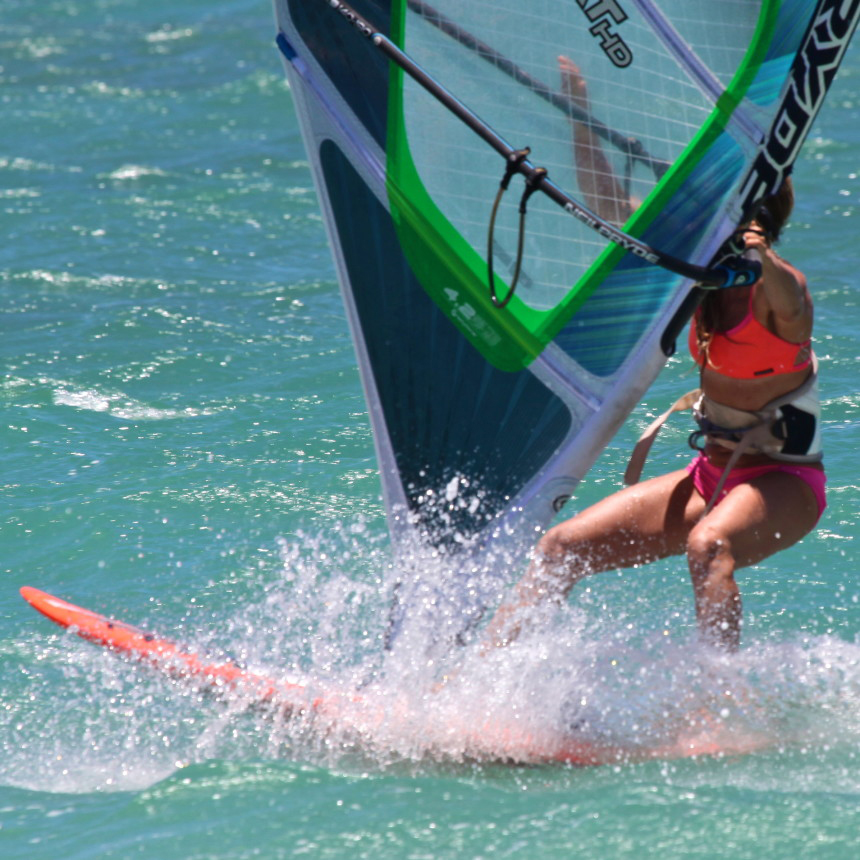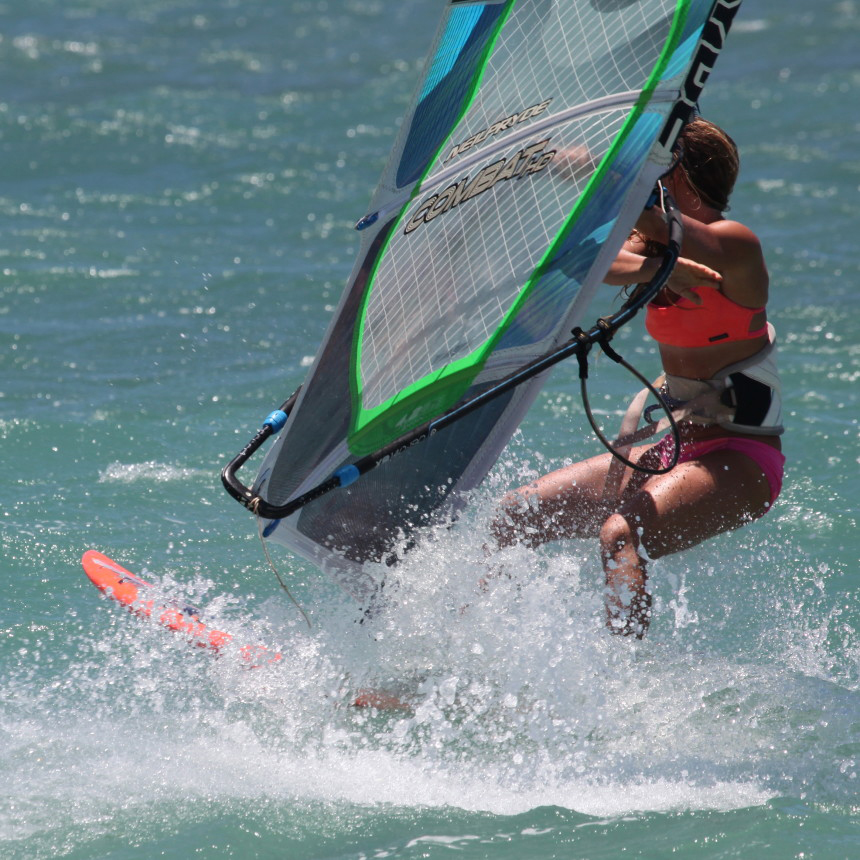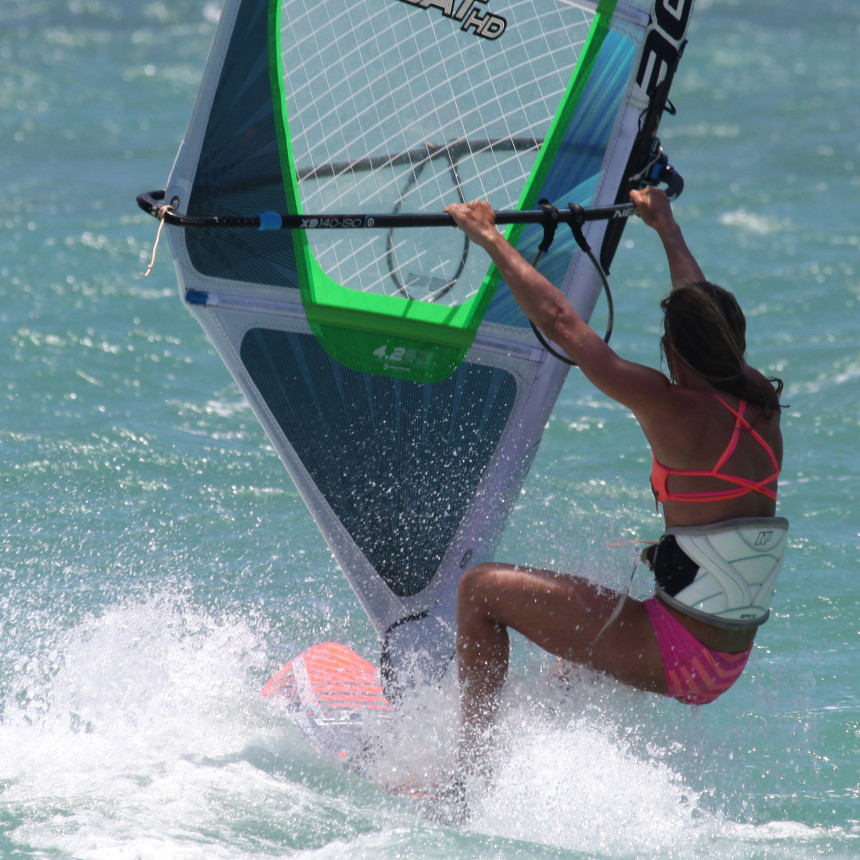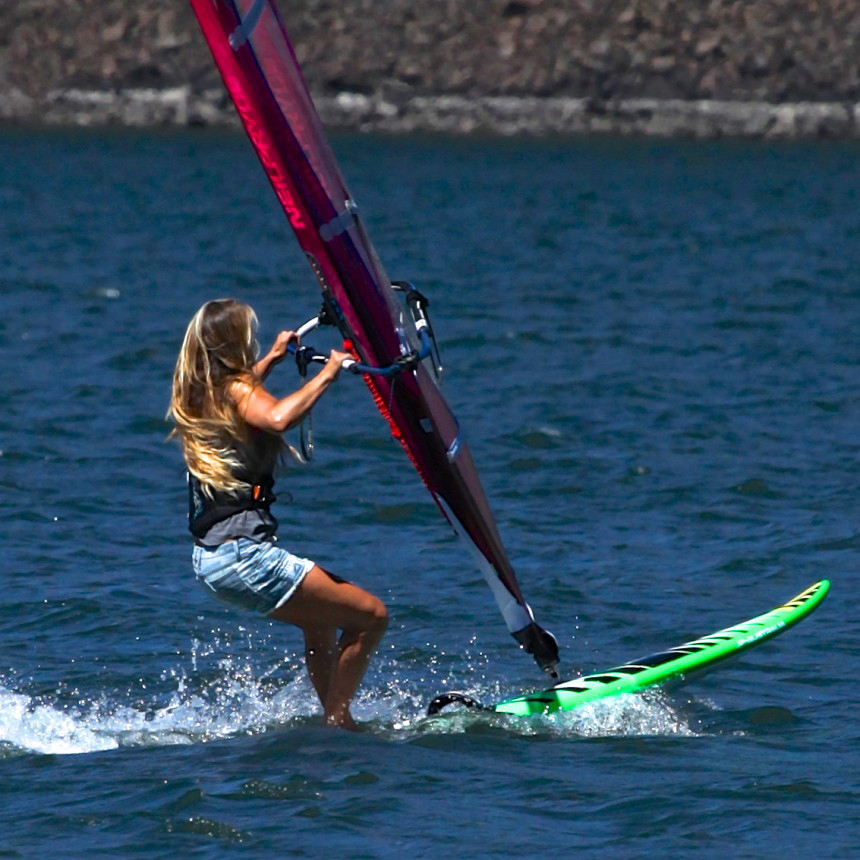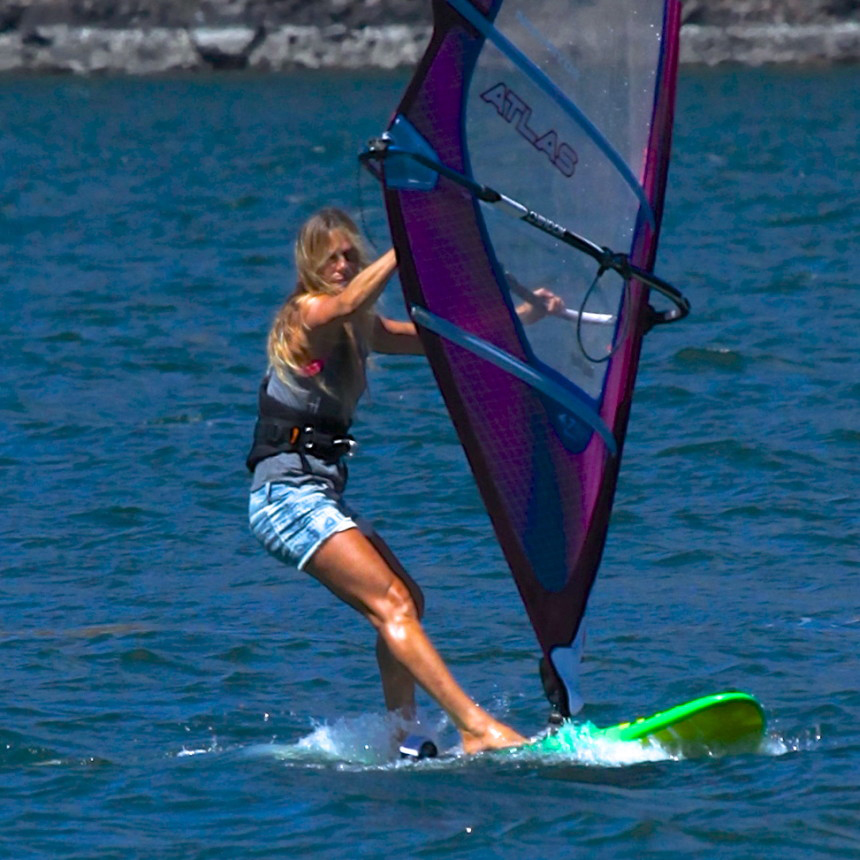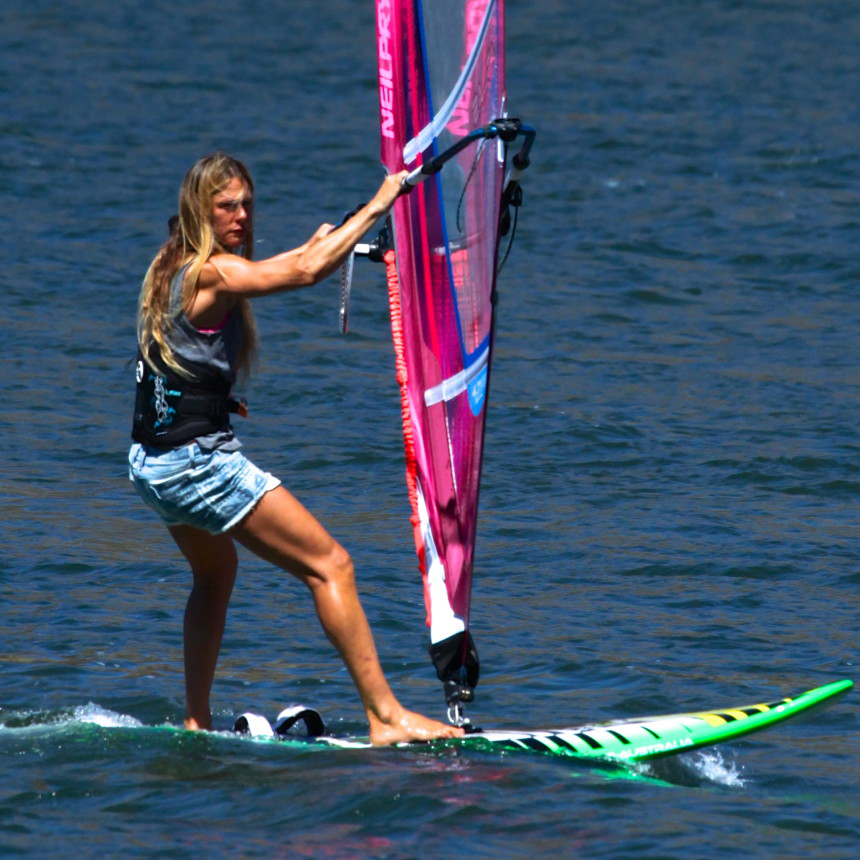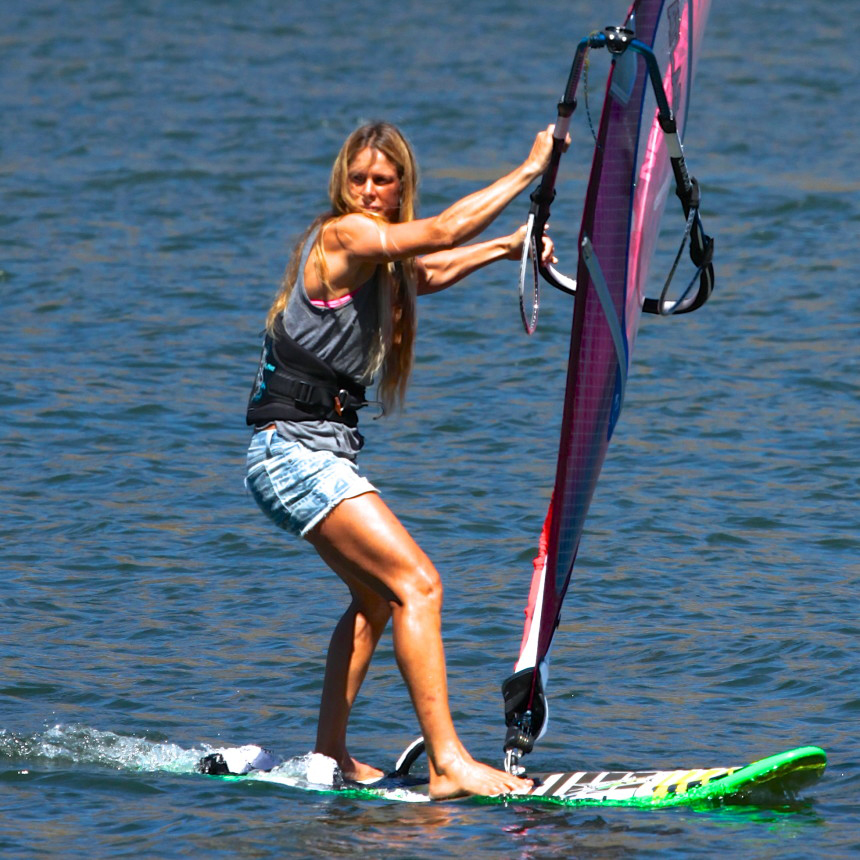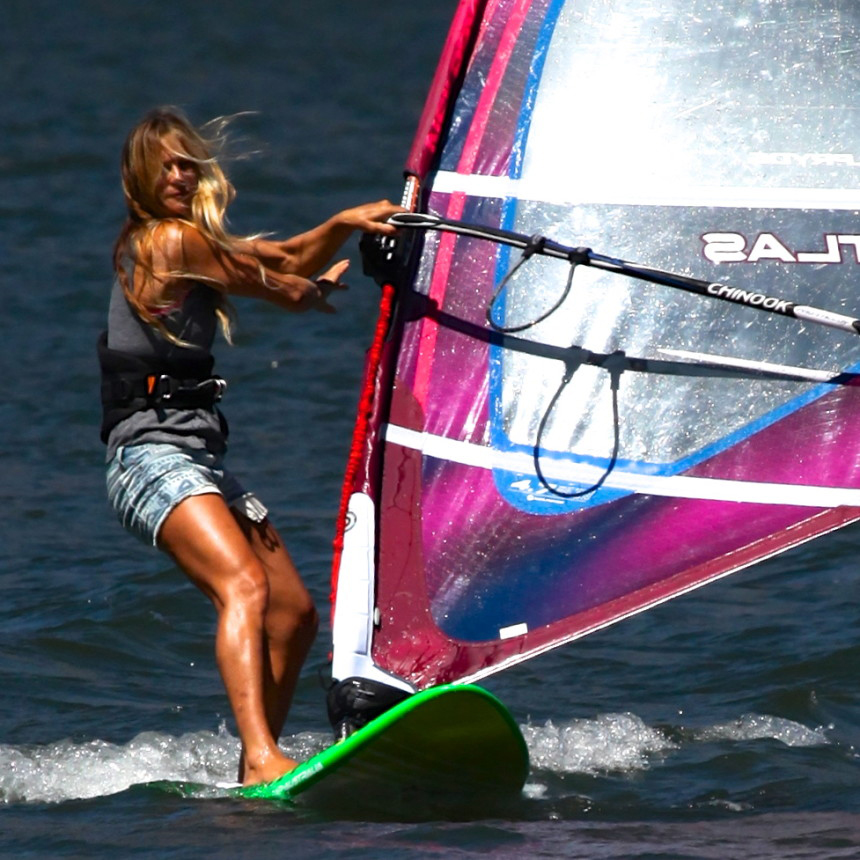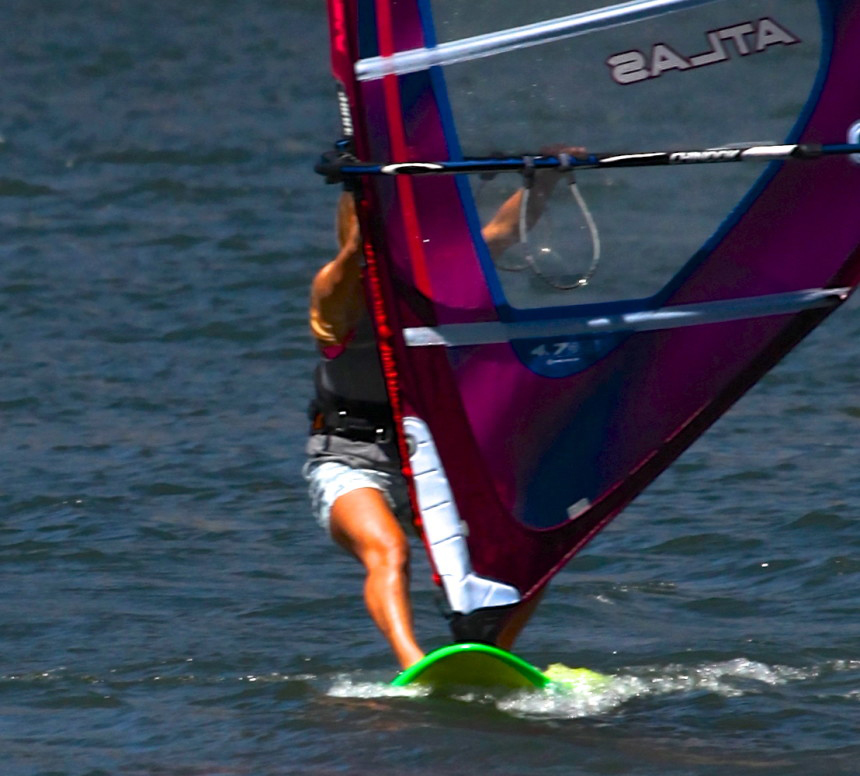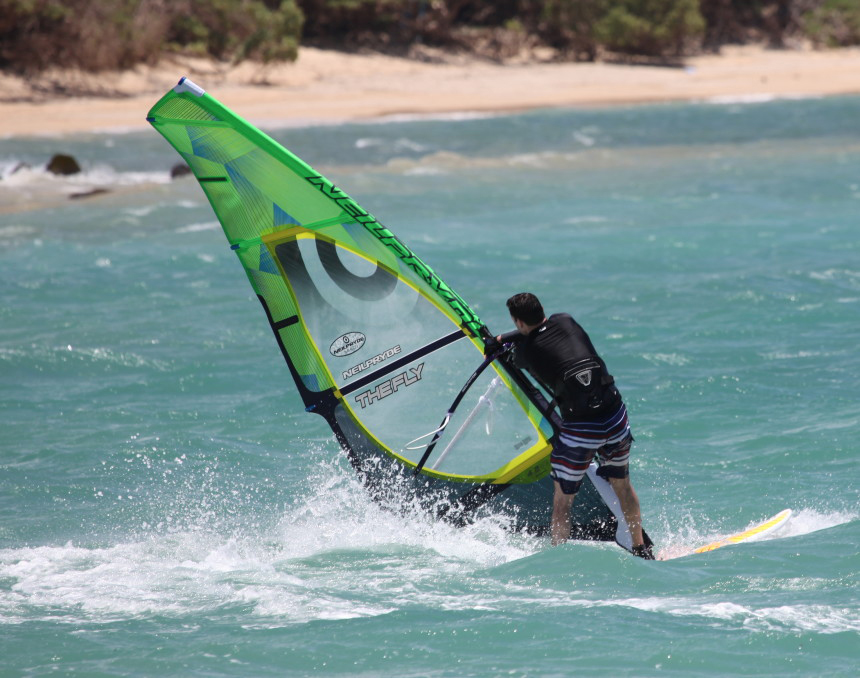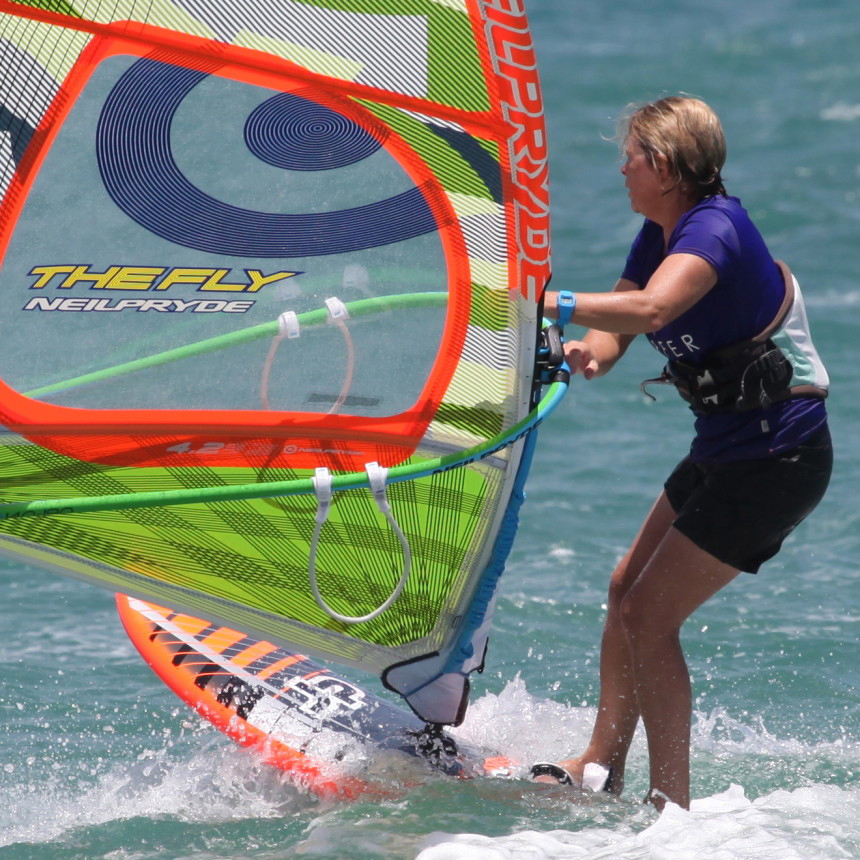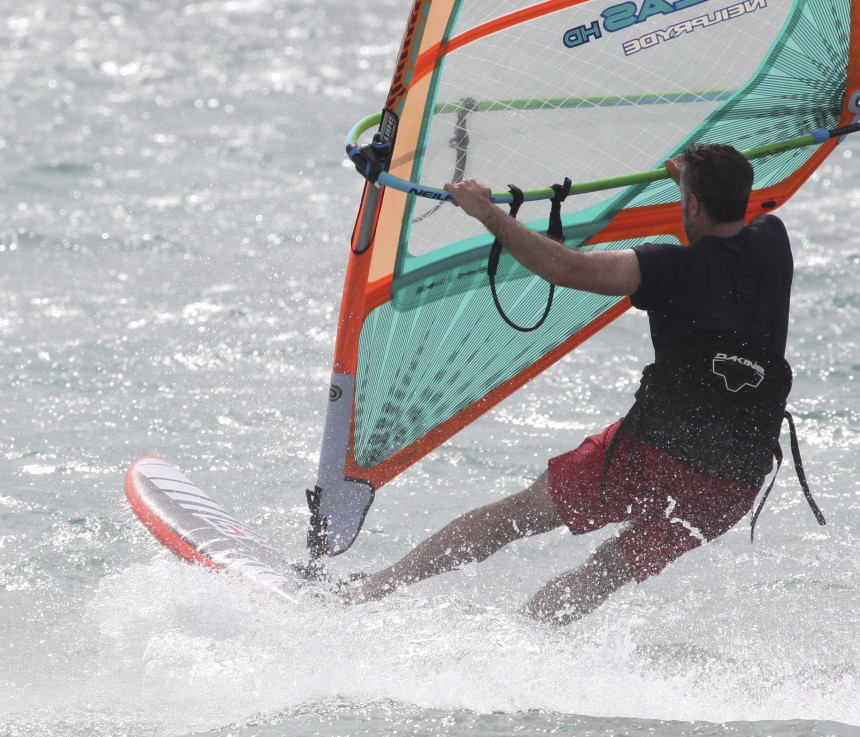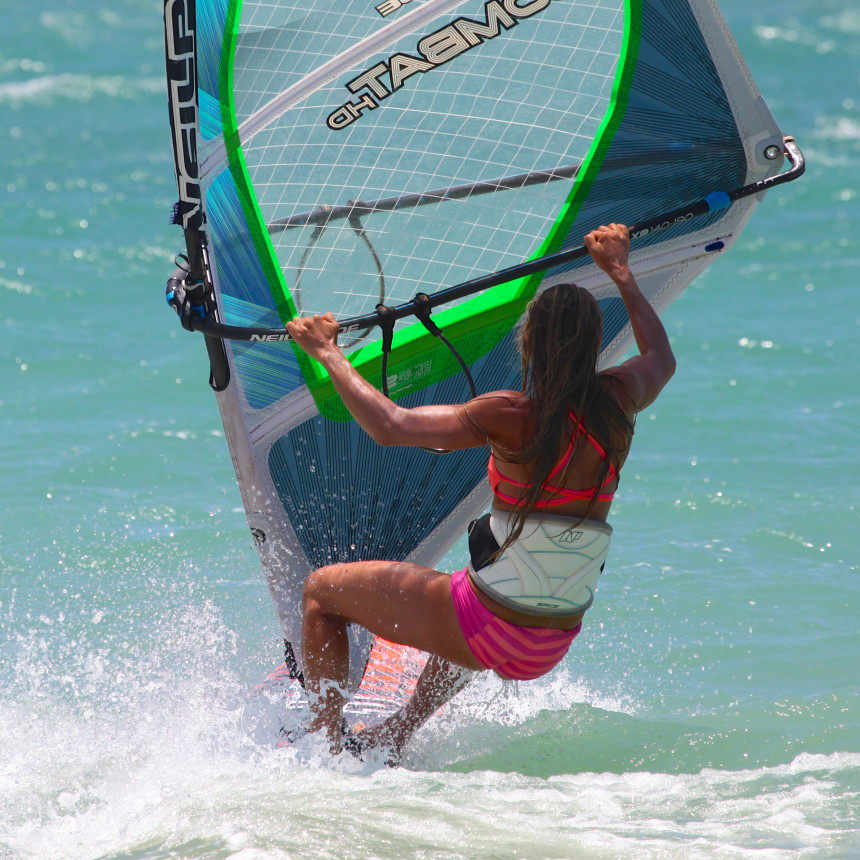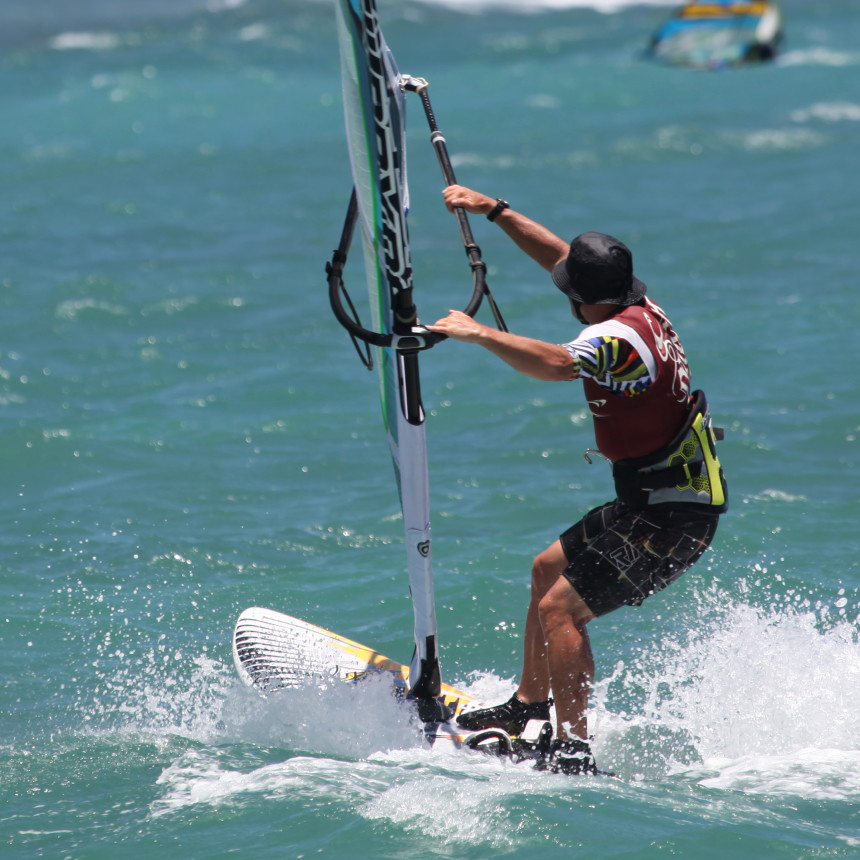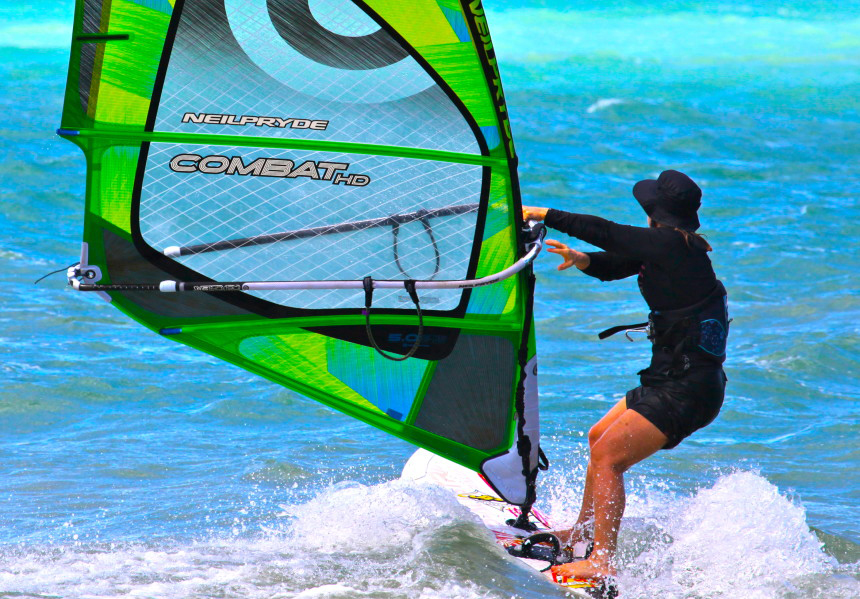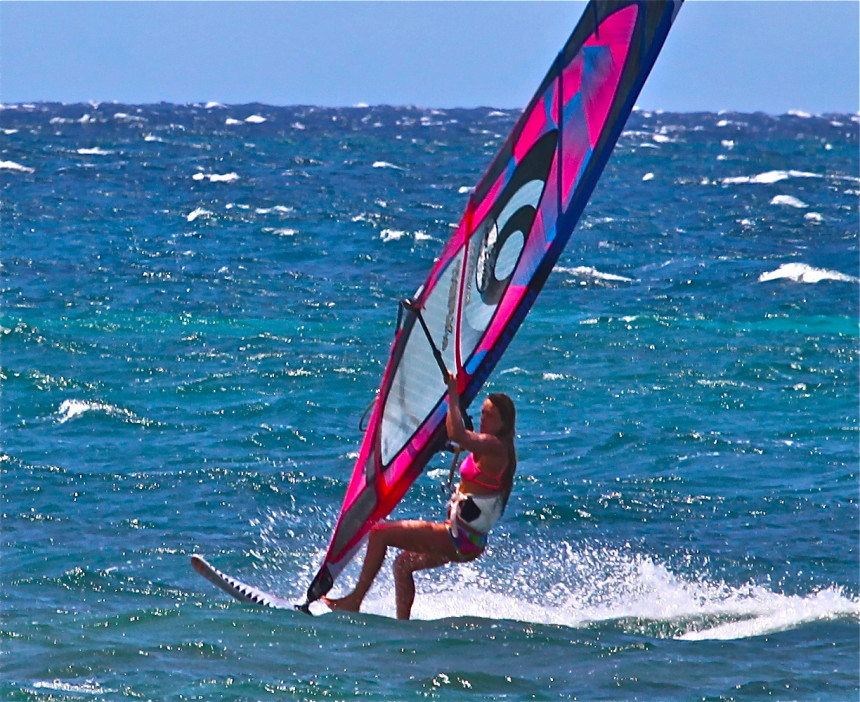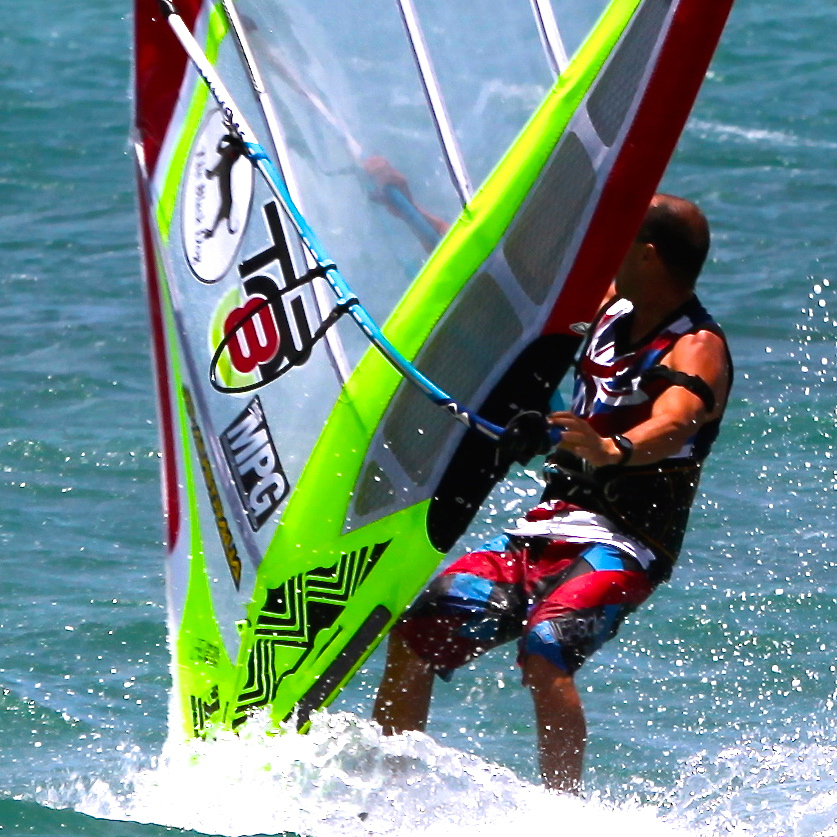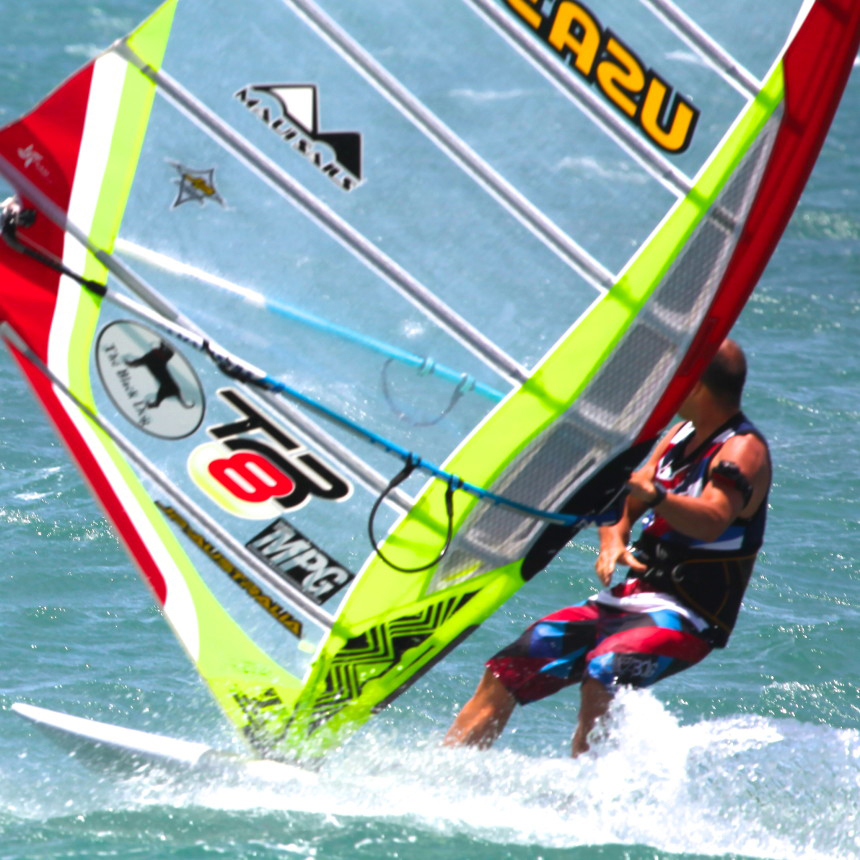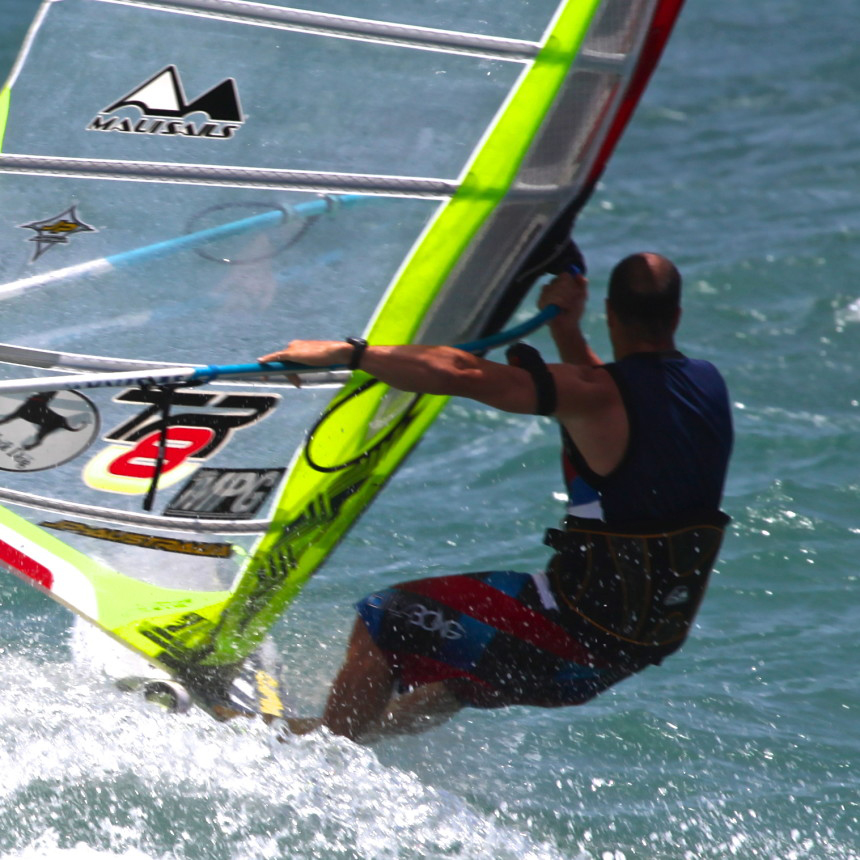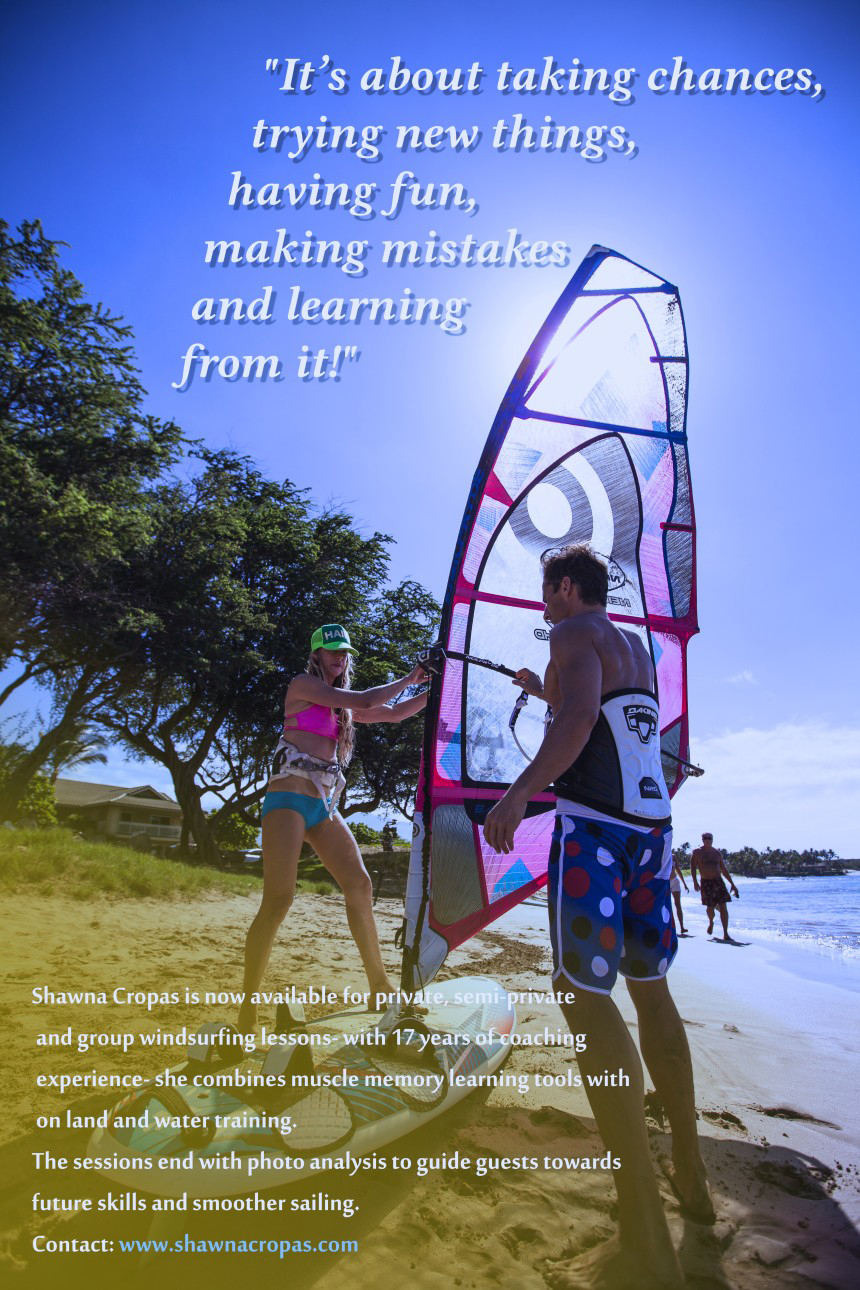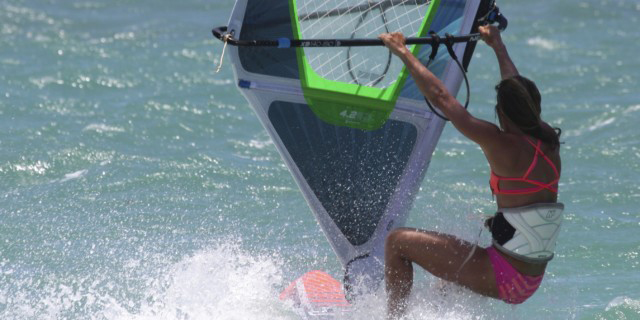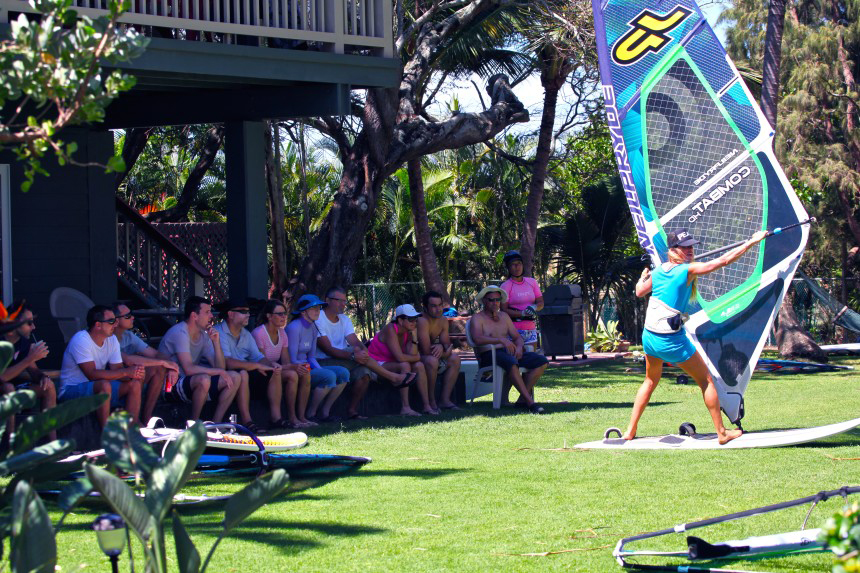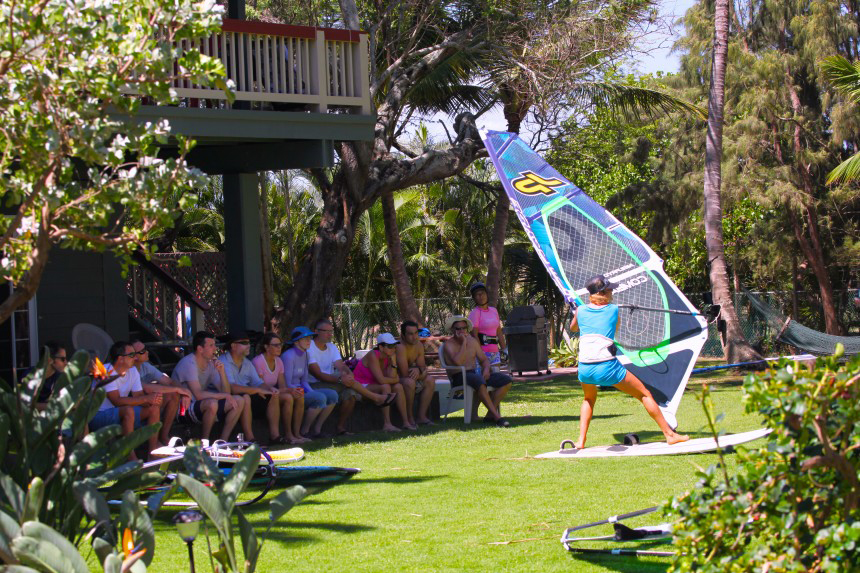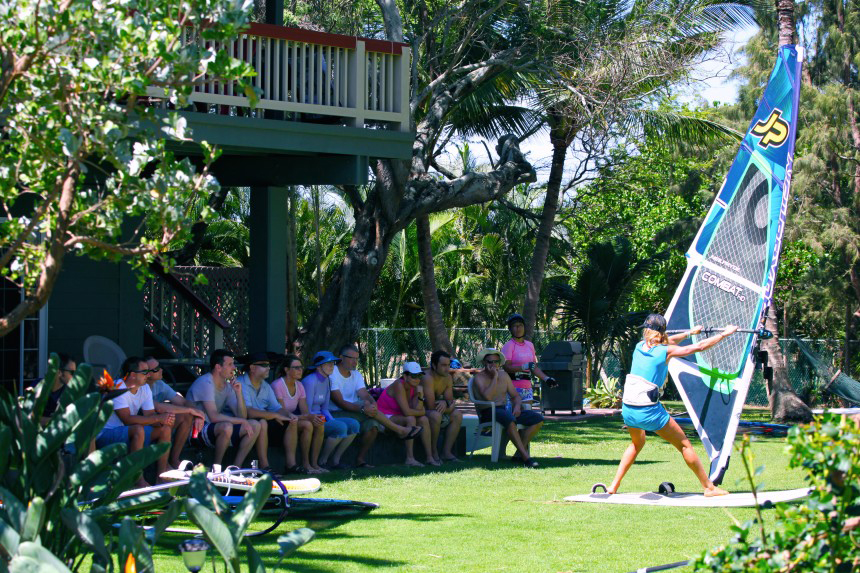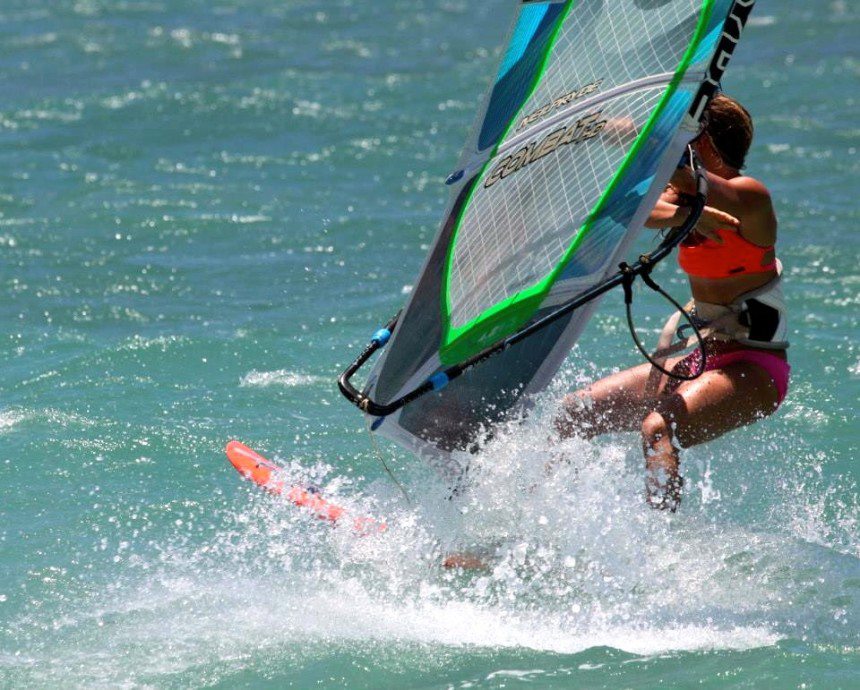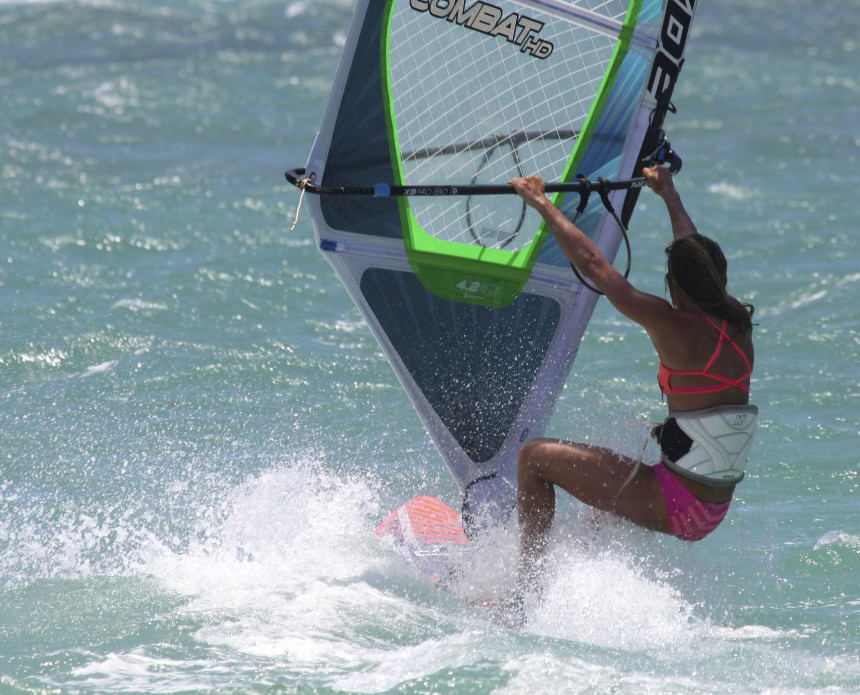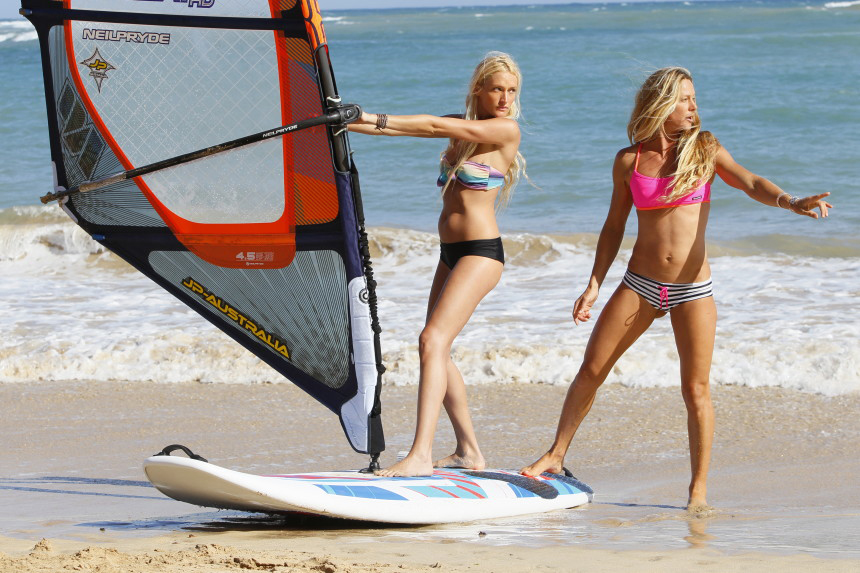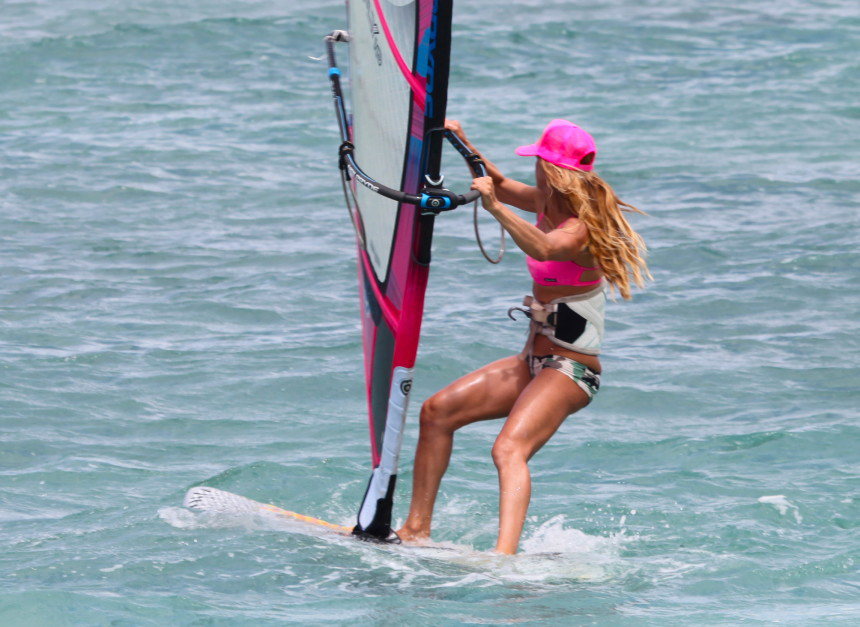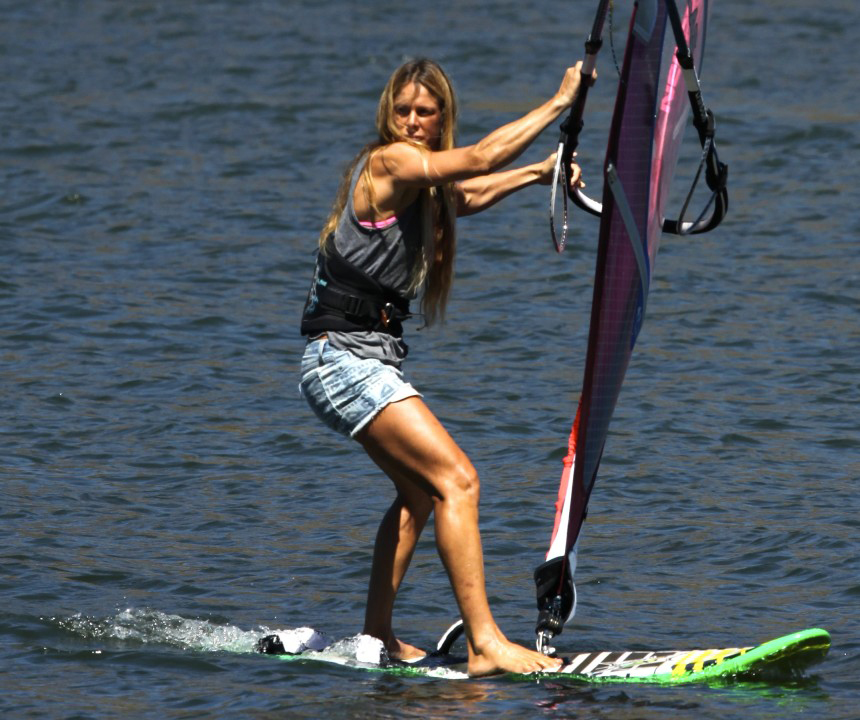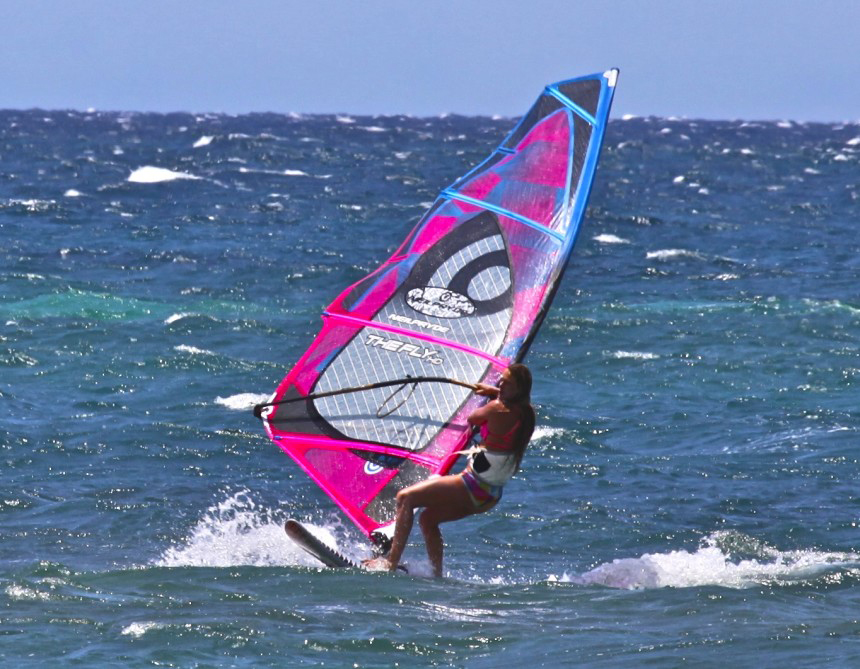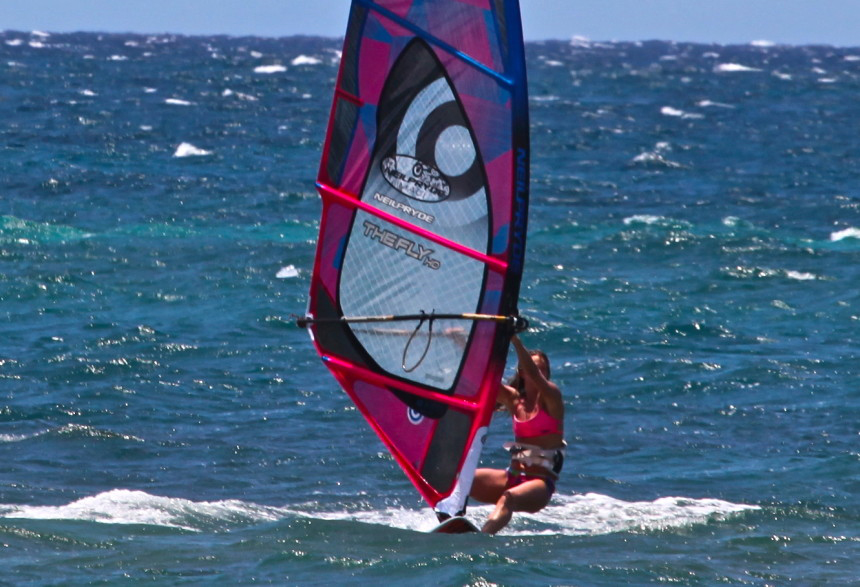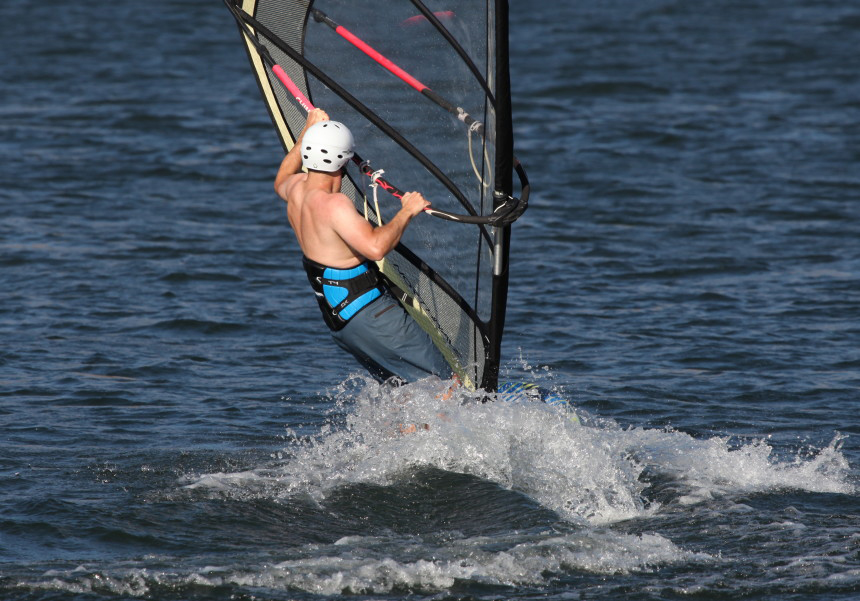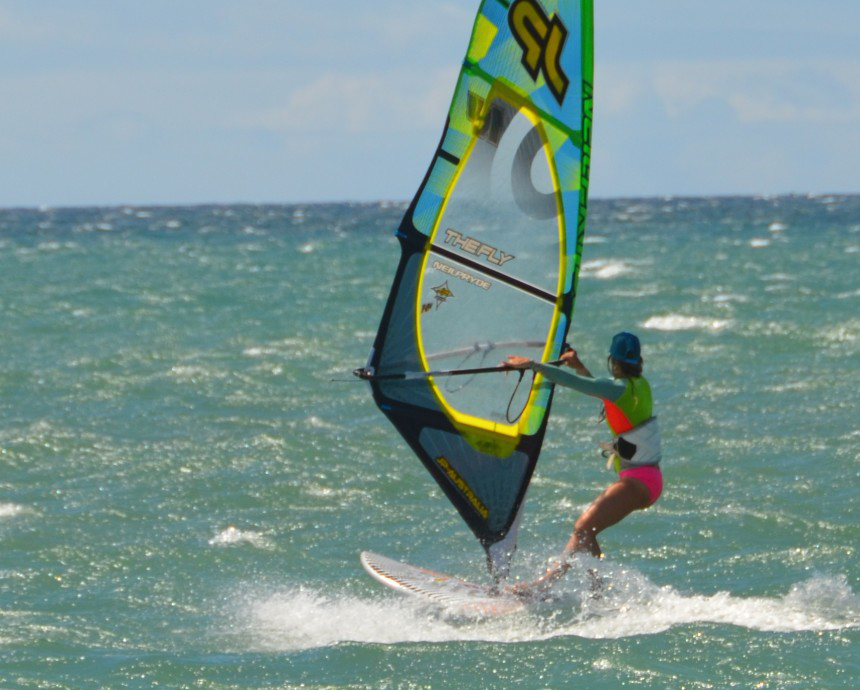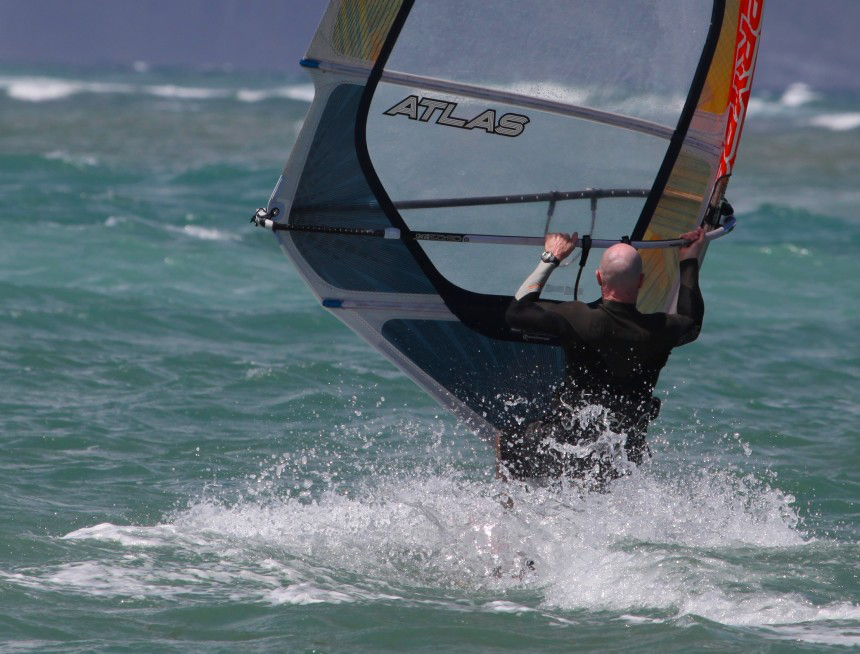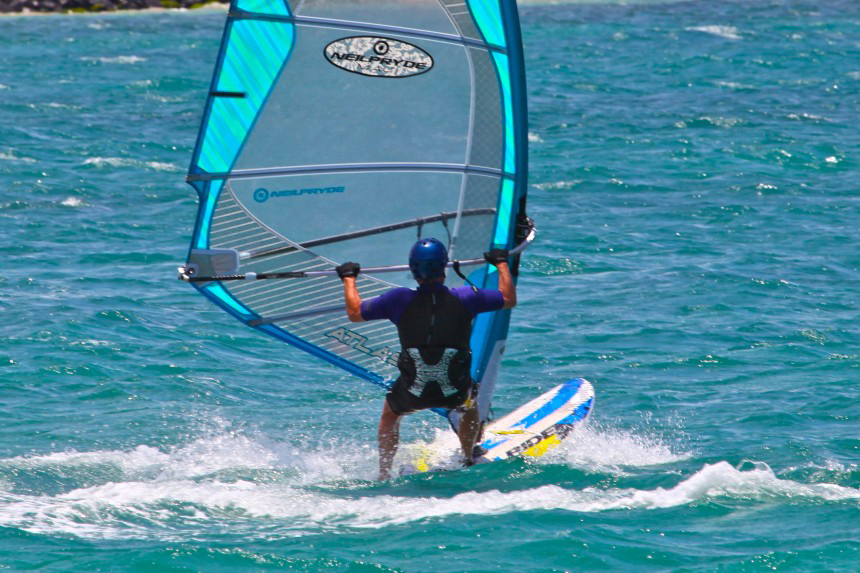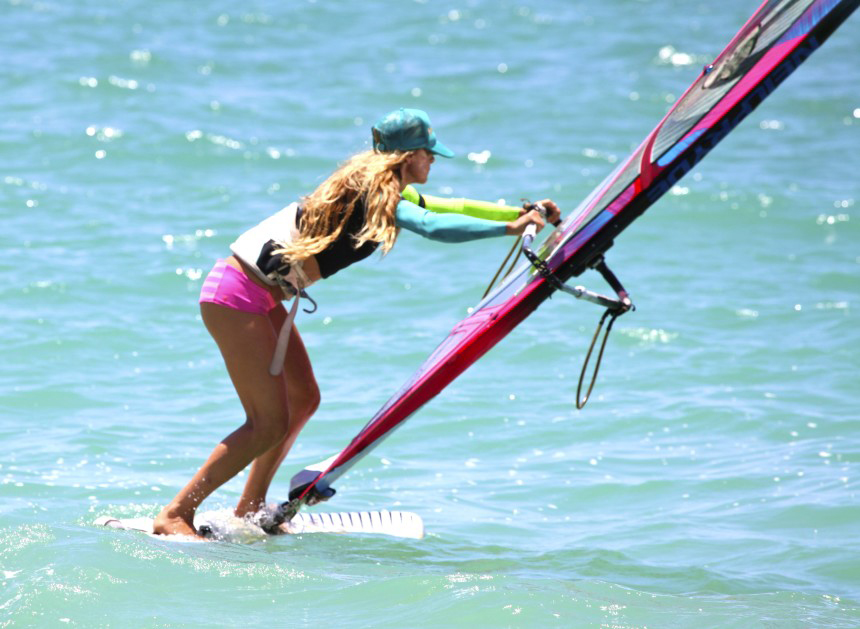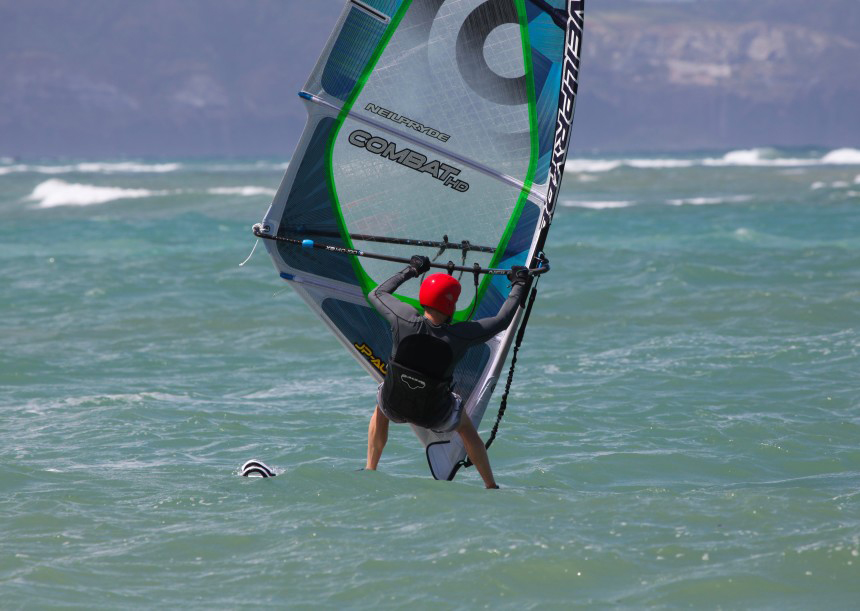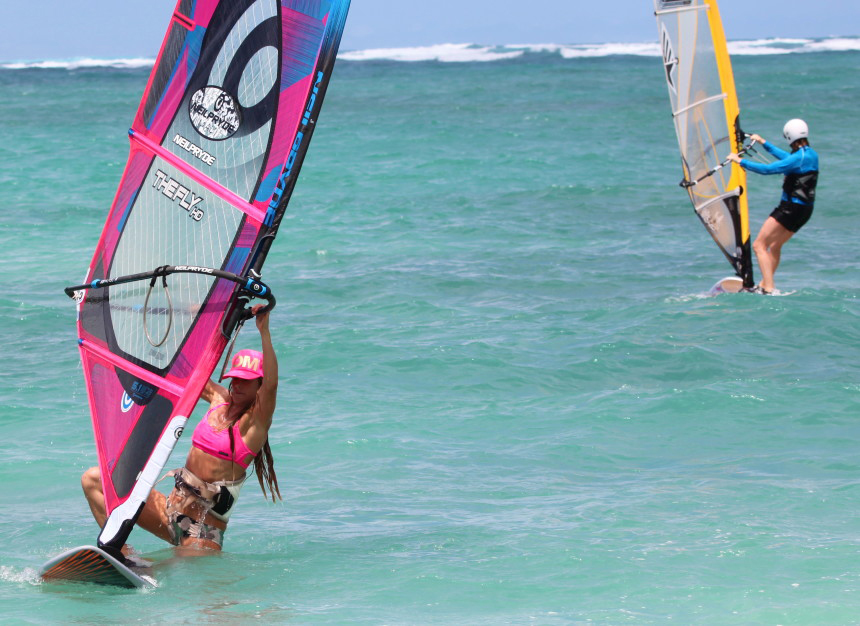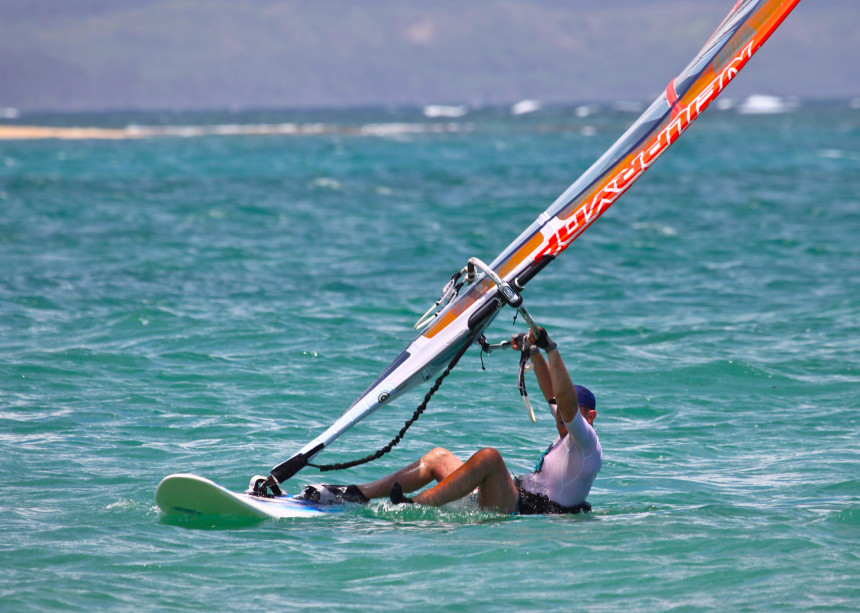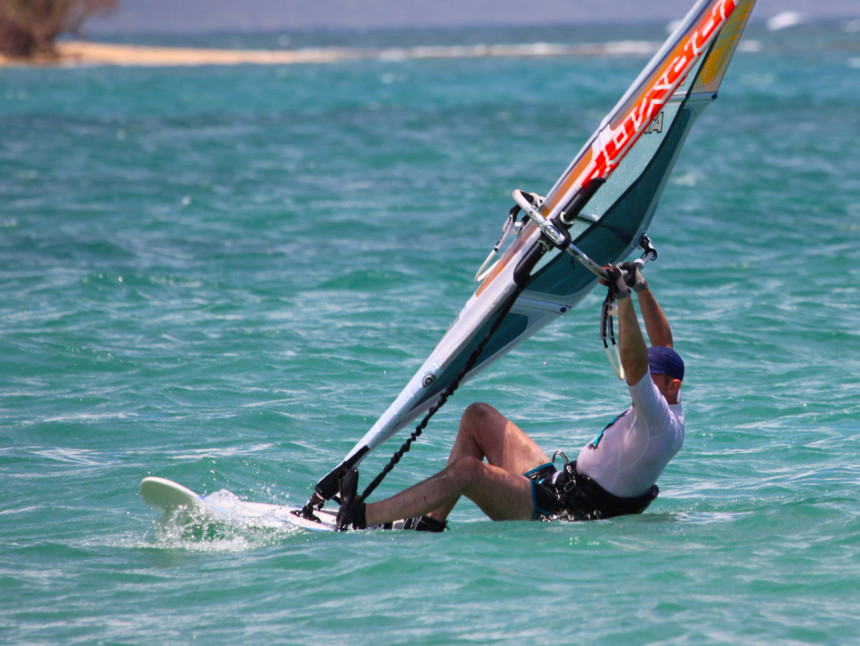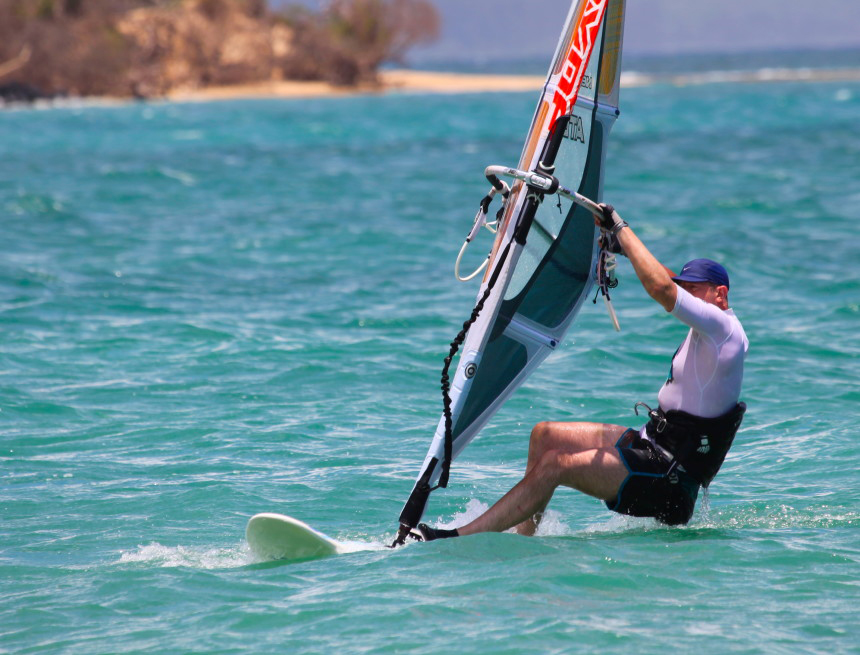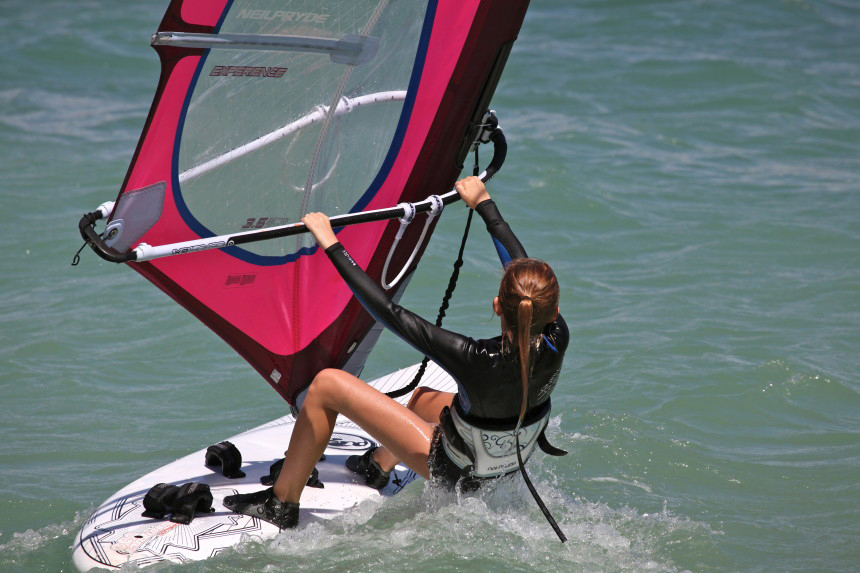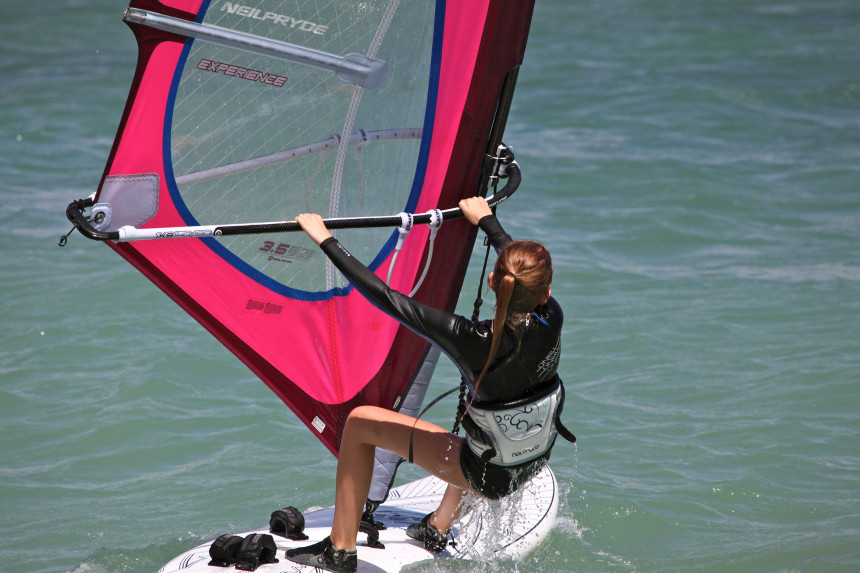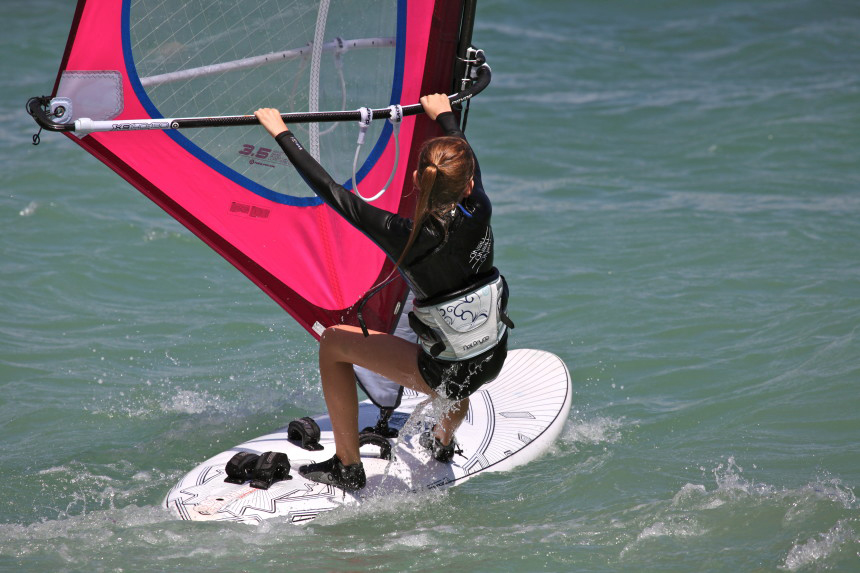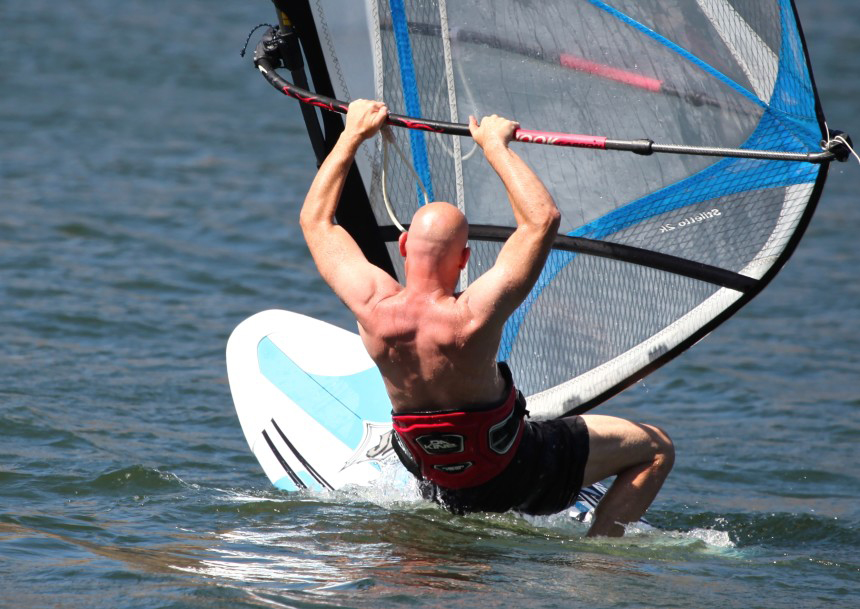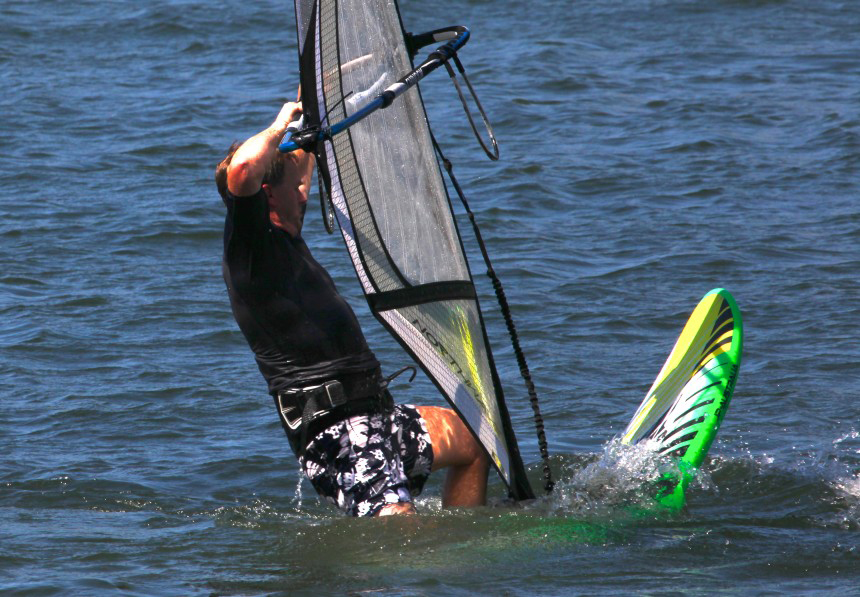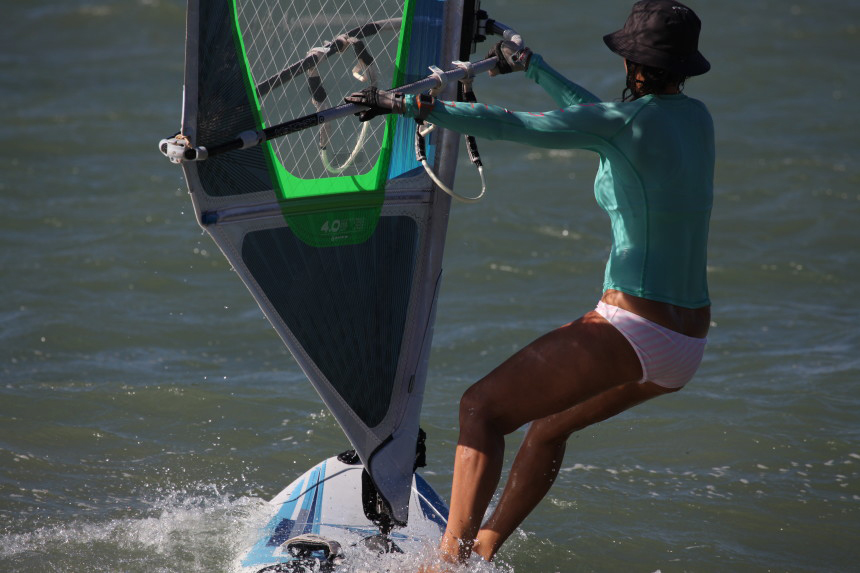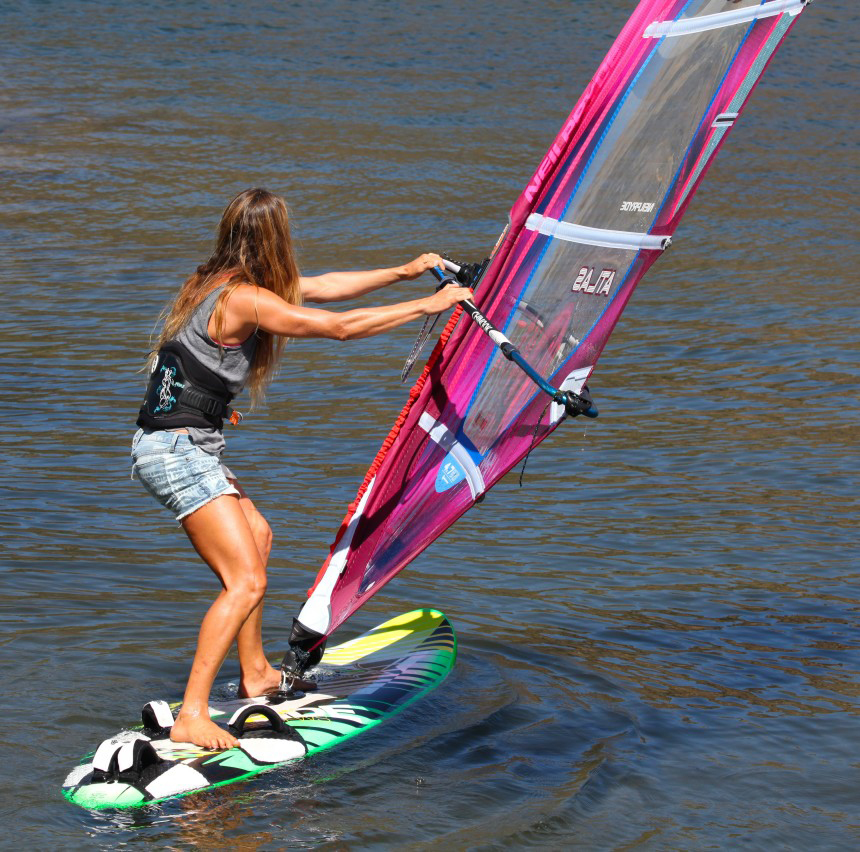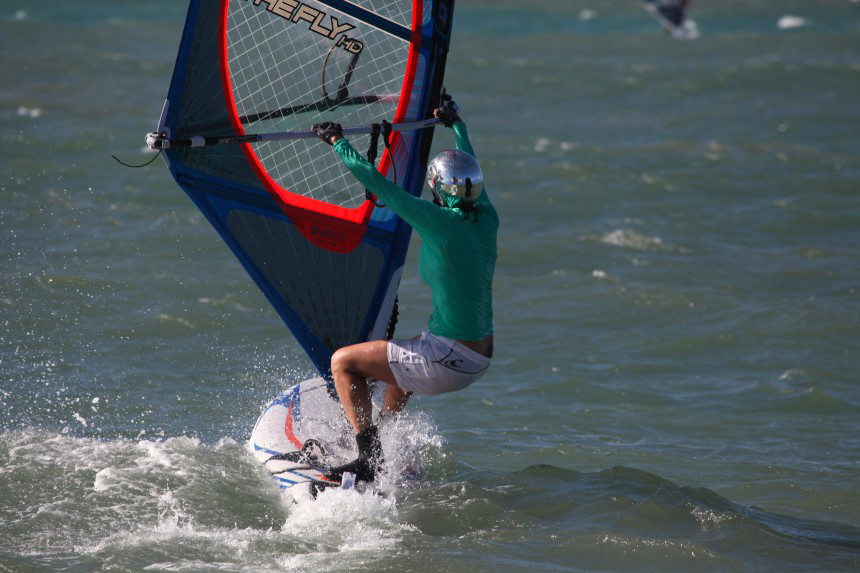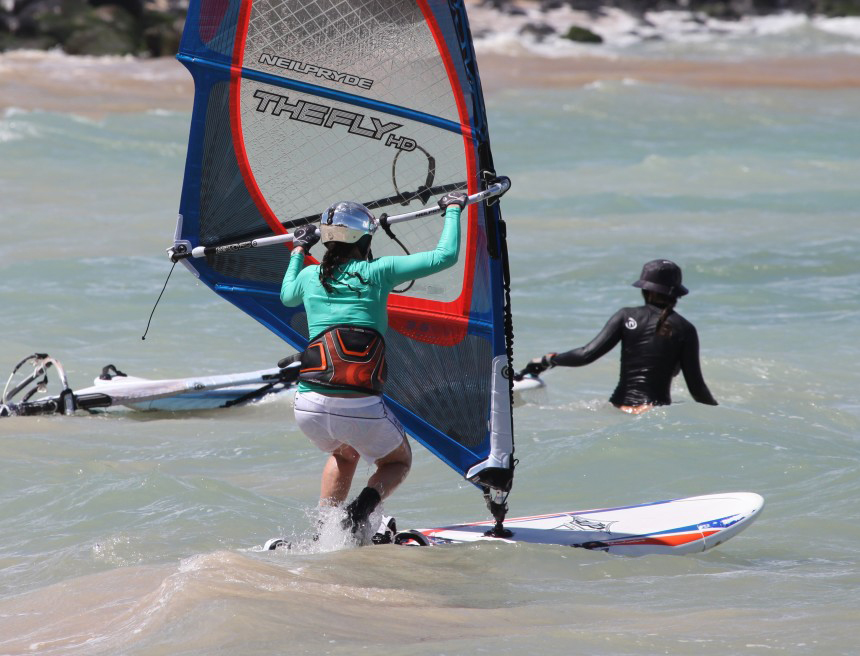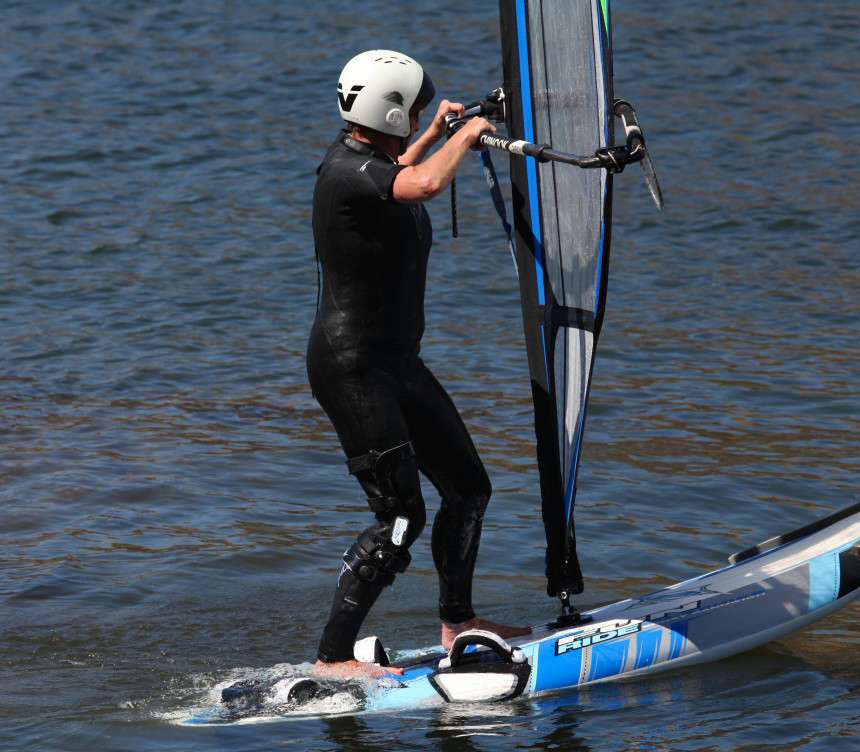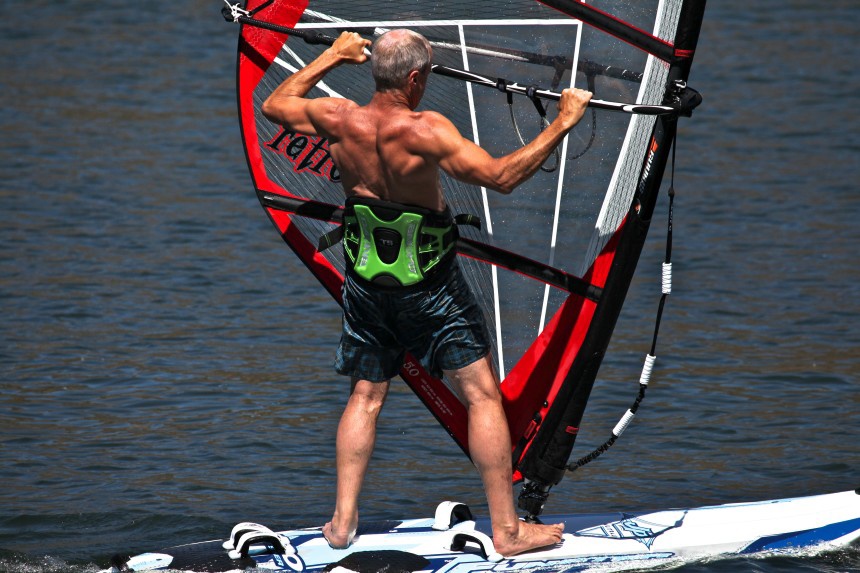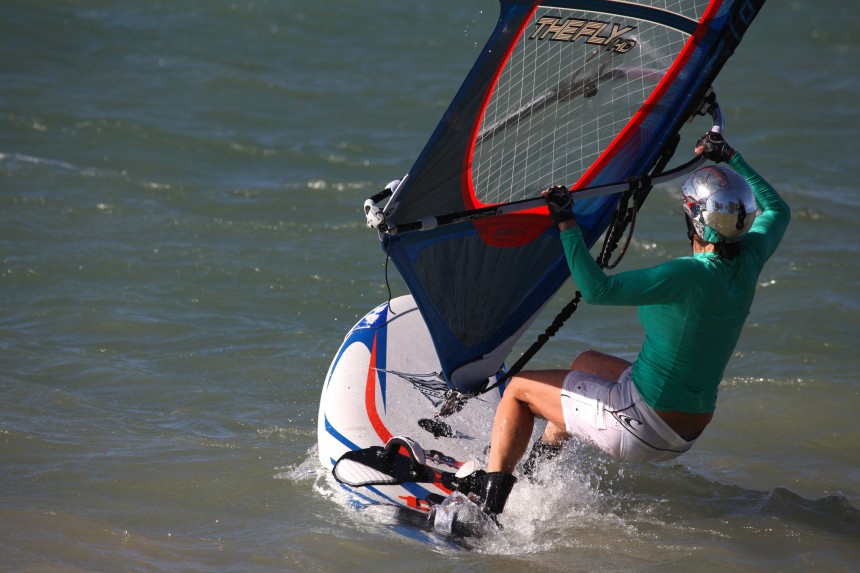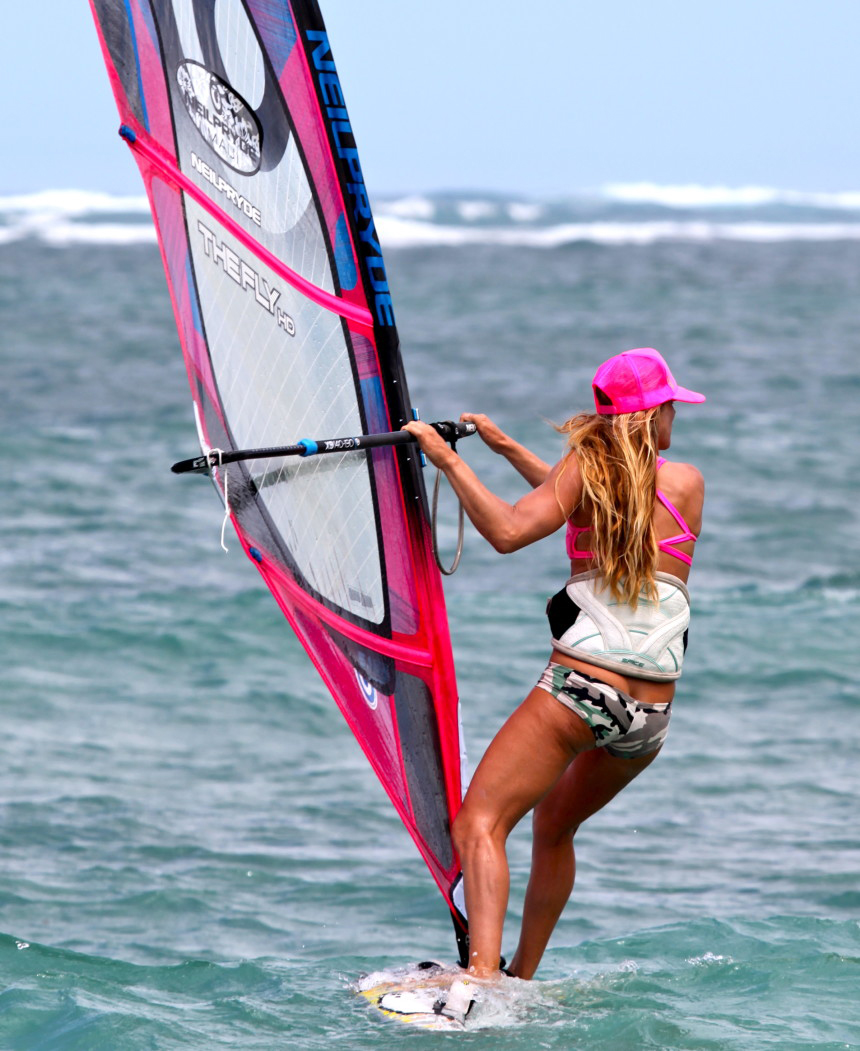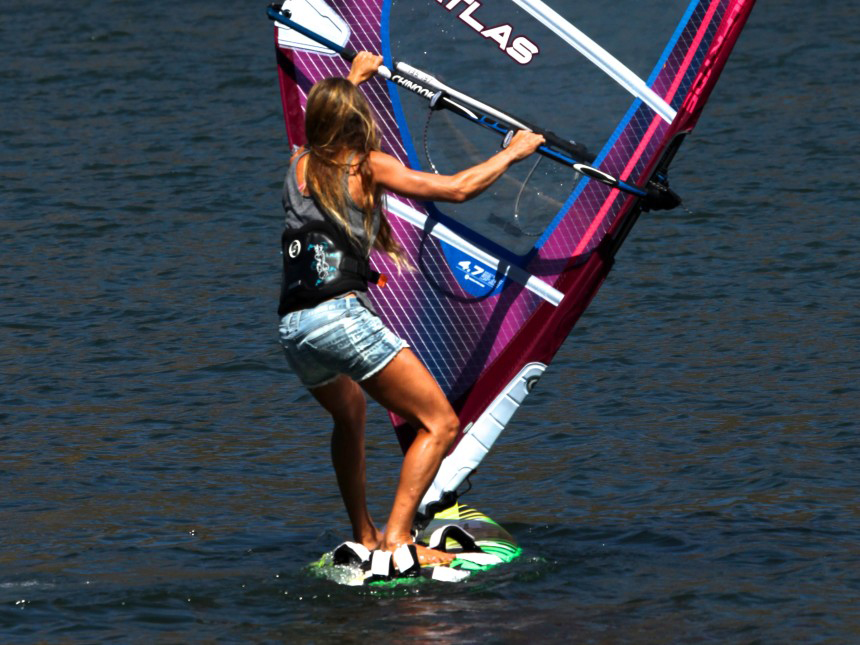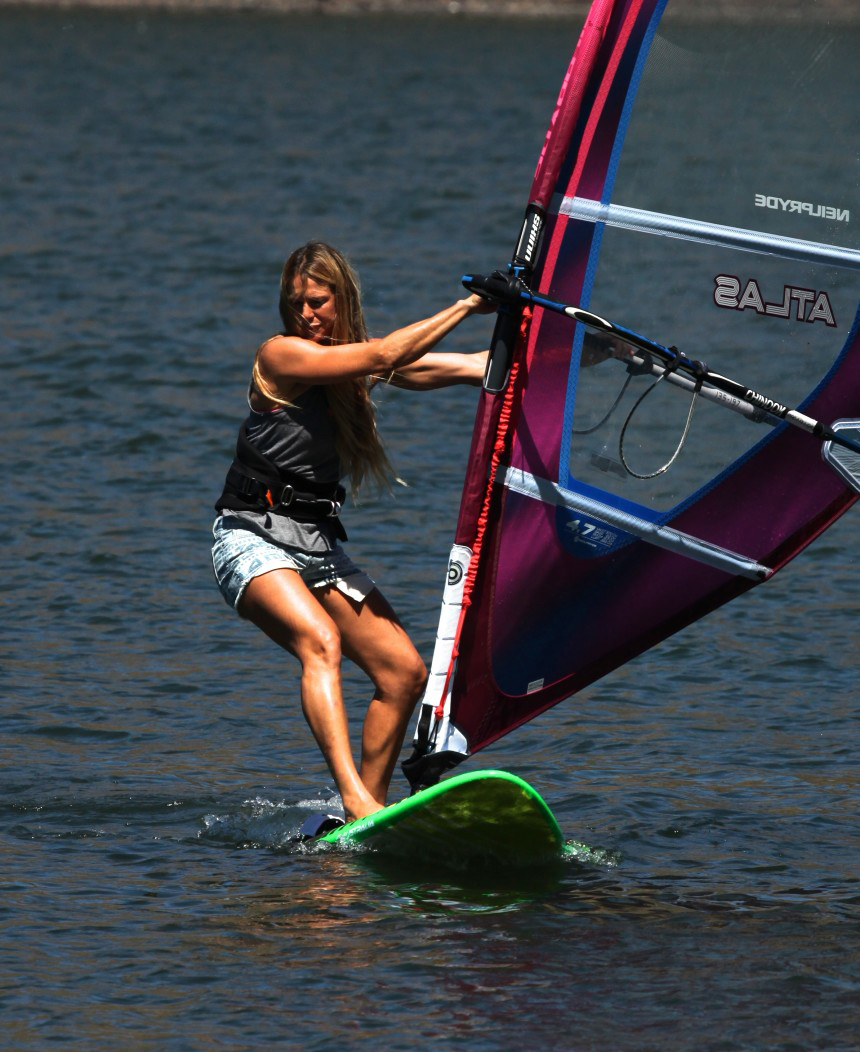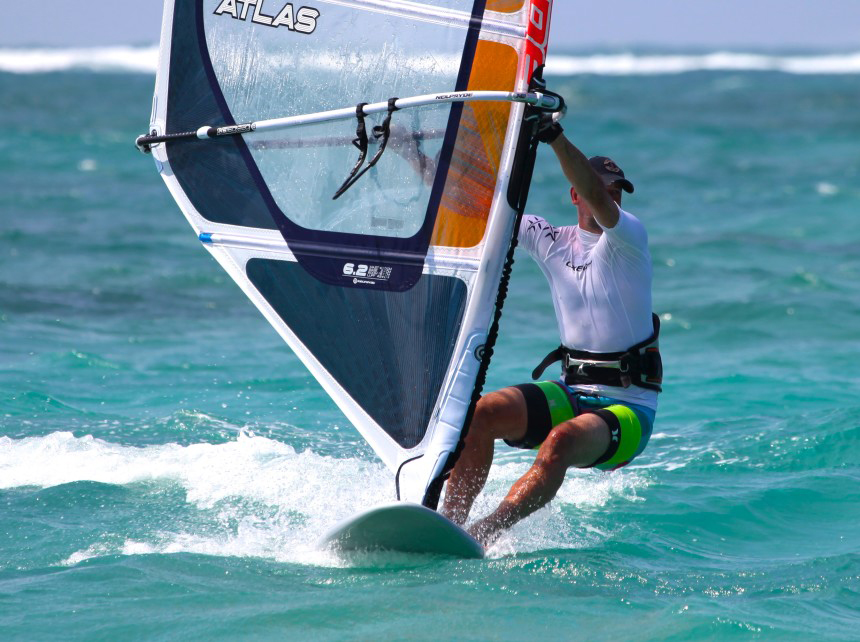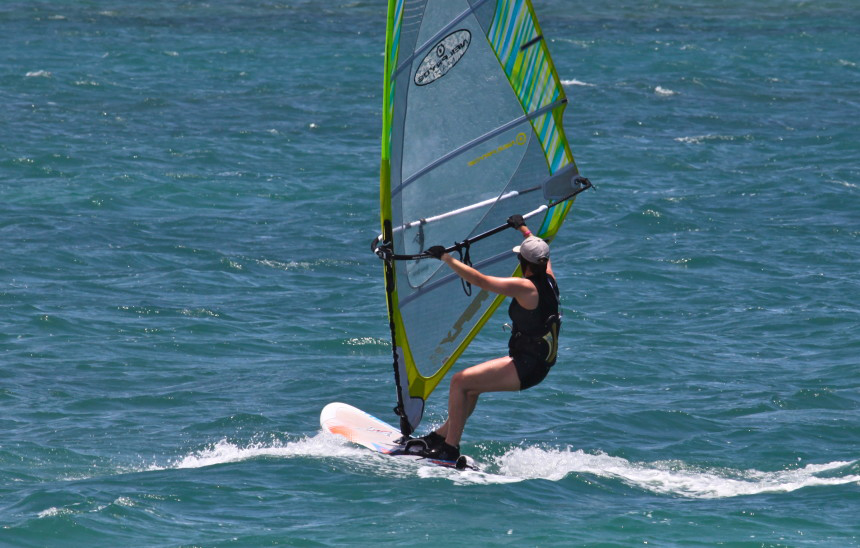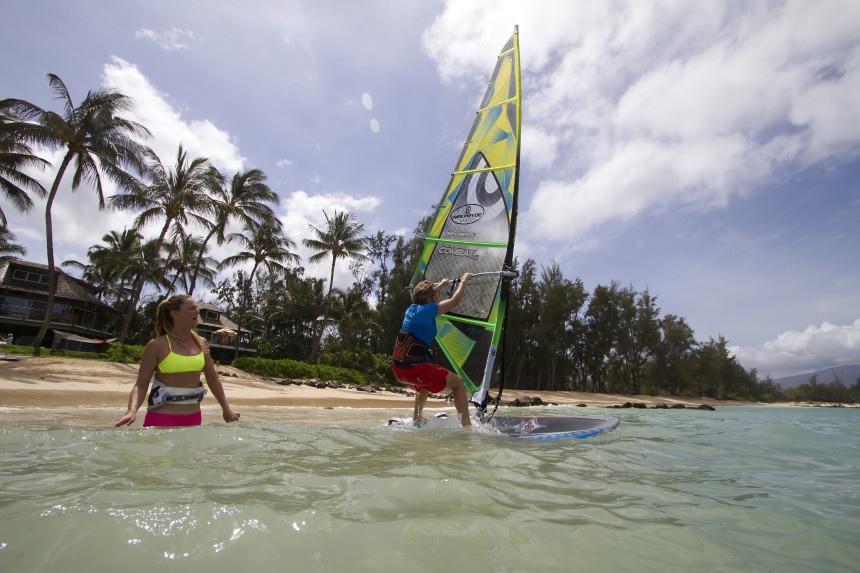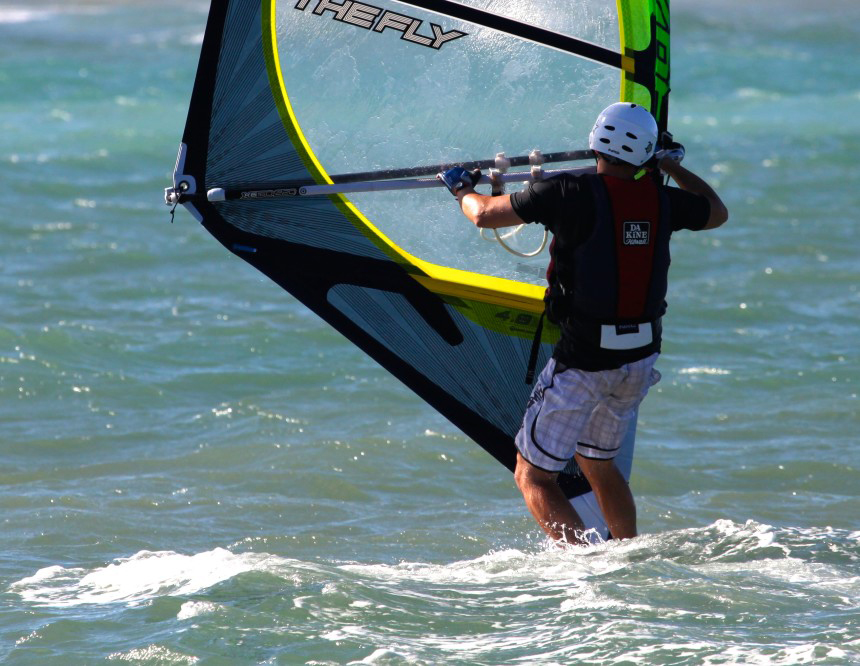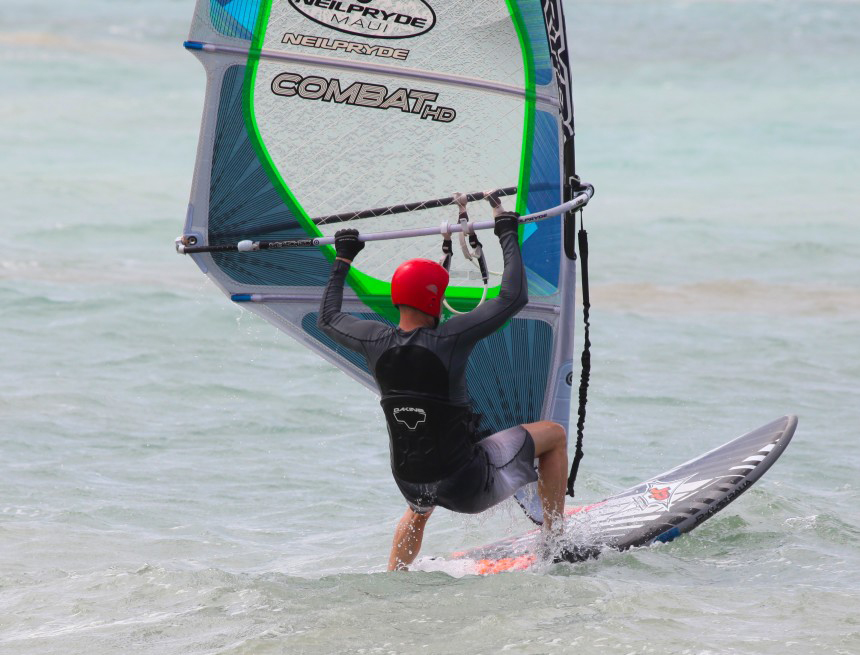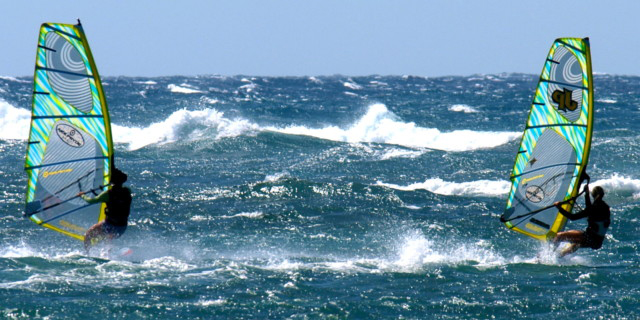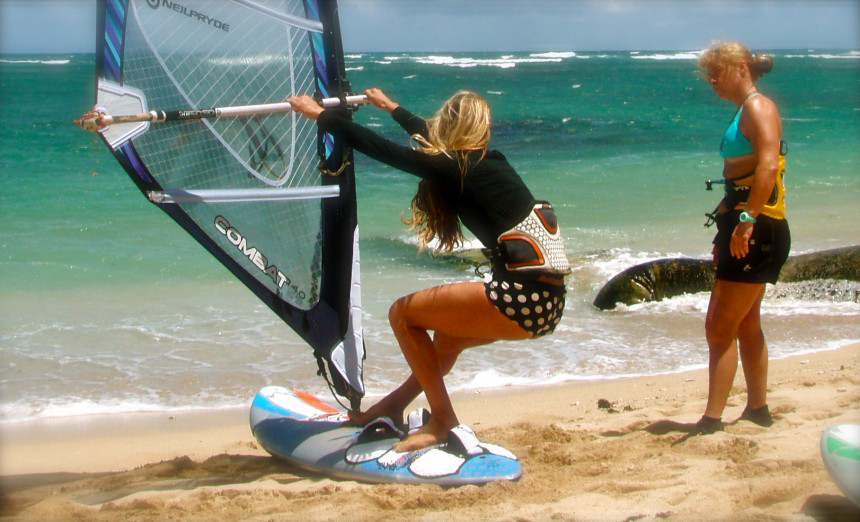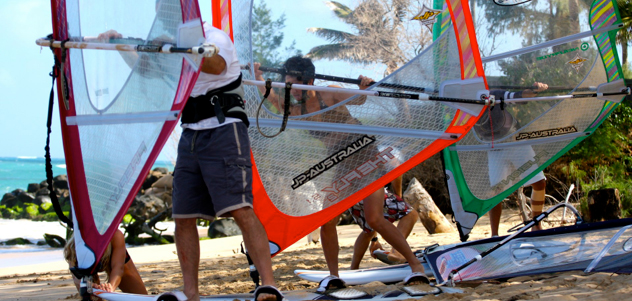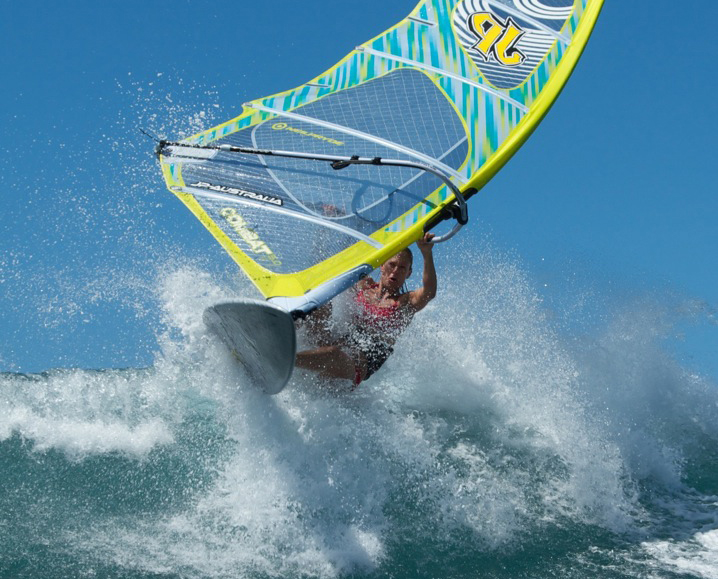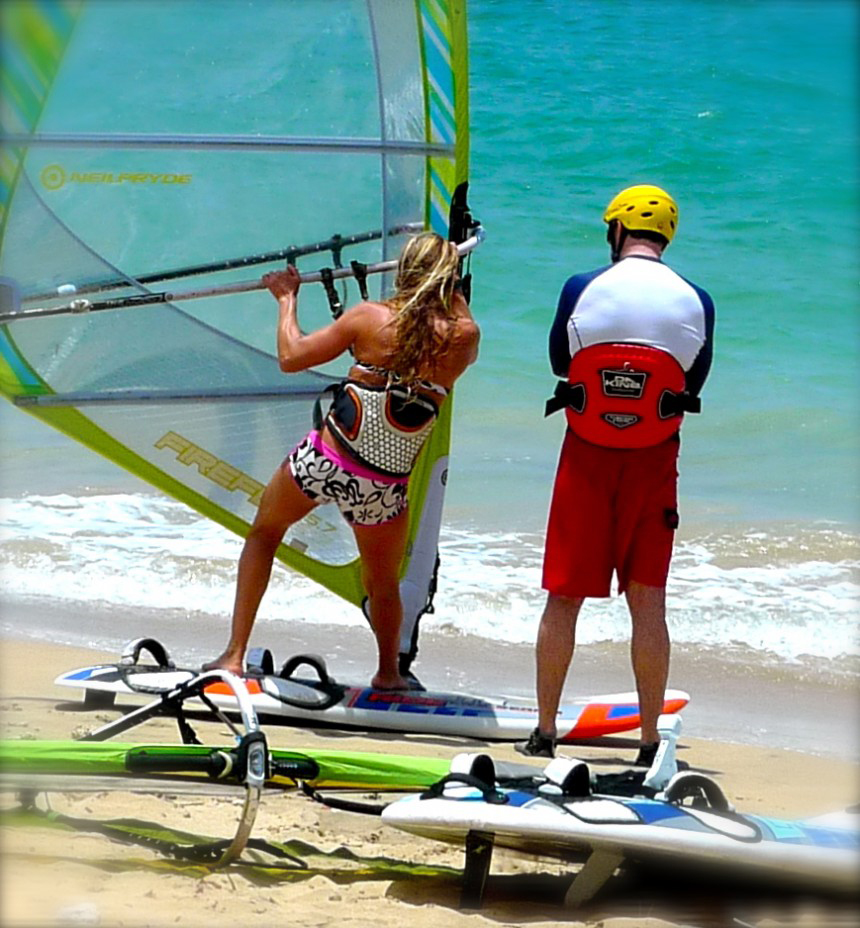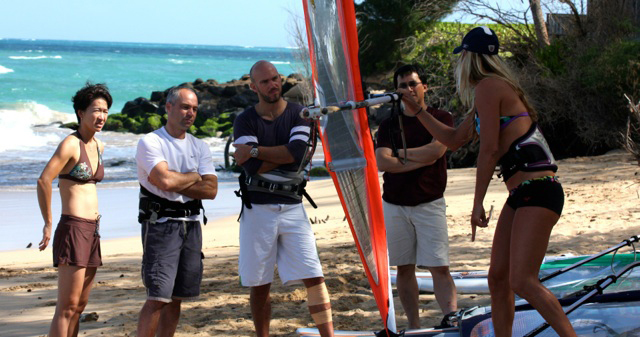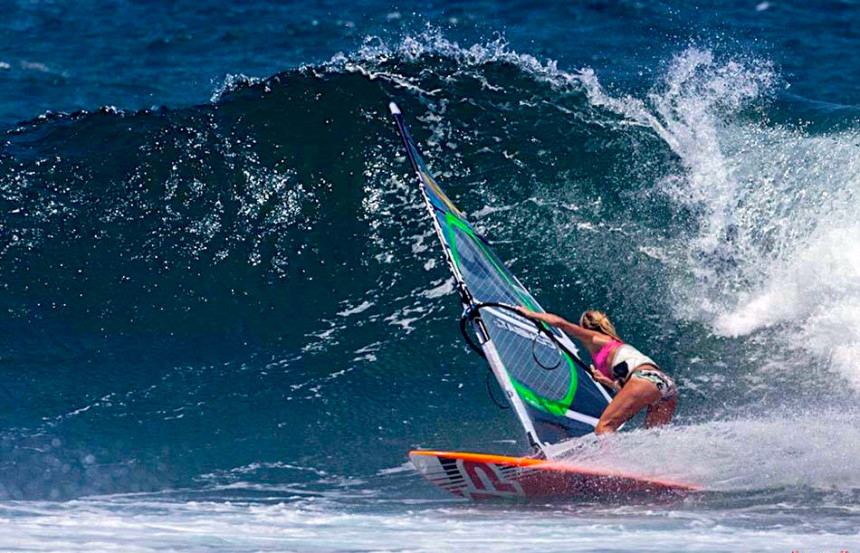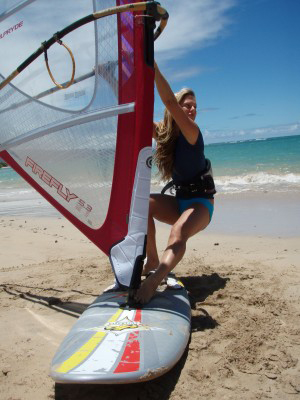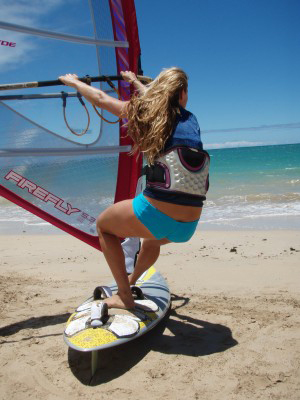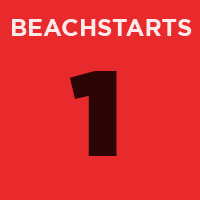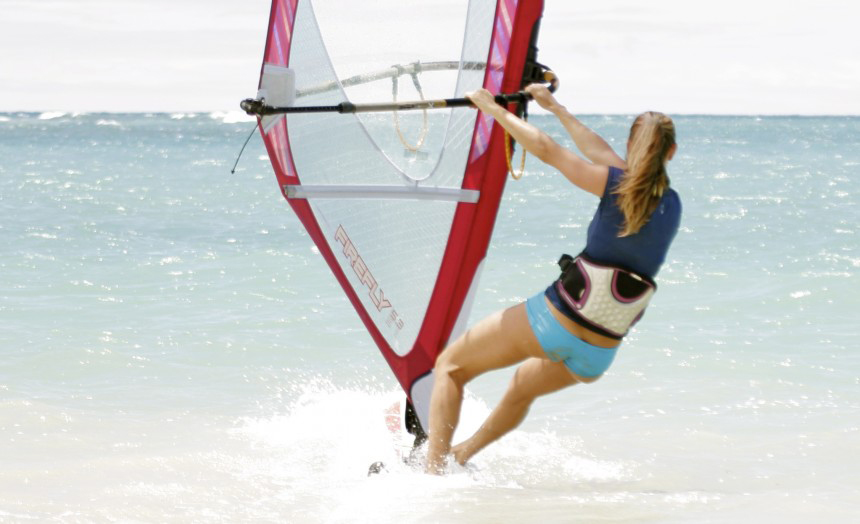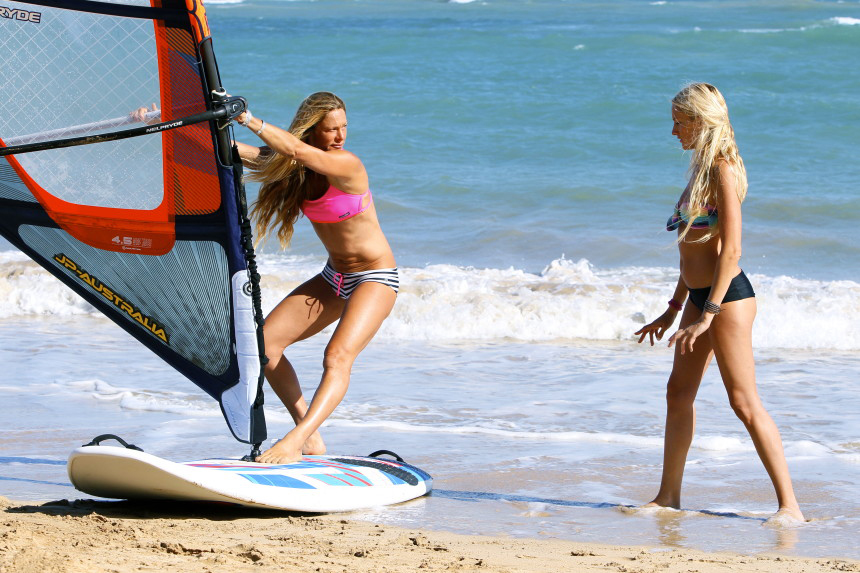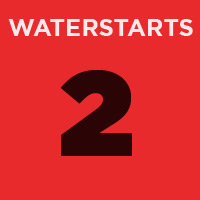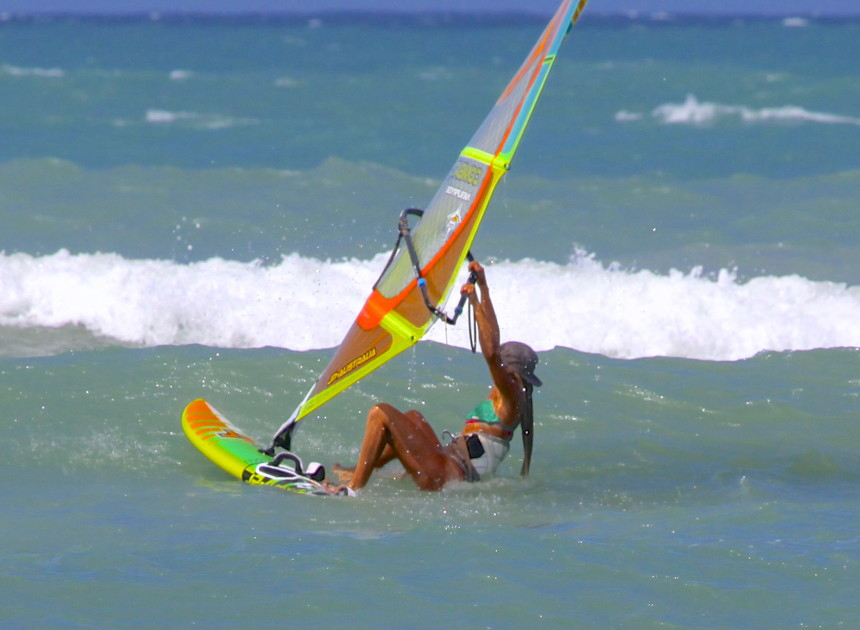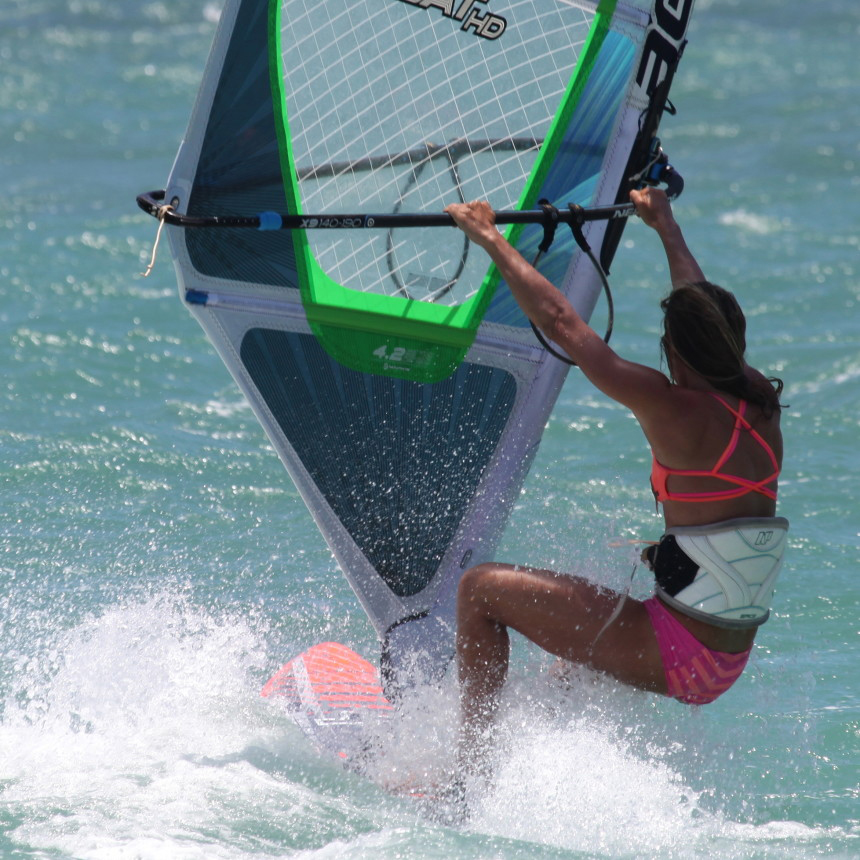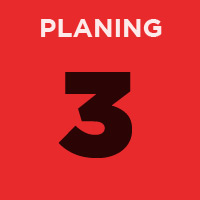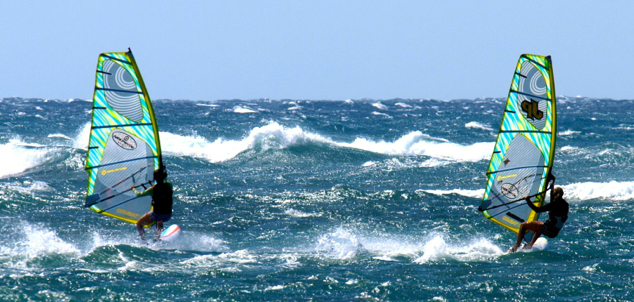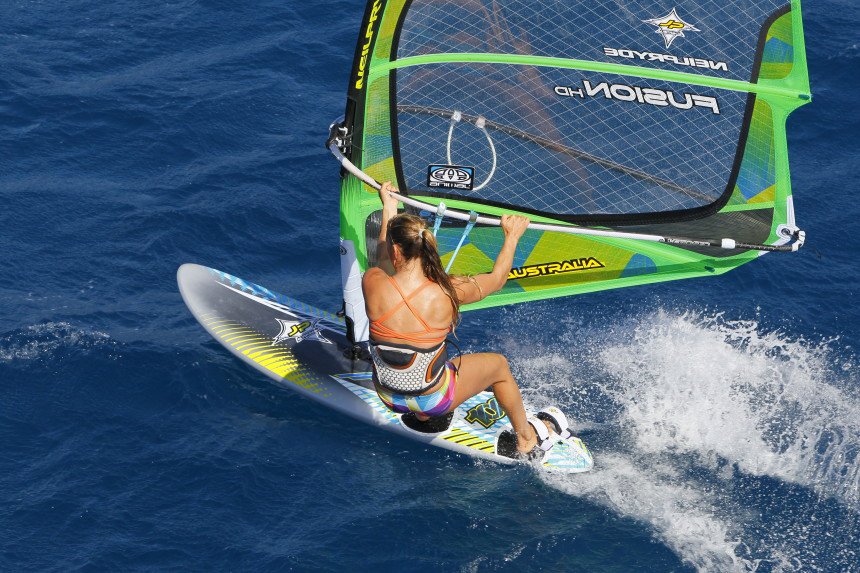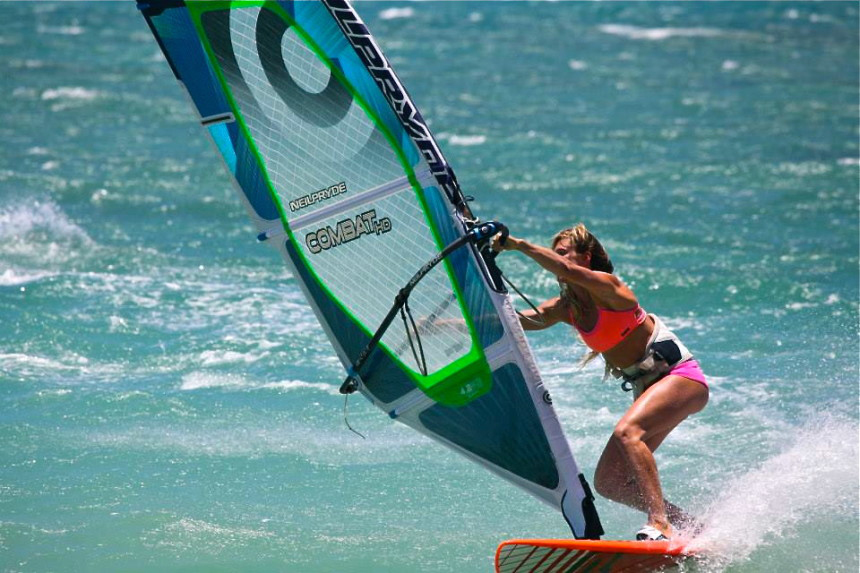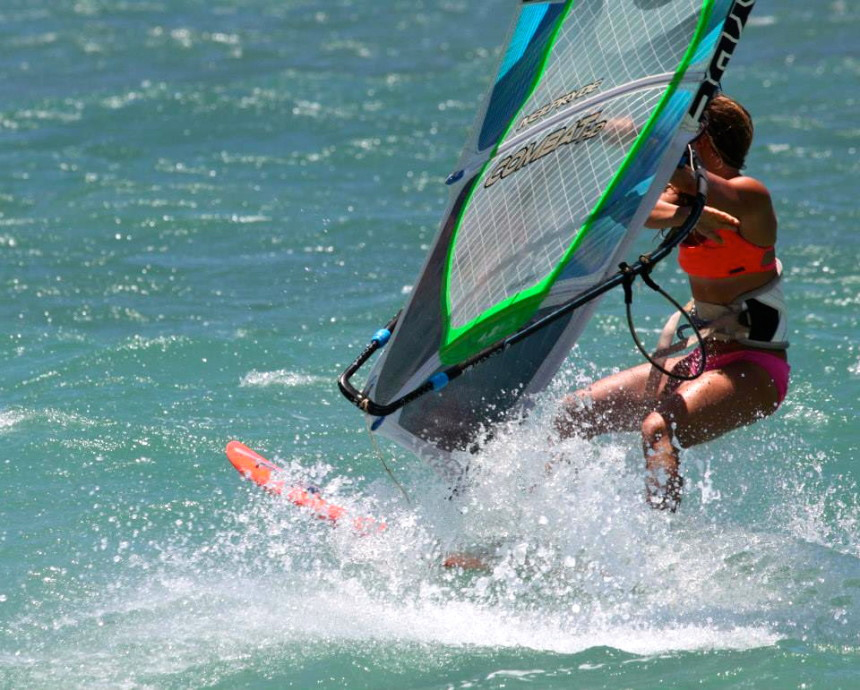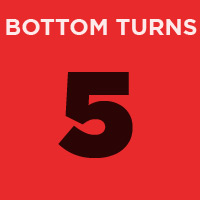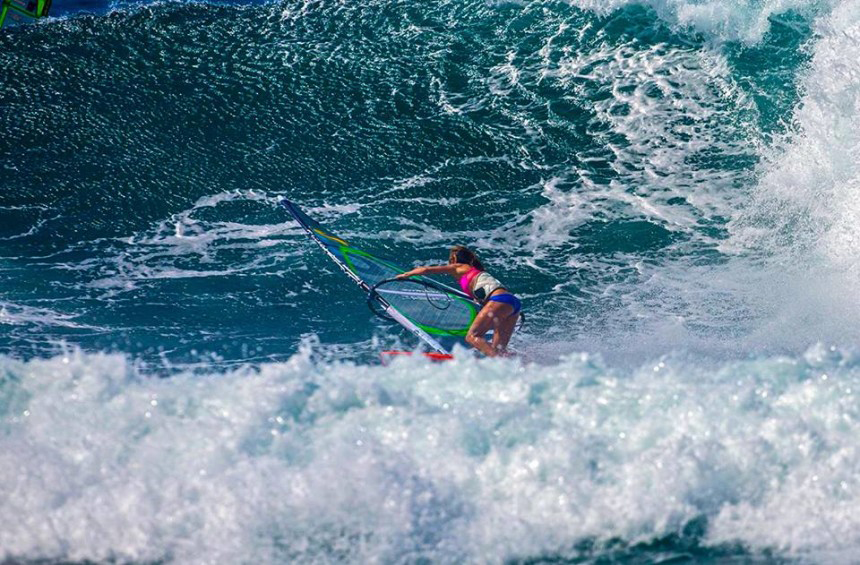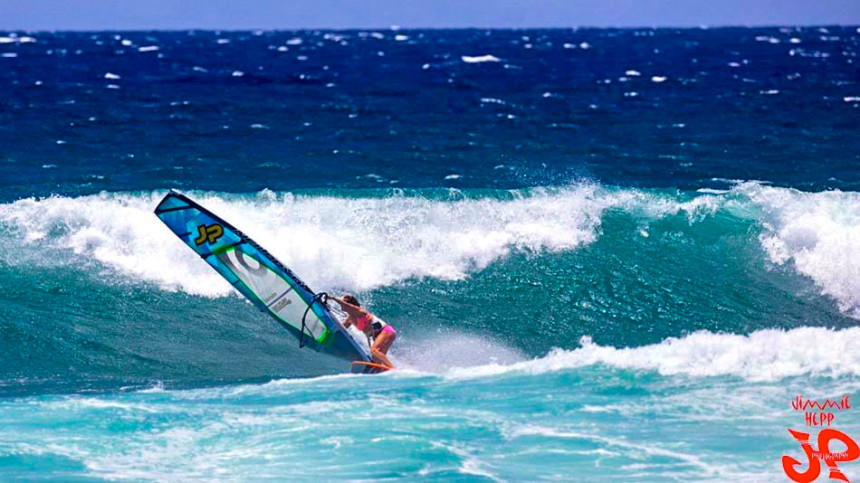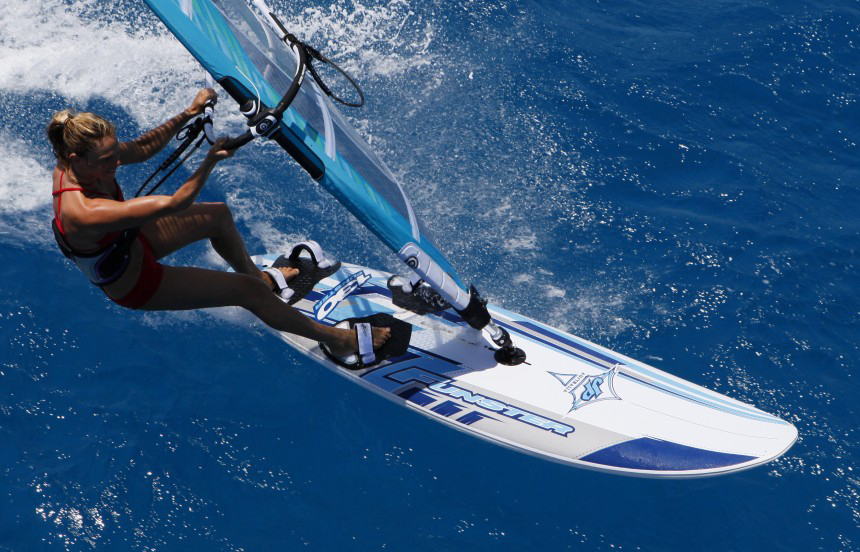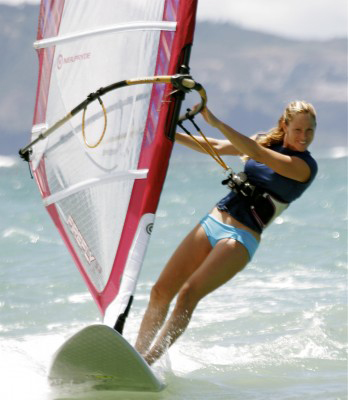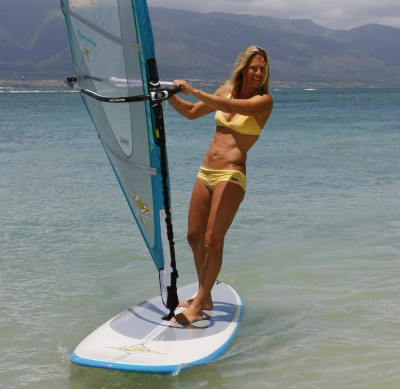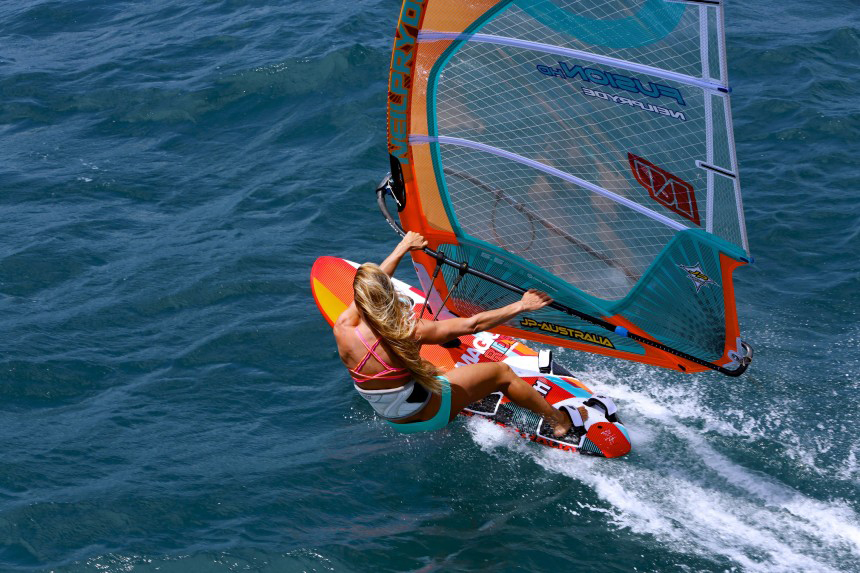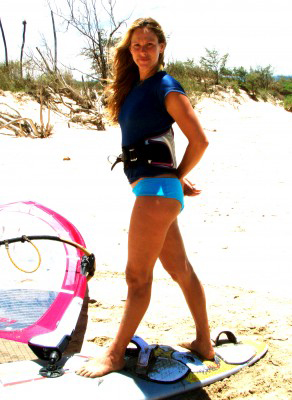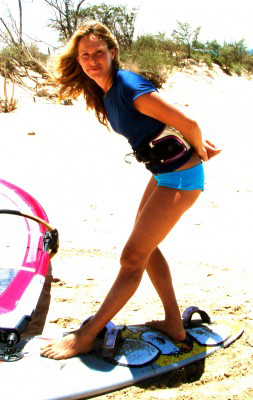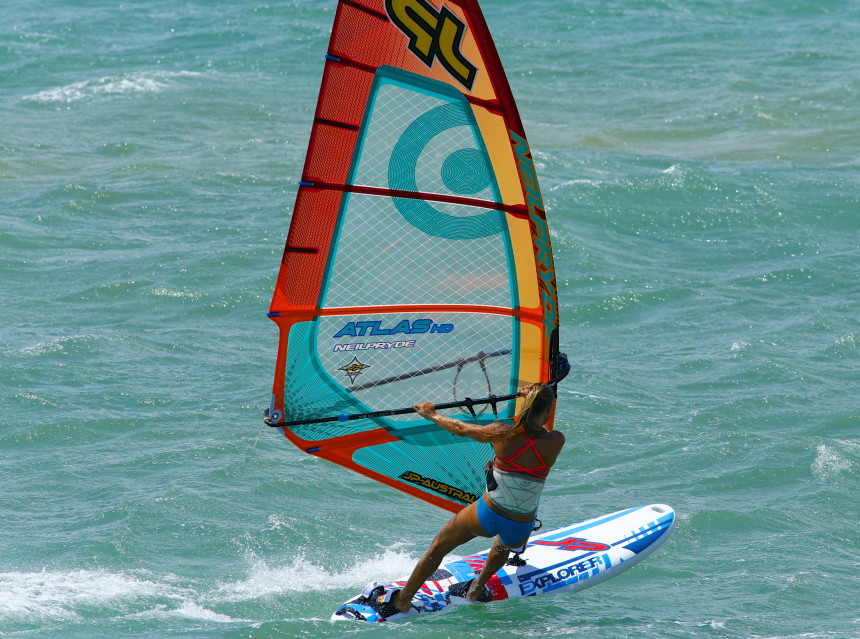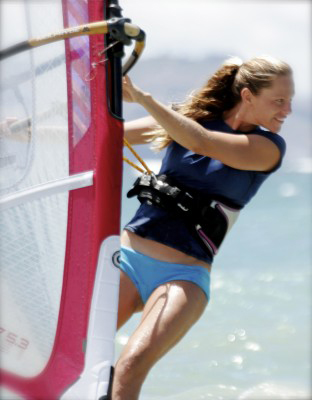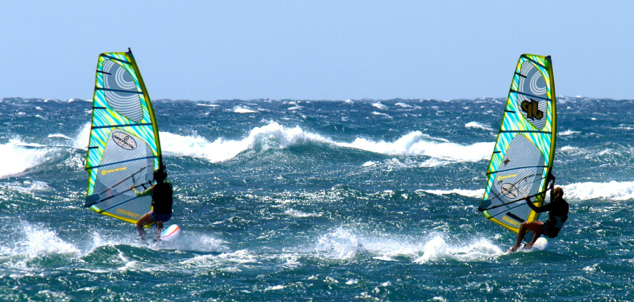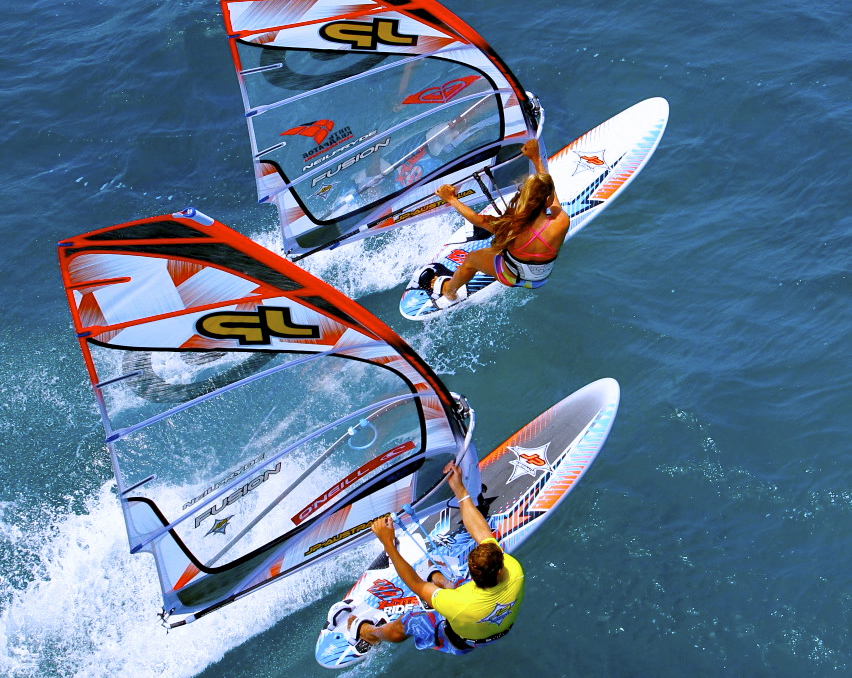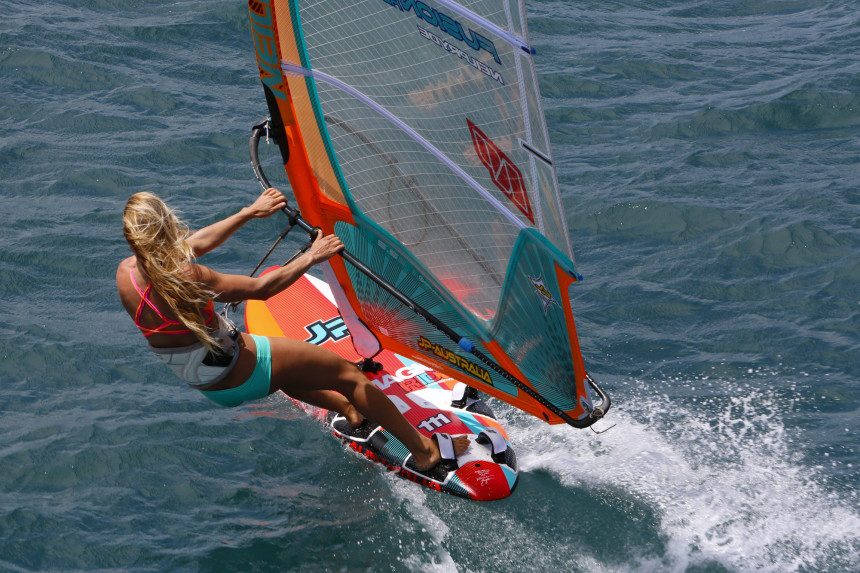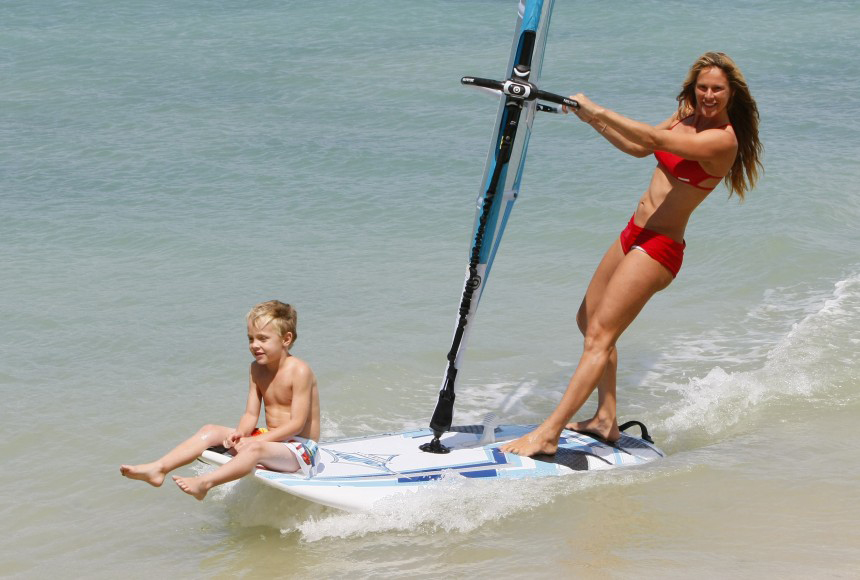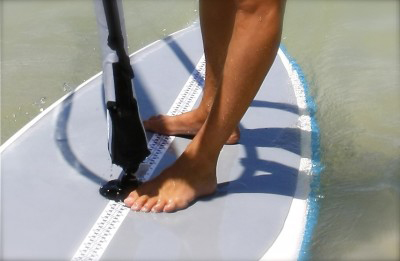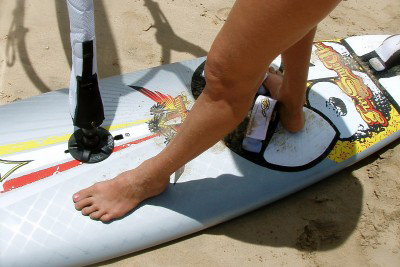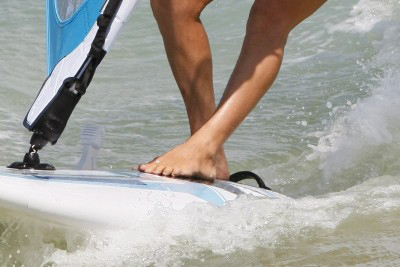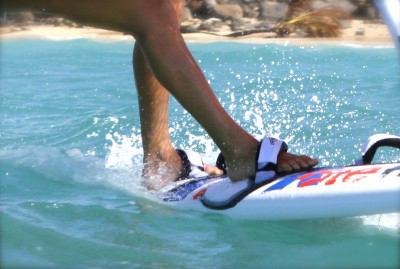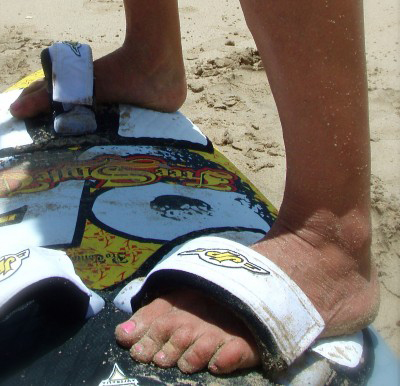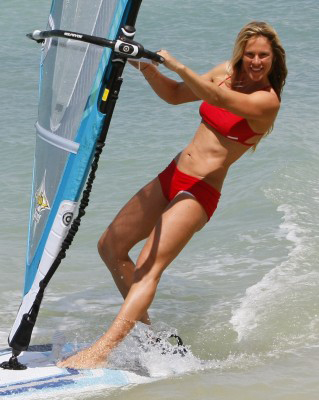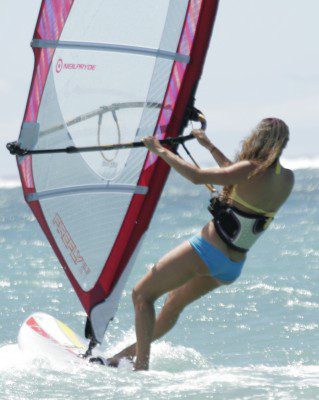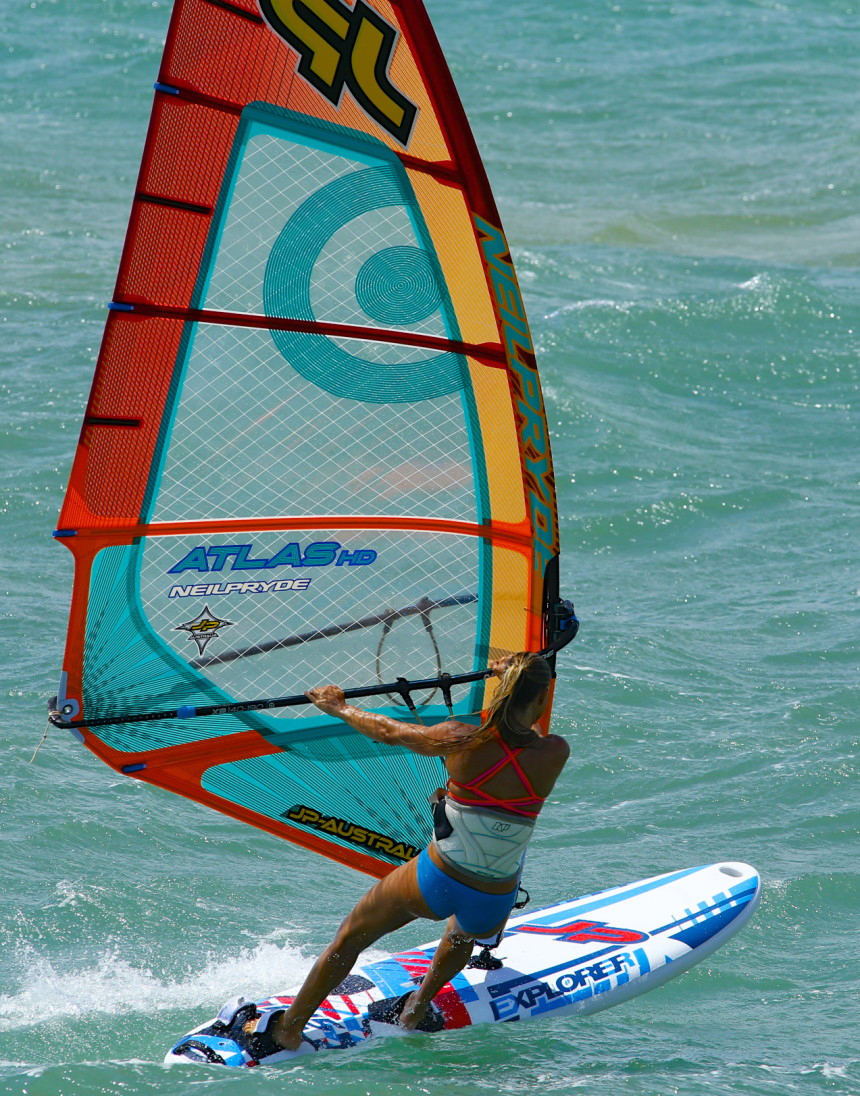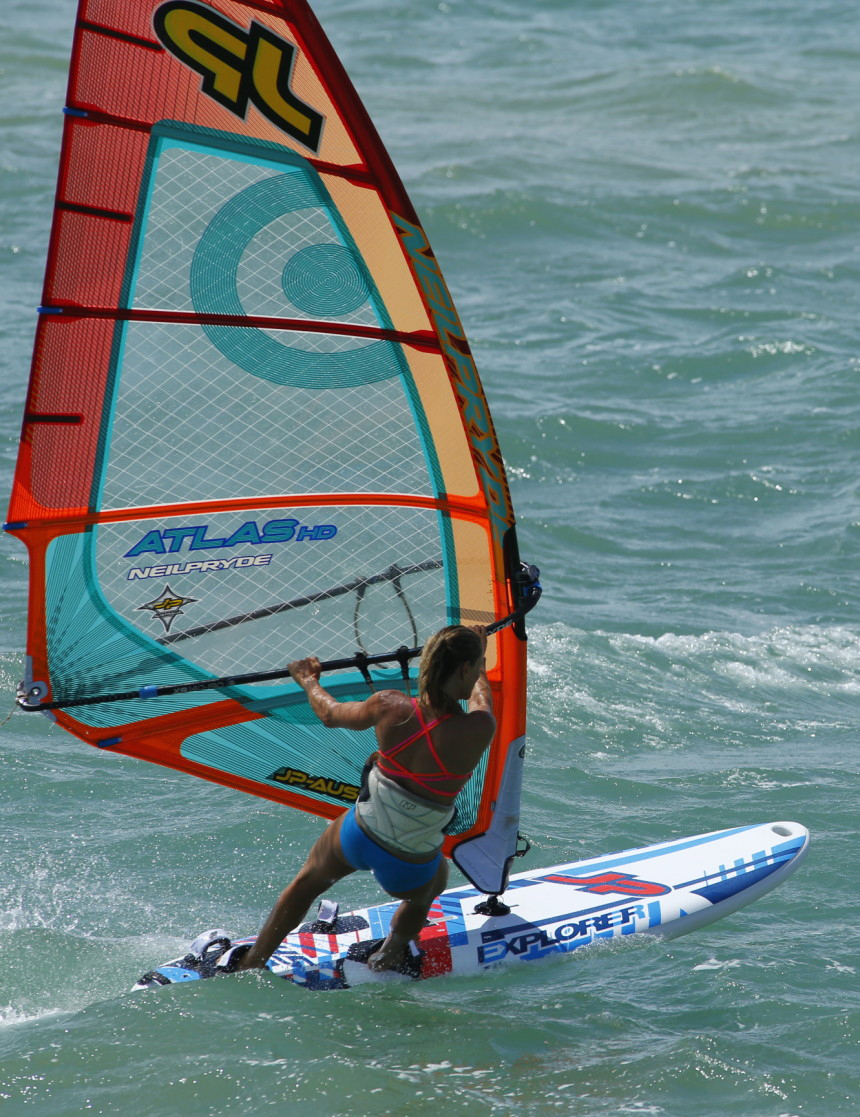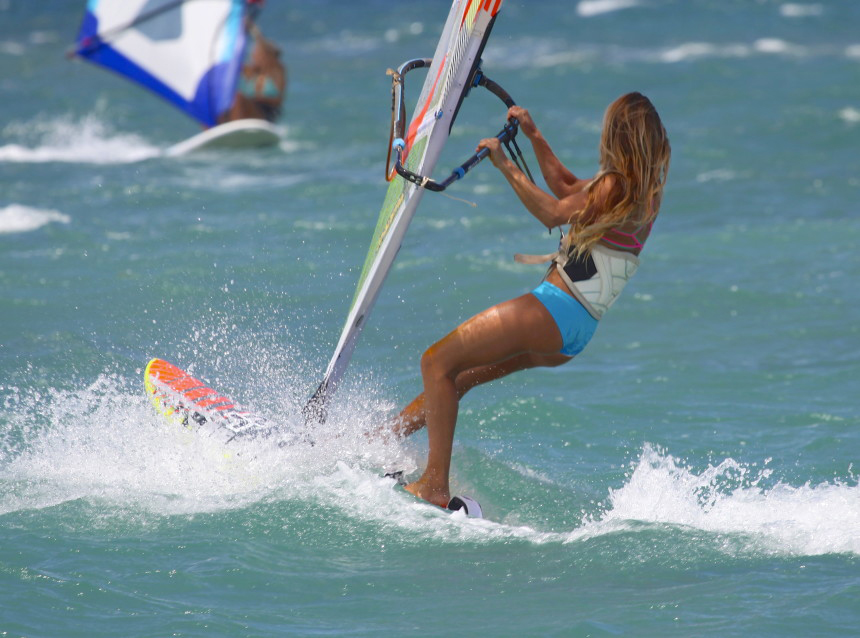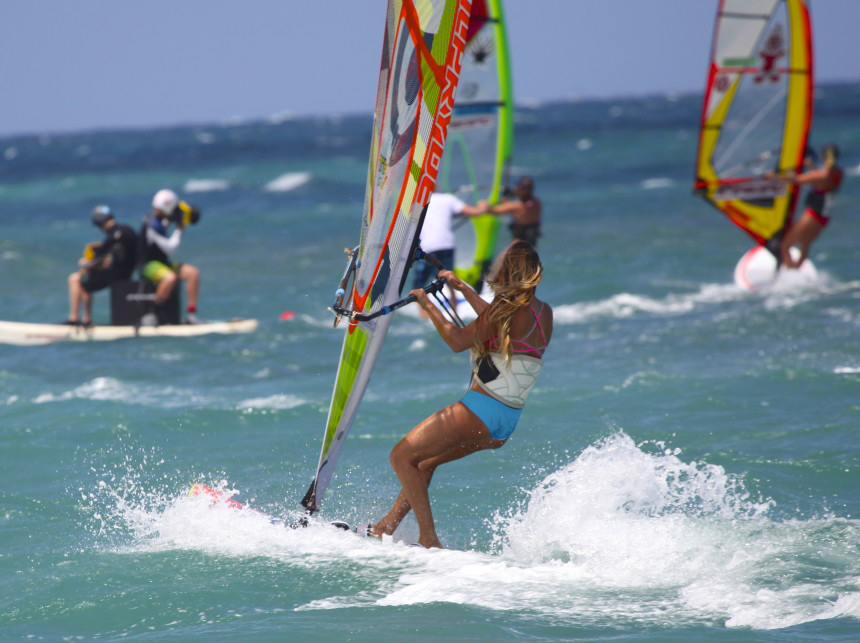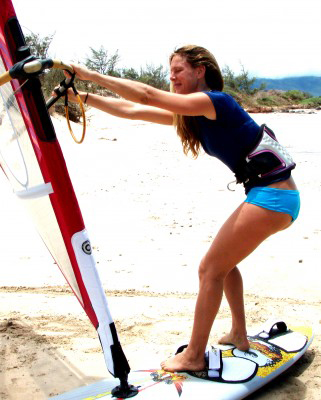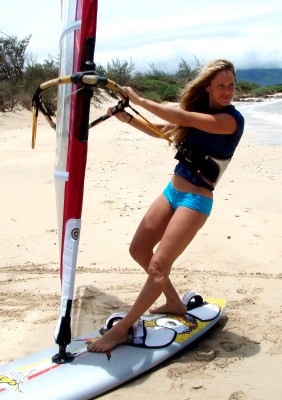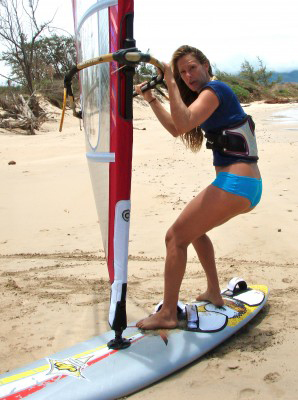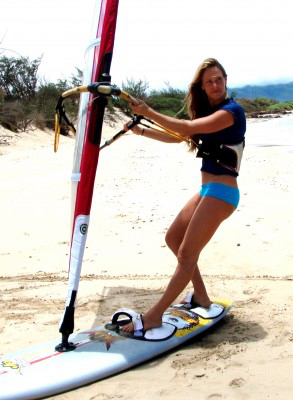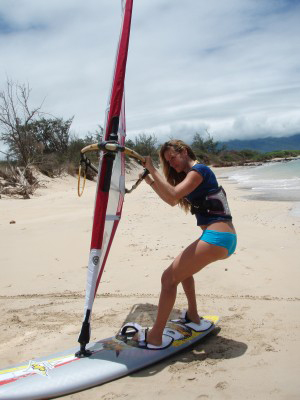East of Eden
Written by Shawna Cropas
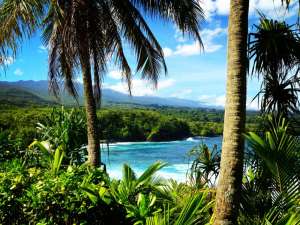
Joined by Carine Camboulives and Emma Starr
Photos by Shawna Cropas, Emma Starr and Thorstan Indra
We were flown here, not grown here… Carine is French, Emma is British while I was hatched in Canada. We are all adventurers, ocean lovers, surfers, standup paddlers & windsurfers with decades of globe trotting under our belts, but when we arrived on Maui we agreed we had found our Eden. An island of such diverse climates it satisfied our needs for change, water sports and cultural diversity. Amazingly, the power of this island was able to cool our itchy feet for just long enough to settle us down to create roots and family.
…But, where does ‘one’ go to get away from it all, when ‘one’ is already living on the most isolated chain of beautiful islands in the world?
The answer is simple. We turned right instead of left.
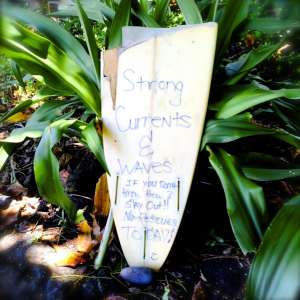 It is at the junction whereHaiku meets the Hana Hwy where we make this decision. A place where we scan sea states for the days water activities from our perch on the hill over looking the expanse of the Pacific ocean ruffled by trade winds.
It is at the junction whereHaiku meets the Hana Hwy where we make this decision. A place where we scan sea states for the days water activities from our perch on the hill over looking the expanse of the Pacific ocean ruffled by trade winds.
Left of us of sits the ever ready playground of Ho’okipa, full of daily surfing, SUP and wavesailing delights, beyond that it rolls into Paia town, Sprecks and Kanaha where we mostly finish our downwind cruises. Further down the coast are myriads of hotels and heavy tourist attraction waiting to dazzle millions of people with nightly Luaus, Hula dance performances where beaches are crowded like pink fleshed human seal colonies. There has always been slight drowning in American conveniences, from box stores, restaurant chains and endless versions of plastic Hawaiian trinkets.
Most days it’s a automatic left, but this early morning we are turning east along the north shore and in the complete opposite direction. We have our trucks loaded full of toys, windsurfers, sups, surf boards, sails, masks and snorkels and we are following the yellow brick road into the heart of Maui’s jungles.
Traveling Companions
My first stop is to pick up Carine Camboulives at her Maui Water Lily Farm. Their house is painted the color of sunshine, snugged before the beginning of the Maui waterfall palooza and the start of 620 curves and 59 bridges. We have been casual friends for years, sharing waves on the south side, chats and smiles at the beach. This is our first adventure together.
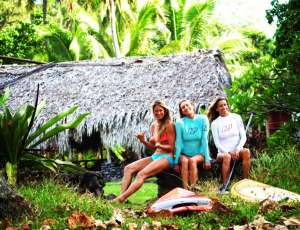 I am pleasantly surprised to pull-up to a classic deep Haiku surf style home. The interior is open spaced, wood, warm and welcoming. I half expected the walls to be covered in massive framed windsurfing covers and articles with crazy exotic artifacts all over the place. Instead Carine seems to exist entirely separated from her magazine persona. She is clearly a mom who’s busy running their lily farm and providing local businesses with flowers when she was not on the water catching waves. The interior of her home is relaxed with snap shot photos and art work pinned casually to the walls, while a ‘wild disarray’ of running after a young child permeates the decor. There is even the classic photo of their youngest daughter buried up to her neck in sand, taped on the fridge door. Her living space is completely egoless revealing little of Carine and Manu’s Windsurf/SUP magazine personalities.
I am pleasantly surprised to pull-up to a classic deep Haiku surf style home. The interior is open spaced, wood, warm and welcoming. I half expected the walls to be covered in massive framed windsurfing covers and articles with crazy exotic artifacts all over the place. Instead Carine seems to exist entirely separated from her magazine persona. She is clearly a mom who’s busy running their lily farm and providing local businesses with flowers when she was not on the water catching waves. The interior of her home is relaxed with snap shot photos and art work pinned casually to the walls, while a ‘wild disarray’ of running after a young child permeates the decor. There is even the classic photo of their youngest daughter buried up to her neck in sand, taped on the fridge door. Her living space is completely egoless revealing little of Carine and Manu’s Windsurf/SUP magazine personalities.
…Until Carine pulls out her iPhone to show us amazing photos of Chile and pictures of their family amongst the Moais of Easter island. Emma and I drool over the stunning images which scratches at our deep itch- ‘the desire to buy a ticket and head off somewhere wild and remote’. Until the kids start whining, “Are we there yet?” five minutes into the journey. Then we are all happy we are only driving an hour east.
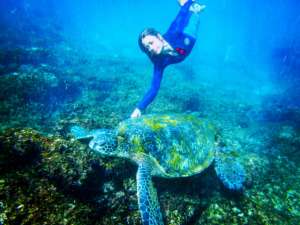 Emma Starr joins us as well. We met surfing at Ho’okipa. She is an amphibious creature who finds her happy place in the ocean. Emma is the wild one, waking up in the middle of the night to catch up with us-
Emma Starr joins us as well. We met surfing at Ho’okipa. She is an amphibious creature who finds her happy place in the ocean. Emma is the wild one, waking up in the middle of the night to catch up with us-
In Emma’s words:
“The 3.30 am alarm went off, I make a cup of tea, grab some chocolate for the road and buckle my still sleeping son into the car. We need to get to the east side of this delicious island by sunrise to catch the early morning light.
I’m meeting a couple of friends, women who still act like they are twenty, who are ready to zip up a banyan tree or head out into big blue waves. The adventure hasn’t vaporized as the children came and all that goes with maintaining everyday life. In fact the desire for new experiences has just become stronger.
I pull up at the beach and there they are. Pickup trucks filled with boards of every size, bikinis on, equipment being unloaded. There’s always a push to get out on the water before the sun has risen, to catch a wave as that first golden light paints the ocean gold.”
Jungle Tripping
As we slip deeper into the moist folds of Maui’s lush forest, everyday ‘busy-ness’ falls away, like layers of dead leaves to find something fresh and edible again. Even our cell phones fall silent as reception is lost. That’s when we find ourselves surrounded by the calming affect of droplets of water slipping off elephant ears. Hushed to the sound of rushing engorged streams where we shed our soiled clothes of every day living to slip into the calm of cooling waterfalls.
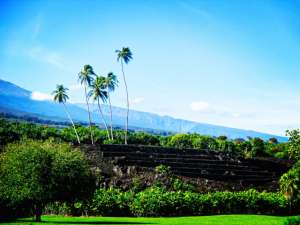 Setting out on the road in the dark just as the skies begin to warm makes it all feel more adventurous, wild and jungly. We are surrounded by thick impenetrable foliage, mostly untouched and un-trampled forest. We practically choke on the dense oxygenated air. It is incredibly quiet except for the sound of waking birds and the ever present dripping sounds of a coastal rain forests. Maui’s ‘giant living sponge’ has been created over millions of years of evolution.
Setting out on the road in the dark just as the skies begin to warm makes it all feel more adventurous, wild and jungly. We are surrounded by thick impenetrable foliage, mostly untouched and un-trampled forest. We practically choke on the dense oxygenated air. It is incredibly quiet except for the sound of waking birds and the ever present dripping sounds of a coastal rain forests. Maui’s ‘giant living sponge’ has been created over millions of years of evolution.
“The Hawaiian rain forest, with its marvelous multi-layered structure–tall canopy, secondary trees, shrubs and fern layers, ground-hugging mosses and leaf litter– are highly efficient at capturing and rating water and allowing it to drip slowly underground and into streams.”
We are escaping to the land of the rising sun and low hanging clouds where the lines between reality and fantasy blur. We are racing full speed into a halt. The halt of time, space and place. So subtle is the allure that most people just drive right on by. Which suits most of us who live here just fine. This is the part of the island that doesn’t entertain you with bright lights, empty seductions and ’101 Things to Do”. Rather it’s a place of deep quiet, secret coves that locals refused to give up. Real culture is lived and not just on display for tourist. It breathes a more Polynesian feel, like time warping back into a Hawaii thirty years ago. The water is pristine and clear, beaches are swarmed with local children with hands full of fishing rods, spear guns and surfboards. Bellies are round. Everyone looks us in they eye and expects aloha, smiles and acknowledgement back.
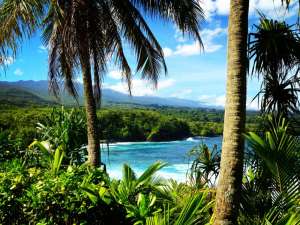 It’s a “soul-cations”, where we rejuvenate our internal batteries and retreat more into Maui’s wilderness. We are ready for whatever comes our way. We take off to investigate quiet coves, low hanging fauna and hidden beach. We are Ok to play in whatever the ocean elements offered up for the day. We caught a a couple perfect days of glassy surf all to ourselves. We found flat water venues with coves completely blocking out by the wind great for paddle boarding and snorkeling. We SUP-sailed in the light breezes small across the bay, while other days the sun only squeaked through the rain clouds for a few hours, where we all opted to swim at an exotic sheltered red sand beach where fresh water spring well up in the ocean which created ethereal glowing turquoise reflections.
It’s a “soul-cations”, where we rejuvenate our internal batteries and retreat more into Maui’s wilderness. We are ready for whatever comes our way. We take off to investigate quiet coves, low hanging fauna and hidden beach. We are Ok to play in whatever the ocean elements offered up for the day. We caught a a couple perfect days of glassy surf all to ourselves. We found flat water venues with coves completely blocking out by the wind great for paddle boarding and snorkeling. We SUP-sailed in the light breezes small across the bay, while other days the sun only squeaked through the rain clouds for a few hours, where we all opted to swim at an exotic sheltered red sand beach where fresh water spring well up in the ocean which created ethereal glowing turquoise reflections.
East Maui holds Hale Piilani, not only the states larges Hawaiian temple but this heiau (place of worship) is the grandest in in all of Polynesia and dates back to the 13th century predating the arrival of Tahitians to Hawaii. Though this neck of the woods is now considered some of the most remote and isolated communities in Hawaii it used to be the center of the Hawaiian universe in the 13th -15th century with it’s abundant rainfall and fertile soils.
Get Breath
It is refreshing to be surround by a very much living and breathing Hawaiian island lifestyle. We are surrounded by tikkis, bright pink plumeria trees and bread fruit. Everything looks different here. The people are not dressed in the latest fashion and whites sand beaches are swapped for volcanic black or even red sand beaches. Even the leaves on trees seem to be bigger and more grandiosely shaped. It gives us the sensation of being in a fairytale or in the land of giants. We are surrounded by untouched nature and ancients culture. Diverse vegetation and the islands indigenous flora and fauna such as odd shaped noni, (one of most widely used medicinal plants in Polynesia). Plumeria, dense vegetation and overripe fruit permeates the moist clinging air. Low hanging clouds, rainbows and wild guava’s.
 There are no surf, SUP or windsurf shops, no surf rentals and no lesson, but there is plenty of undeveloped tropical paradise. Locals do enforce a hush down on all secret treasures of the area, whether it is their pumping surf locations, cool fresh water spring caves or special beaches. Nothing is signed posted and locals are not jumping up to show us the way. It is obvious that tourist are just barely tolerated.
There are no surf, SUP or windsurf shops, no surf rentals and no lesson, but there is plenty of undeveloped tropical paradise. Locals do enforce a hush down on all secret treasures of the area, whether it is their pumping surf locations, cool fresh water spring caves or special beaches. Nothing is signed posted and locals are not jumping up to show us the way. It is obvious that tourist are just barely tolerated.
Luckily we are driving a Tacoma- ‘Maui’s local state vehicle,’ so everyone waves to us and greets us warmly. It also doesn’t hurt that we are three woman traveling alone with munchkins, (family is a huge part of Hawaiian culture). But, even so, we were warned before we left not to take photos revealing any spots.
To give you an idea about how the locals feel about their secret beaches being photographed we will relay a story. ‘A born and raised in Hawaii’ friend in the industry had decided to head East to do their kite product shoot one year. They were in the middle off filming and photographing in ‘the bay’ when a few locals turned up and simply told them to stop. The Hawaiian’s asked them for their cameras and proceeded to make them delete all their footage in front of them before wishing them ‘aloha’.
I suppose it’s just part of the pros and cons of keeping this area, “one of the last unspoiled Hawaiian frontiers.” It is clear we have to tread lightly, but big smiles are returned with big smiles.
SUP, Surfing & Sailing
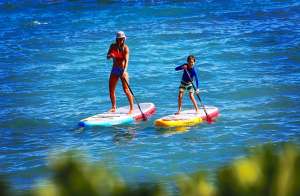
As for the SUP, sailing or surfing. Maui protrudes out of the middle of the largest body of water on earth. The Pacific covers 46 percent of the earths water surface! Hawaii is swamped by the enormity of this ocean that is swept by daily trade winds. It’s just a matter of leaving the land and you are sailing the open seas or surfing the waves. Launches off the island are varied and many.
We’re not going to give up the secrets which lay east of Eden. It’s an adventure to discover for yourselves. We’ll leave it up to you to have your own experience finding secret beaches with the right angles which change depending on the shifting wind directions.
If you desire an authentic experience turn right… If you want dazzling lights, drinks, entertainment and easy SUP access turn left!
Equipment and Guides
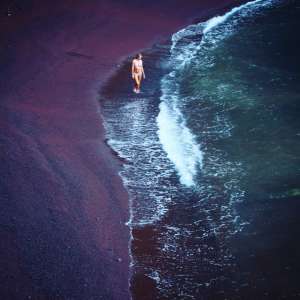
If you are visiting Maui, all ocean toys, equipment, sun protection and gear can be bought or rented from Adventure Sports Maui whether you are looking for NP rash guards, harnesses and wetsuits. JP-AUSTRALIA, SUP and windsurf boards, Cabrinha kites, Neil Pryde windsurf gear or Kaenon eyewear.
Also if you are interested in a more "local" Maui experience check out Shawna Cropas’s Aloha Windsurfing Clinics and Ocean Retreats.
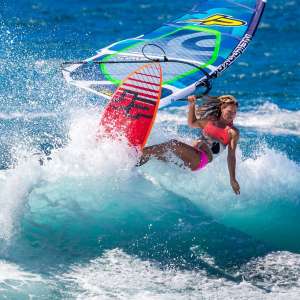 Shawna Cropas is a sponsored sailor and avid surfer ranked amongst the top 5 females wavesailors in the world with twenty years of coaching experience. She combines having fun with muscles memory style learning. Christian is an incredible and well rounded water sports athlete on the cutting edge of the foiling boom. He’s been teaching kiting for over a decade in-between mass ocean adventures & surfing. Both Christian and Shawna are certified instructors as well as being parents themselves, they do understand the delicate art of keeping children engaged and responding to their needs.
Shawna Cropas is a sponsored sailor and avid surfer ranked amongst the top 5 females wavesailors in the world with twenty years of coaching experience. She combines having fun with muscles memory style learning. Christian is an incredible and well rounded water sports athlete on the cutting edge of the foiling boom. He’s been teaching kiting for over a decade in-between mass ocean adventures & surfing. Both Christian and Shawna are certified instructors as well as being parents themselves, they do understand the delicate art of keeping children engaged and responding to their needs.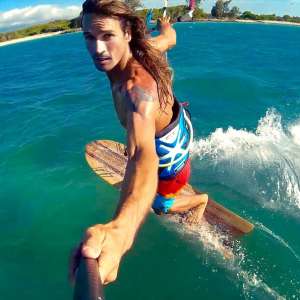
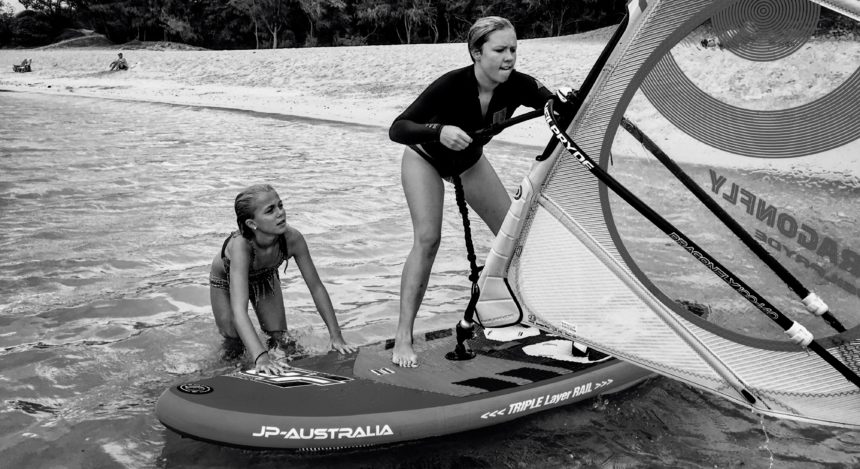
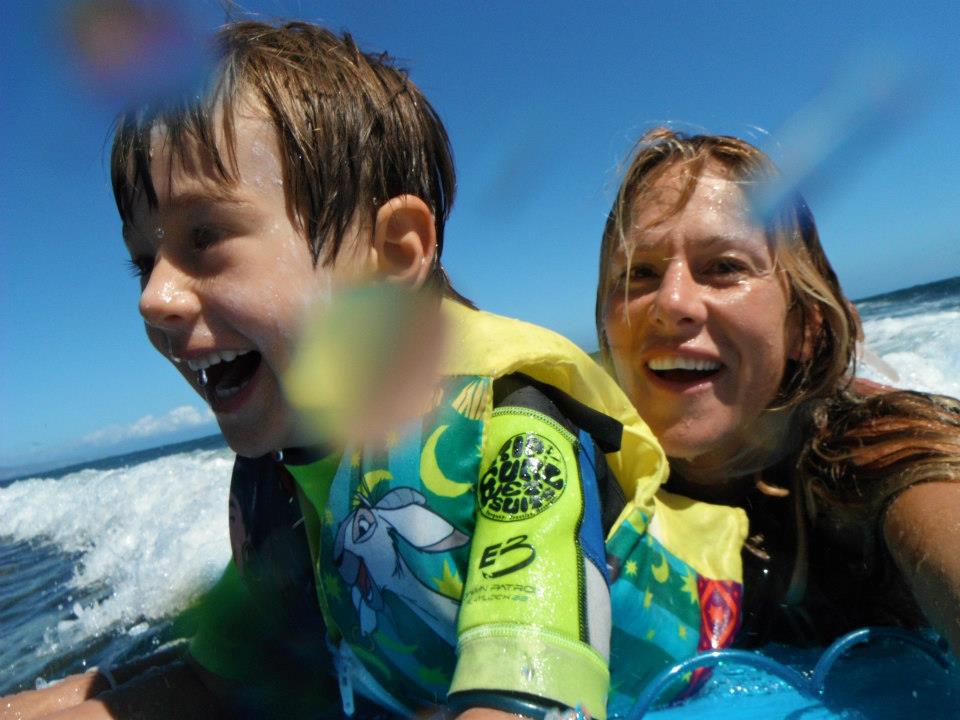
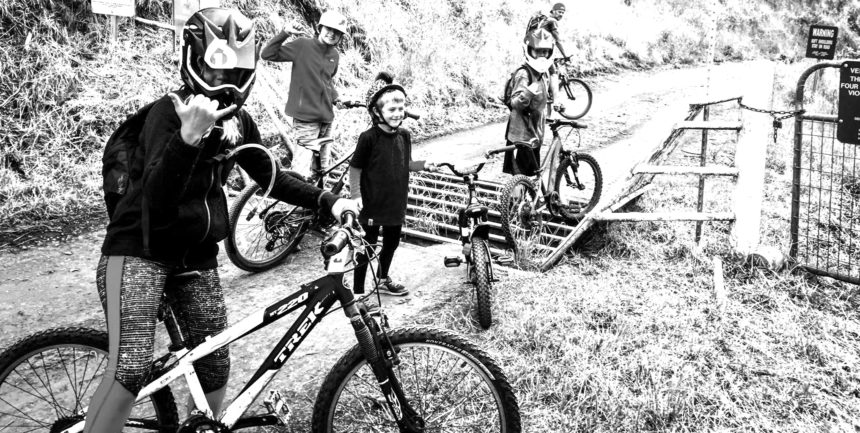

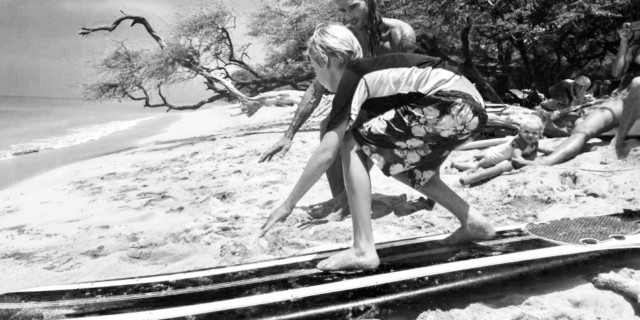
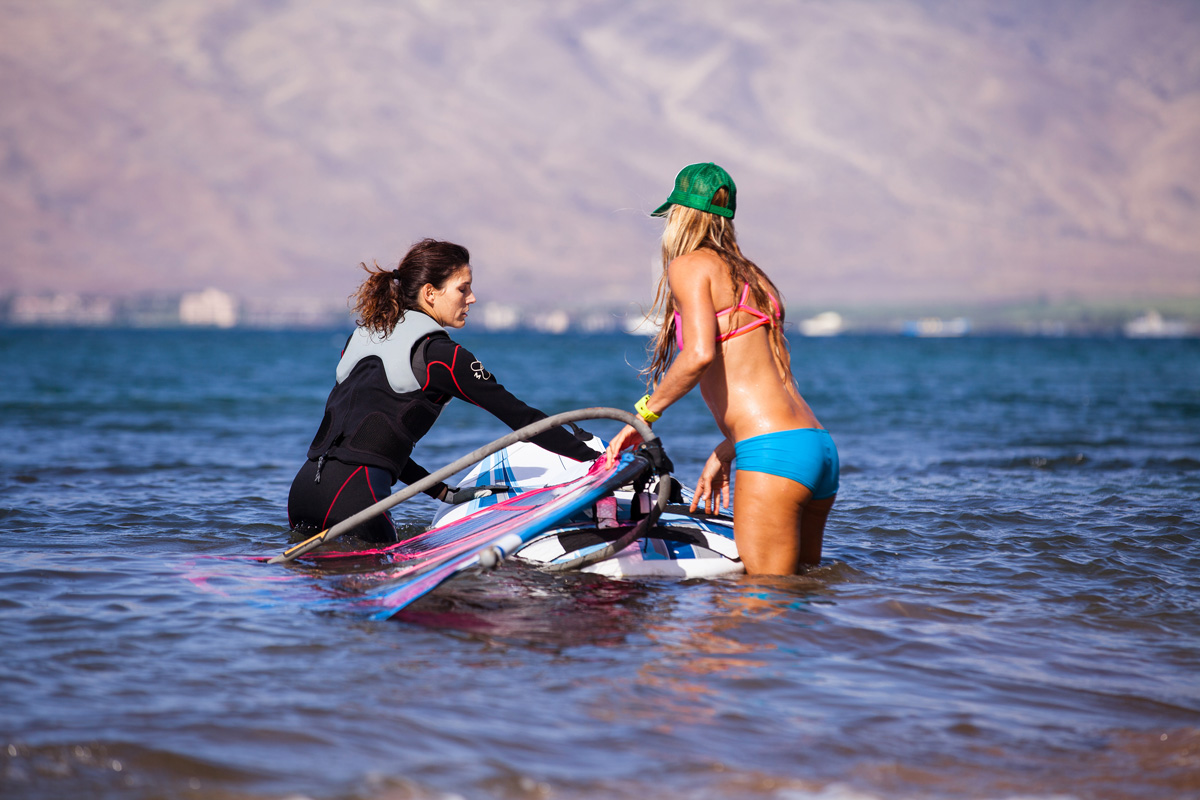
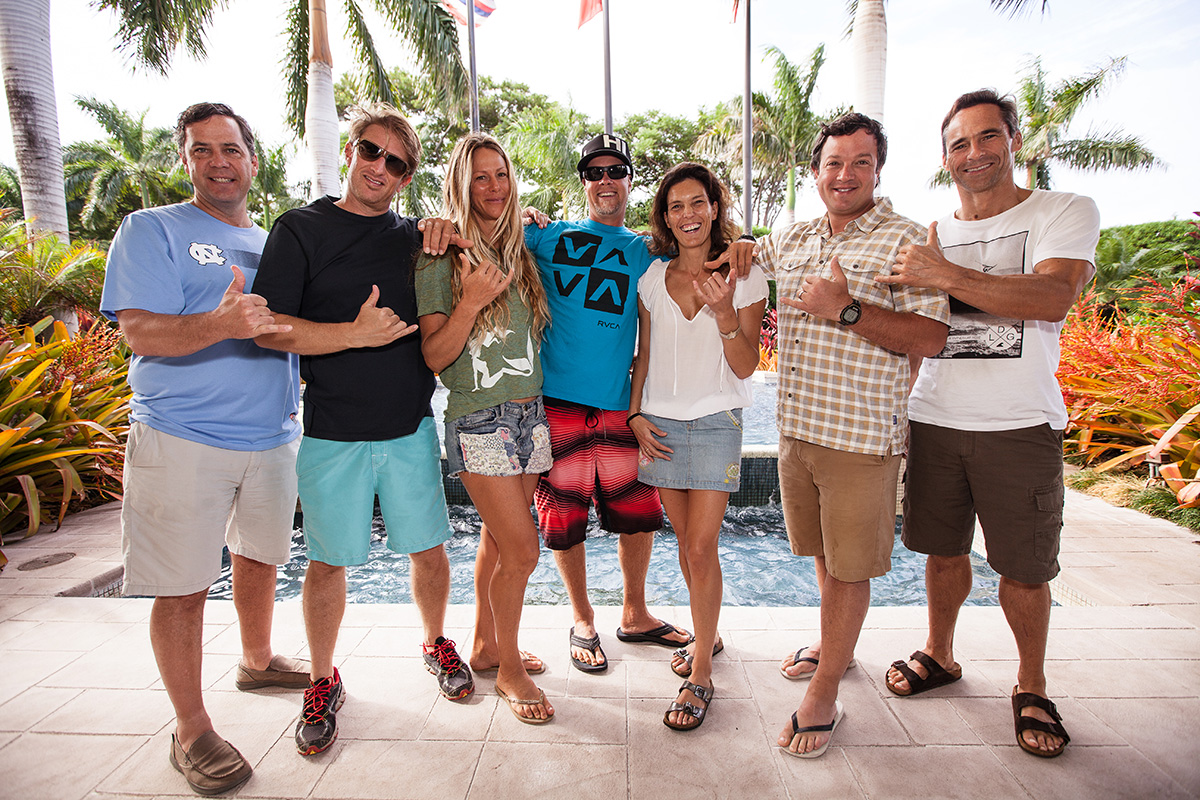

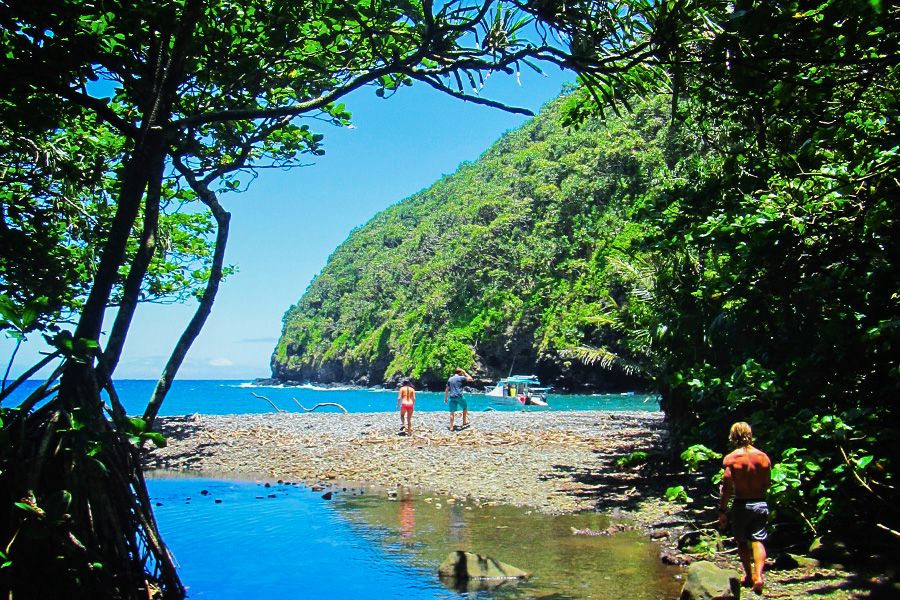
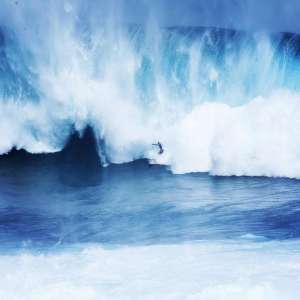 Let’s face it. Just sitting on the cliffs, a spectator at Jaws is a retarded experience of winter time big wave madness. It sometimes feels eerily like watching an execution as surfers are pummeled by Poseidon’s death blows. There’s a collective holding of breath as the audience waits for a rider to resurface. You know surfers are defiantly wresting giants and are at least 50 foot, when you look down from your perch on the cliff and the Pacific seems to shrink down to the size of a pond, when 120 ton whales breaching look like bait fish skimming the surface and the surfers riding ‘The Wave’ seem to scale down to the size of ants. Those guys paddling into Jaws have definitely raised the ‘nuts’ bar. I’m just not sure if it’s the ‘nuts’ upstairs or downstairs. Probably both.
Let’s face it. Just sitting on the cliffs, a spectator at Jaws is a retarded experience of winter time big wave madness. It sometimes feels eerily like watching an execution as surfers are pummeled by Poseidon’s death blows. There’s a collective holding of breath as the audience waits for a rider to resurface. You know surfers are defiantly wresting giants and are at least 50 foot, when you look down from your perch on the cliff and the Pacific seems to shrink down to the size of a pond, when 120 ton whales breaching look like bait fish skimming the surface and the surfers riding ‘The Wave’ seem to scale down to the size of ants. Those guys paddling into Jaws have definitely raised the ‘nuts’ bar. I’m just not sure if it’s the ‘nuts’ upstairs or downstairs. Probably both.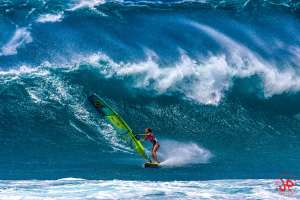
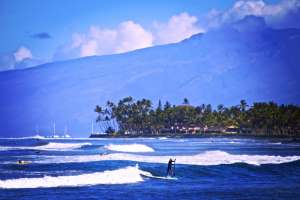 Autumn and Spring are the Goldilock Seasons: Not too hot, not too cold, not too big and just enough wind. There’s surf on all sides of the island. The wind blows steady on the north shore and Maui becomes center stage for insane windsurfing and kiting acrobats in the waves while there still remains radical Standup Paddling downwinders in manageable surf for those who like to feel charged up on a buzz of excitement.
Autumn and Spring are the Goldilock Seasons: Not too hot, not too cold, not too big and just enough wind. There’s surf on all sides of the island. The wind blows steady on the north shore and Maui becomes center stage for insane windsurfing and kiting acrobats in the waves while there still remains radical Standup Paddling downwinders in manageable surf for those who like to feel charged up on a buzz of excitement.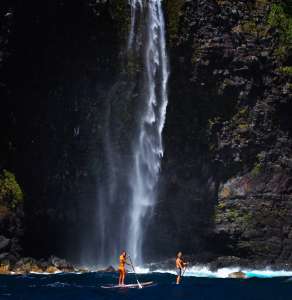 Meanwhile Hawaii’s deep connected history with the ocean, outrigger canoes and surfing made it the perfect petrie dish for the creation of Standup Paddle Boarding.
Meanwhile Hawaii’s deep connected history with the ocean, outrigger canoes and surfing made it the perfect petrie dish for the creation of Standup Paddle Boarding.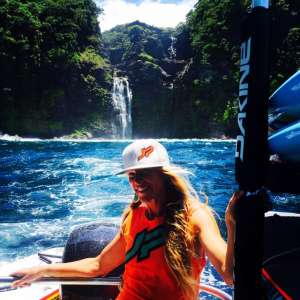 It’s also interesting to read in Wikipedia in regards of windsurfing that throughout history
It’s also interesting to read in Wikipedia in regards of windsurfing that throughout history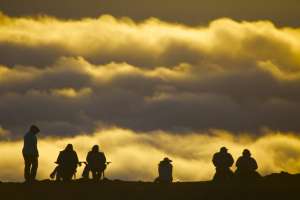 I like the SUP to whisk me away on insane experiences outside of the routine, secret places and coves. Aqua trekking water ways where I can get away from it all. It’s my ticket to freedom and into the heart of the liquid outdoors.
I like the SUP to whisk me away on insane experiences outside of the routine, secret places and coves. Aqua trekking water ways where I can get away from it all. It’s my ticket to freedom and into the heart of the liquid outdoors.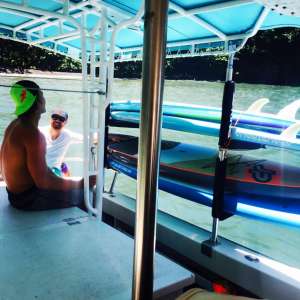 We glided smoothly through the early morning butter. The world gleamed a turquoise and gold like only the earliest hours of the days can glow. I sighed in relief, patting myself on the back for choosing the right day for this kind excursion. Well, until we rounded the corner and the once perfect glassy waves, (I was kicking myself for not surfing) turned into a a sea in turmoil; as the winds picked up and the chop on crests over troughs pounded the hull of the boat. We held on to steady our gaits in await for spine jarring hits. It definitely turned into an outing not for the faint hearted, some of us turned green and began to puke over the edge.
We glided smoothly through the early morning butter. The world gleamed a turquoise and gold like only the earliest hours of the days can glow. I sighed in relief, patting myself on the back for choosing the right day for this kind excursion. Well, until we rounded the corner and the once perfect glassy waves, (I was kicking myself for not surfing) turned into a a sea in turmoil; as the winds picked up and the chop on crests over troughs pounded the hull of the boat. We held on to steady our gaits in await for spine jarring hits. It definitely turned into an outing not for the faint hearted, some of us turned green and began to puke over the edge.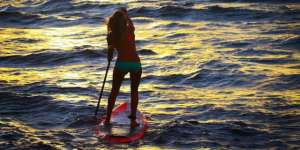 We were dropped off where the world ends, where the sheer distance, size and expanse of the Pacific hurls itself against the timeless weathered cliffs. The ocean is a boiling cauldron of bubbles and foam underfoot as the waves backwash against the giant mountain’s feet to remind us there is no resting here. This was definitely an adventure for the capable paddler who is experienced in big rough seas. Our arms and thighs exploded and burned attempting to master the chaotic seas as we set down the coast.
We were dropped off where the world ends, where the sheer distance, size and expanse of the Pacific hurls itself against the timeless weathered cliffs. The ocean is a boiling cauldron of bubbles and foam underfoot as the waves backwash against the giant mountain’s feet to remind us there is no resting here. This was definitely an adventure for the capable paddler who is experienced in big rough seas. Our arms and thighs exploded and burned attempting to master the chaotic seas as we set down the coast.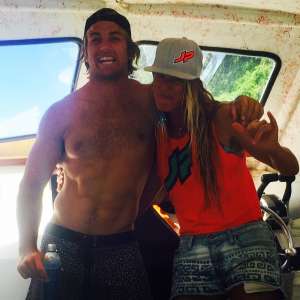
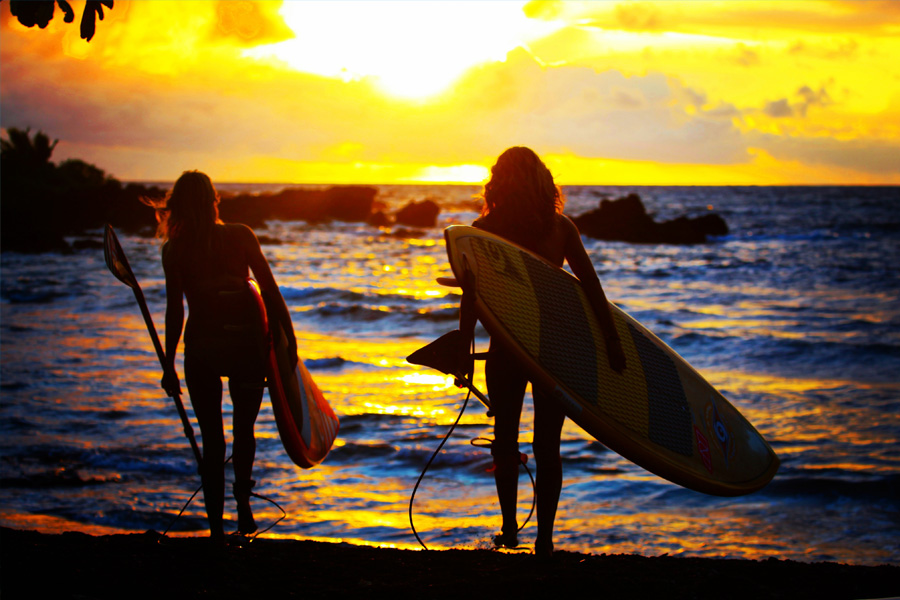

 It is at the junction whereHaiku meets the Hana Hwy where we make this decision. A place where we scan sea states for the days water activities from our perch on the hill over looking the expanse of the Pacific ocean ruffled by trade winds.
It is at the junction whereHaiku meets the Hana Hwy where we make this decision. A place where we scan sea states for the days water activities from our perch on the hill over looking the expanse of the Pacific ocean ruffled by trade winds. I am pleasantly surprised to pull-up to a classic deep Haiku surf style home. The interior is open spaced, wood, warm and welcoming. I half expected the walls to be covered in massive framed windsurfing covers and articles with crazy exotic artifacts all over the place. Instead Carine seems to exist entirely separated from her magazine persona. She is clearly a mom who’s busy running their lily farm and providing local businesses with flowers when she was not on the water catching waves. The interior of her home is relaxed with snap shot photos and art work pinned casually to the walls, while a ‘wild disarray’ of running after a young child permeates the decor. There is even the classic photo of their youngest daughter buried up to her neck in sand, taped on the fridge door. Her living space is completely egoless revealing little of Carine and Manu’s Windsurf/SUP magazine personalities.
I am pleasantly surprised to pull-up to a classic deep Haiku surf style home. The interior is open spaced, wood, warm and welcoming. I half expected the walls to be covered in massive framed windsurfing covers and articles with crazy exotic artifacts all over the place. Instead Carine seems to exist entirely separated from her magazine persona. She is clearly a mom who’s busy running their lily farm and providing local businesses with flowers when she was not on the water catching waves. The interior of her home is relaxed with snap shot photos and art work pinned casually to the walls, while a ‘wild disarray’ of running after a young child permeates the decor. There is even the classic photo of their youngest daughter buried up to her neck in sand, taped on the fridge door. Her living space is completely egoless revealing little of Carine and Manu’s Windsurf/SUP magazine personalities. Emma Starr joins us as well. We met surfing at Ho’okipa. She is an amphibious creature who finds her happy place in the ocean. Emma is the wild one, waking up in the middle of the night to catch up with us-
Emma Starr joins us as well. We met surfing at Ho’okipa. She is an amphibious creature who finds her happy place in the ocean. Emma is the wild one, waking up in the middle of the night to catch up with us- Setting out on the road in the dark just as the skies begin to warm makes it all feel more adventurous, wild and jungly. We are surrounded by thick impenetrable foliage, mostly untouched and un-trampled forest. We practically choke on the dense oxygenated air. It is incredibly quiet except for the sound of waking birds and the ever present dripping sounds of a coastal rain forests. Maui’s ‘giant living sponge’ has been created over millions of years of evolution.
Setting out on the road in the dark just as the skies begin to warm makes it all feel more adventurous, wild and jungly. We are surrounded by thick impenetrable foliage, mostly untouched and un-trampled forest. We practically choke on the dense oxygenated air. It is incredibly quiet except for the sound of waking birds and the ever present dripping sounds of a coastal rain forests. Maui’s ‘giant living sponge’ has been created over millions of years of evolution. It’s a “soul-cations”, where we rejuvenate our internal batteries and retreat more into Maui’s wilderness. We are ready for whatever comes our way. We take off to investigate quiet coves, low hanging fauna and hidden beach. We are Ok to play in whatever the ocean elements offered up for the day. We caught a a couple perfect days of glassy surf all to ourselves. We found flat water venues with coves completely blocking out by the wind great for paddle boarding and snorkeling. We SUP-sailed in the light breezes small across the bay, while other days the sun only squeaked through the rain clouds for a few hours, where we all opted to swim at an exotic sheltered red sand beach where fresh water spring well up in the ocean which created ethereal glowing turquoise reflections.
It’s a “soul-cations”, where we rejuvenate our internal batteries and retreat more into Maui’s wilderness. We are ready for whatever comes our way. We take off to investigate quiet coves, low hanging fauna and hidden beach. We are Ok to play in whatever the ocean elements offered up for the day. We caught a a couple perfect days of glassy surf all to ourselves. We found flat water venues with coves completely blocking out by the wind great for paddle boarding and snorkeling. We SUP-sailed in the light breezes small across the bay, while other days the sun only squeaked through the rain clouds for a few hours, where we all opted to swim at an exotic sheltered red sand beach where fresh water spring well up in the ocean which created ethereal glowing turquoise reflections. There are no surf, SUP or windsurf shops, no surf rentals and no lesson, but there is plenty of undeveloped tropical paradise. Locals do enforce a hush down on all secret treasures of the area, whether it is their pumping surf locations, cool fresh water spring caves or special beaches. Nothing is signed posted and locals are not jumping up to show us the way. It is obvious that tourist are just barely tolerated.
There are no surf, SUP or windsurf shops, no surf rentals and no lesson, but there is plenty of undeveloped tropical paradise. Locals do enforce a hush down on all secret treasures of the area, whether it is their pumping surf locations, cool fresh water spring caves or special beaches. Nothing is signed posted and locals are not jumping up to show us the way. It is obvious that tourist are just barely tolerated.

